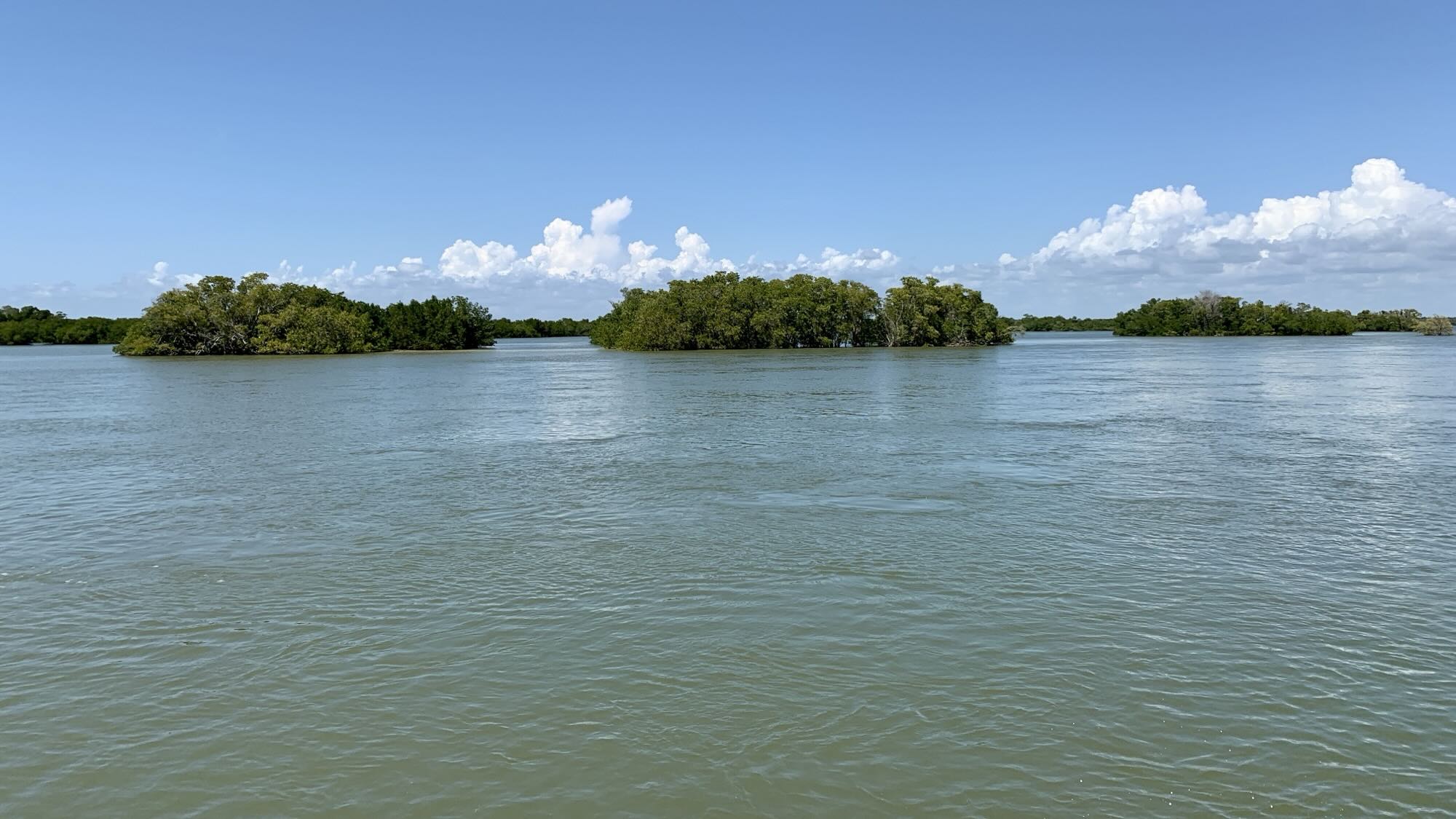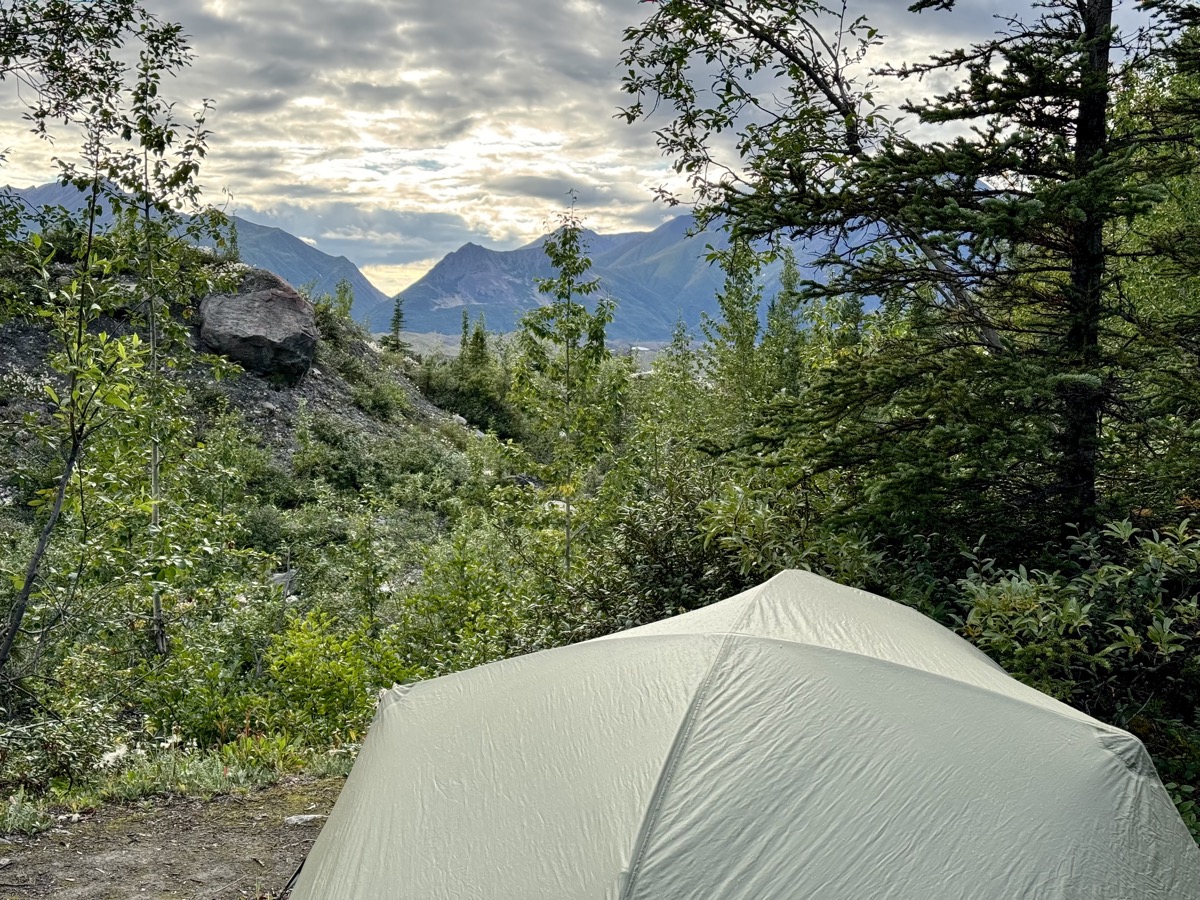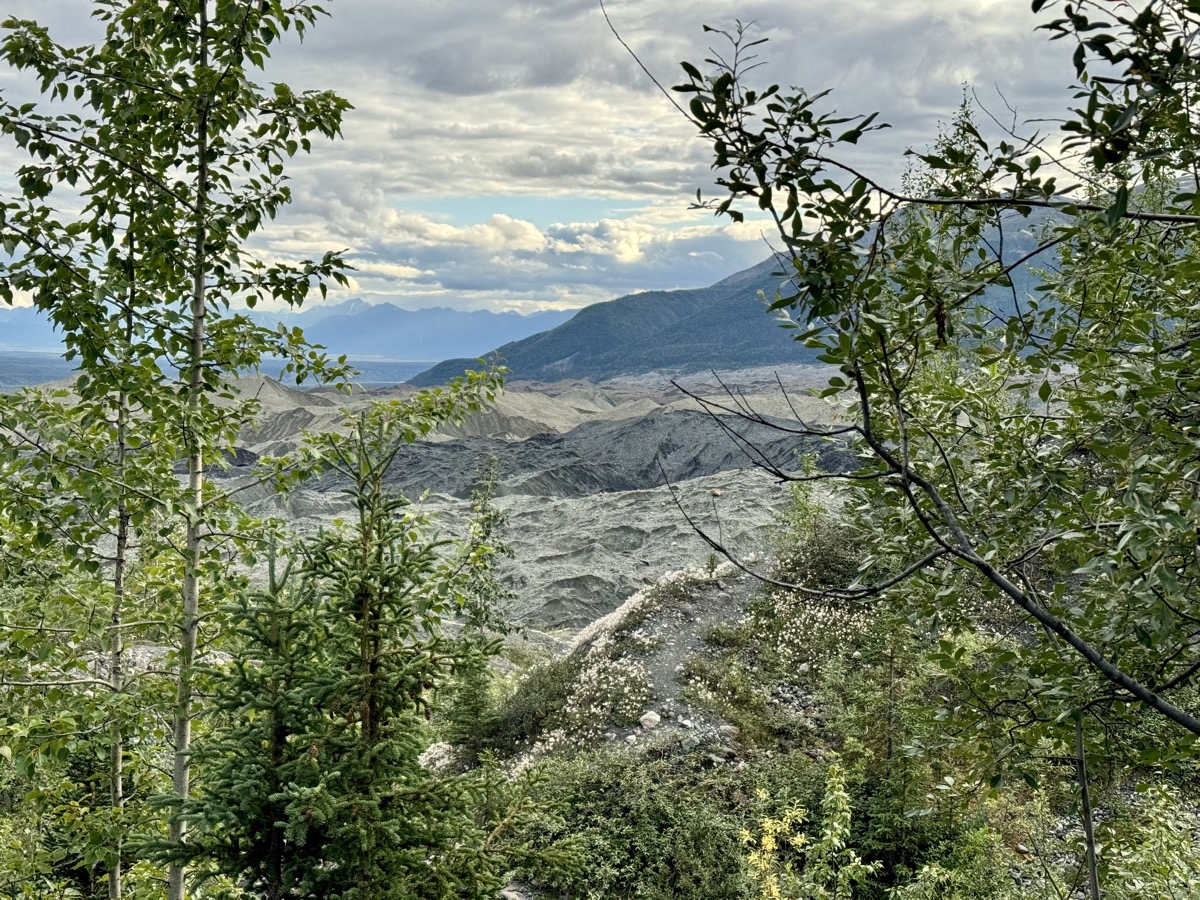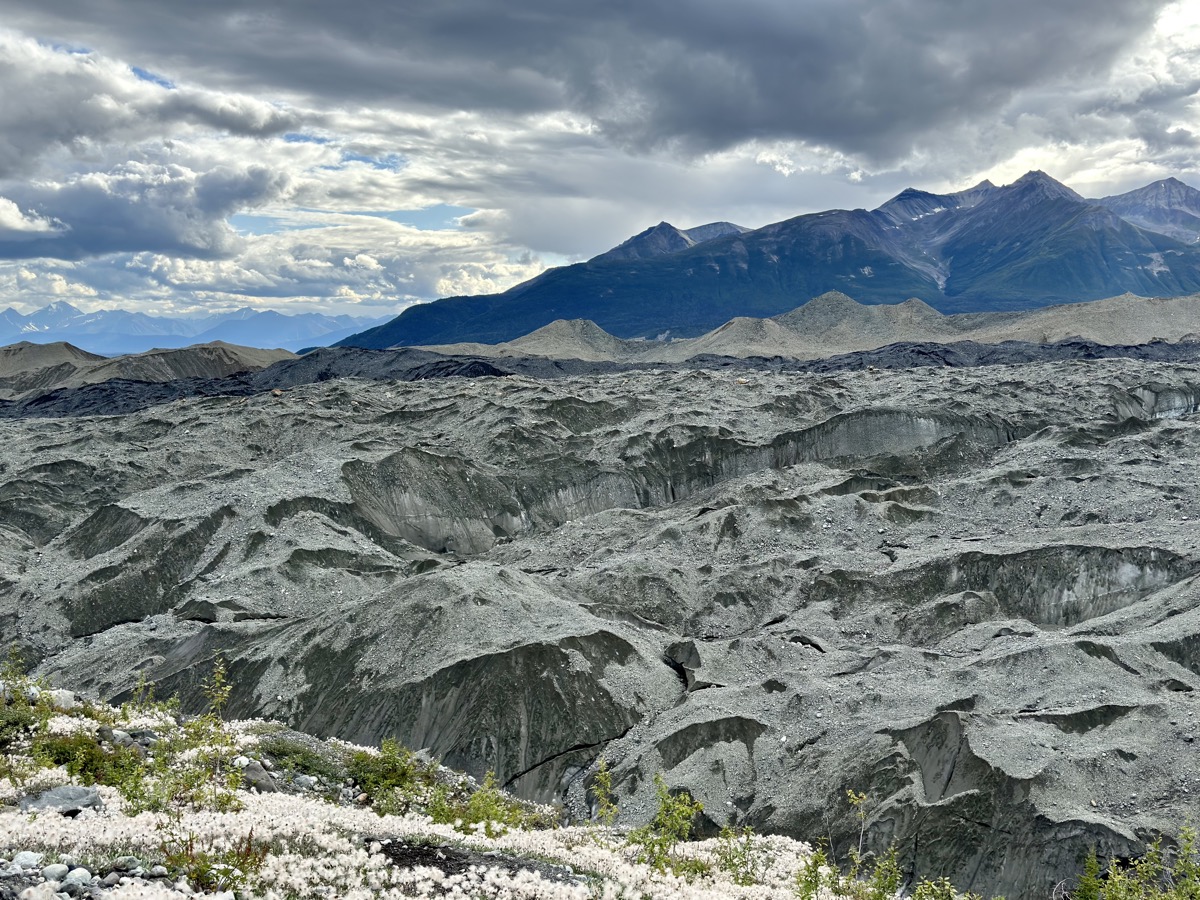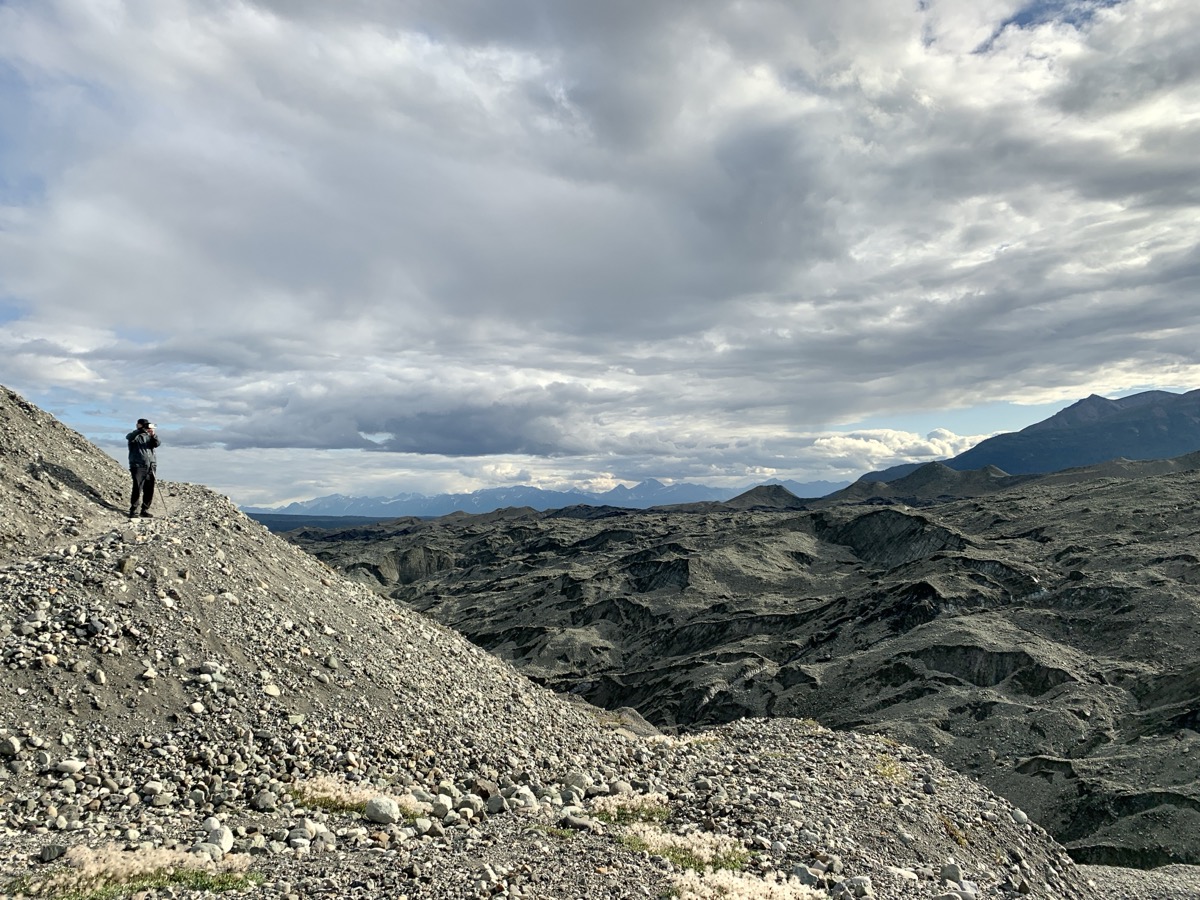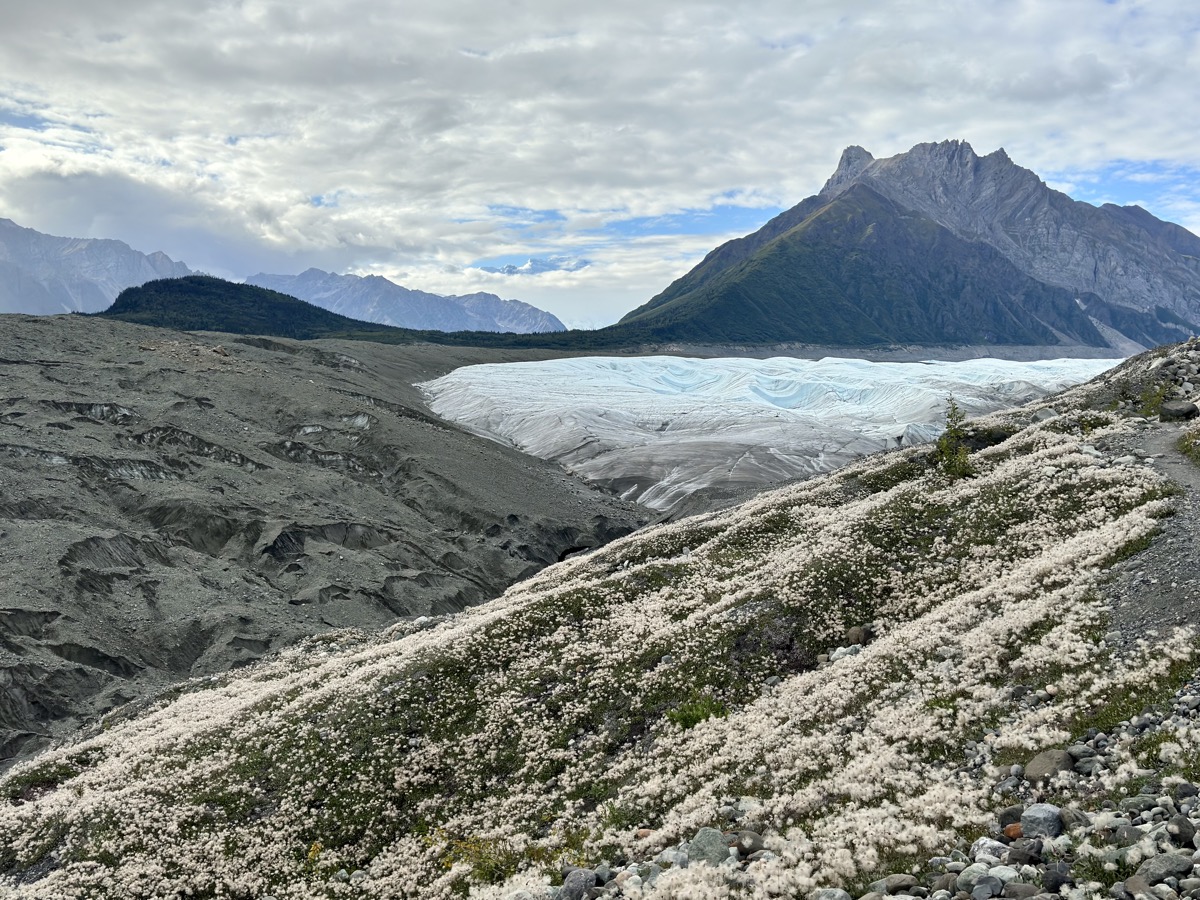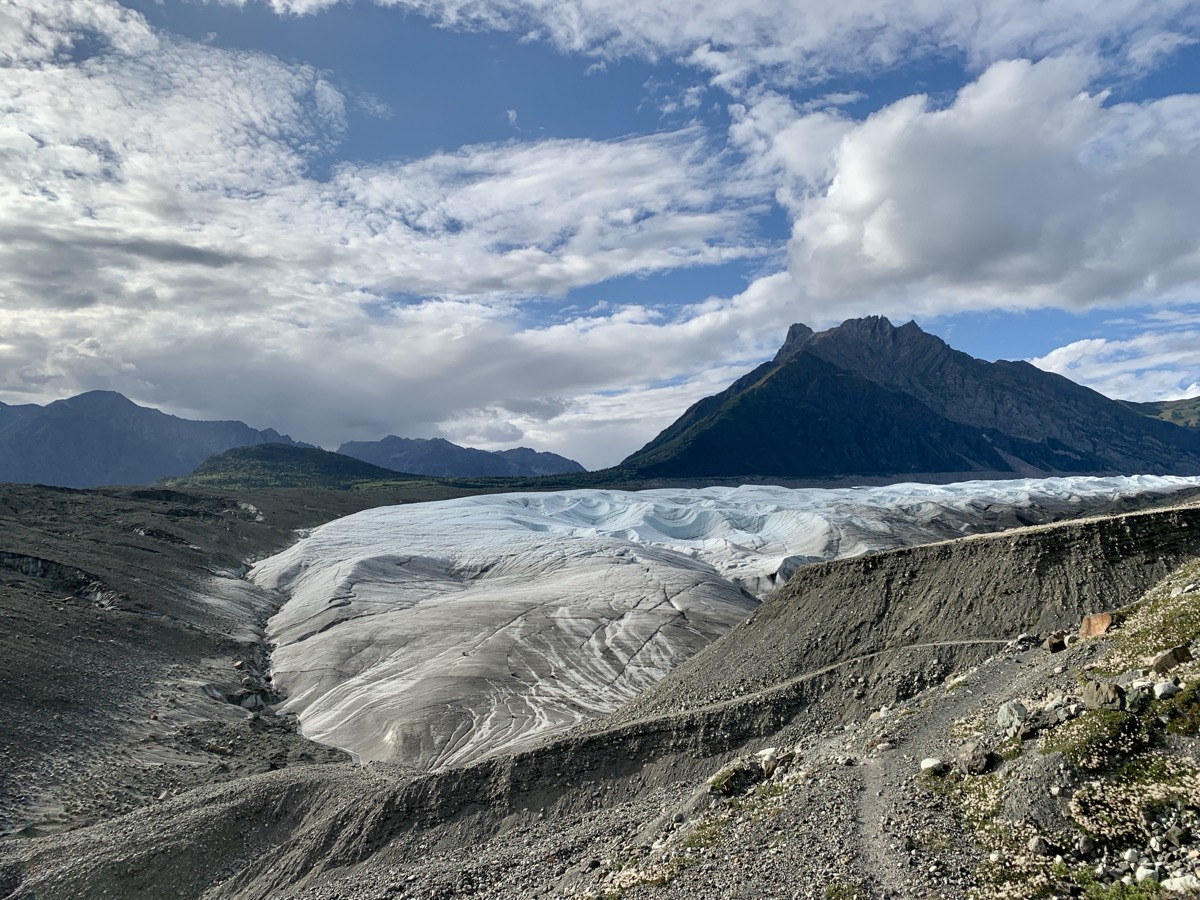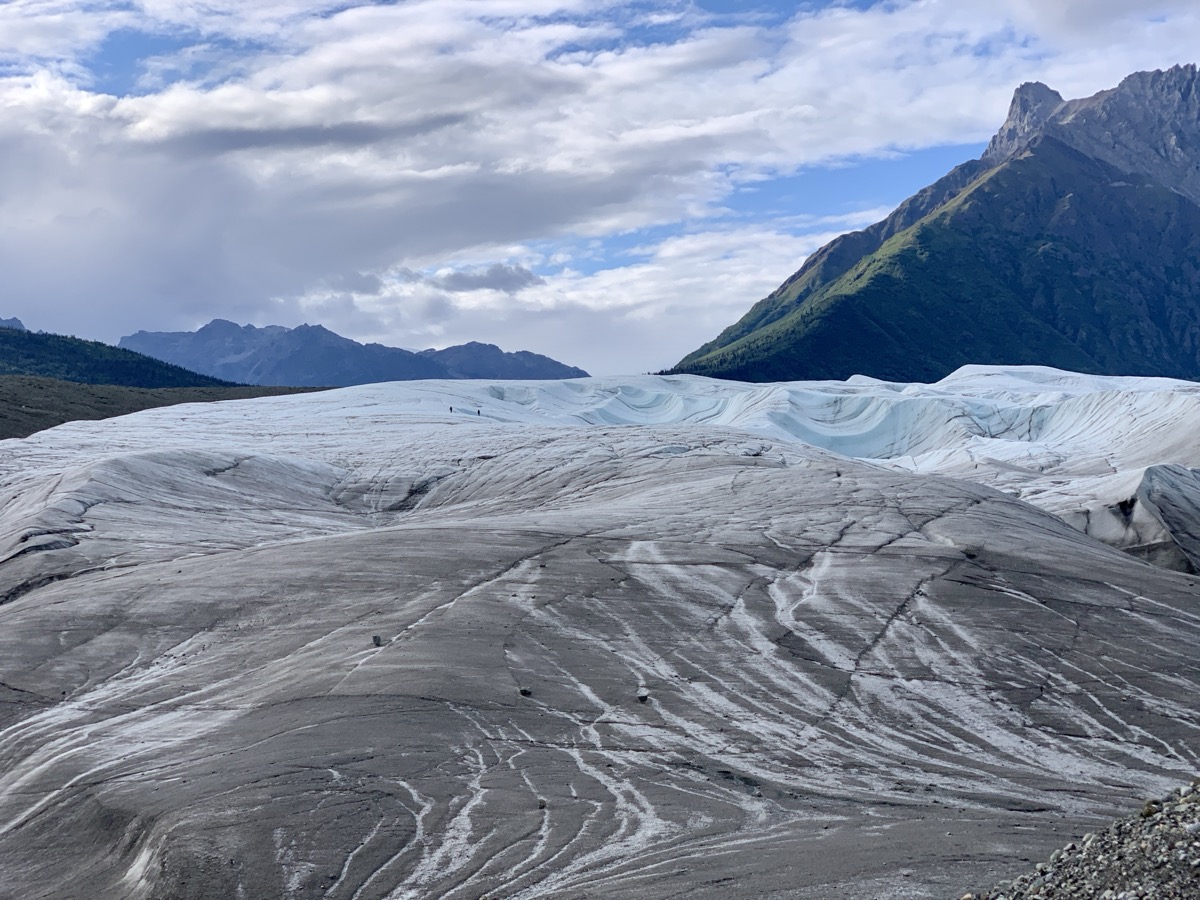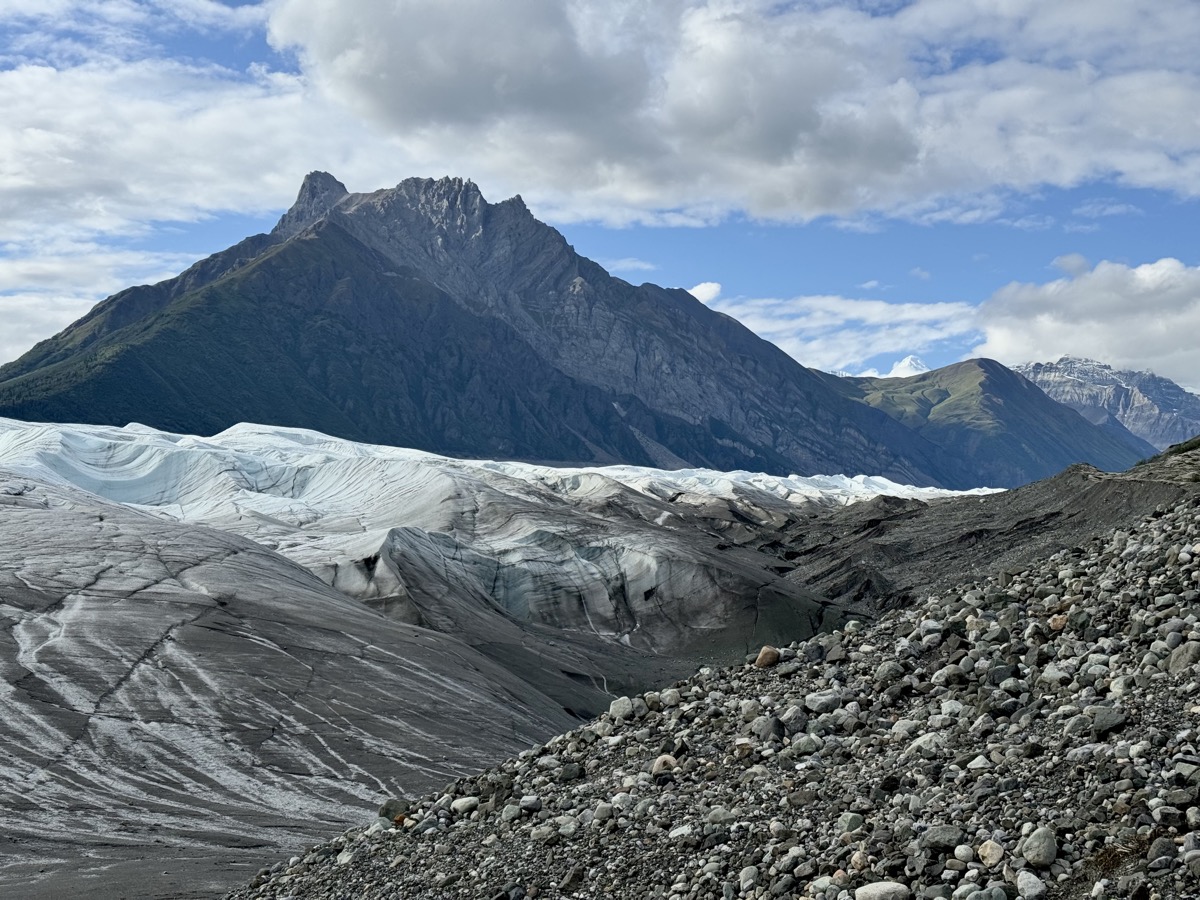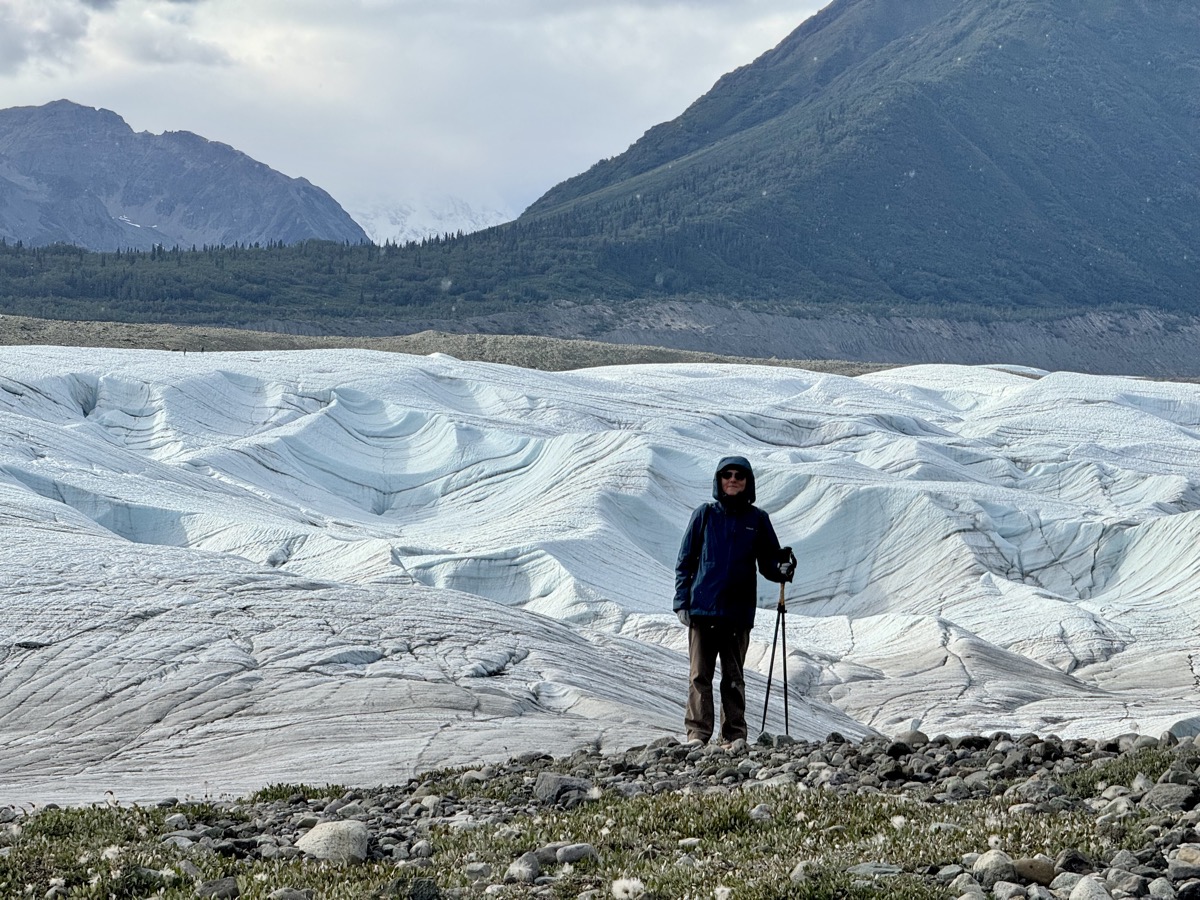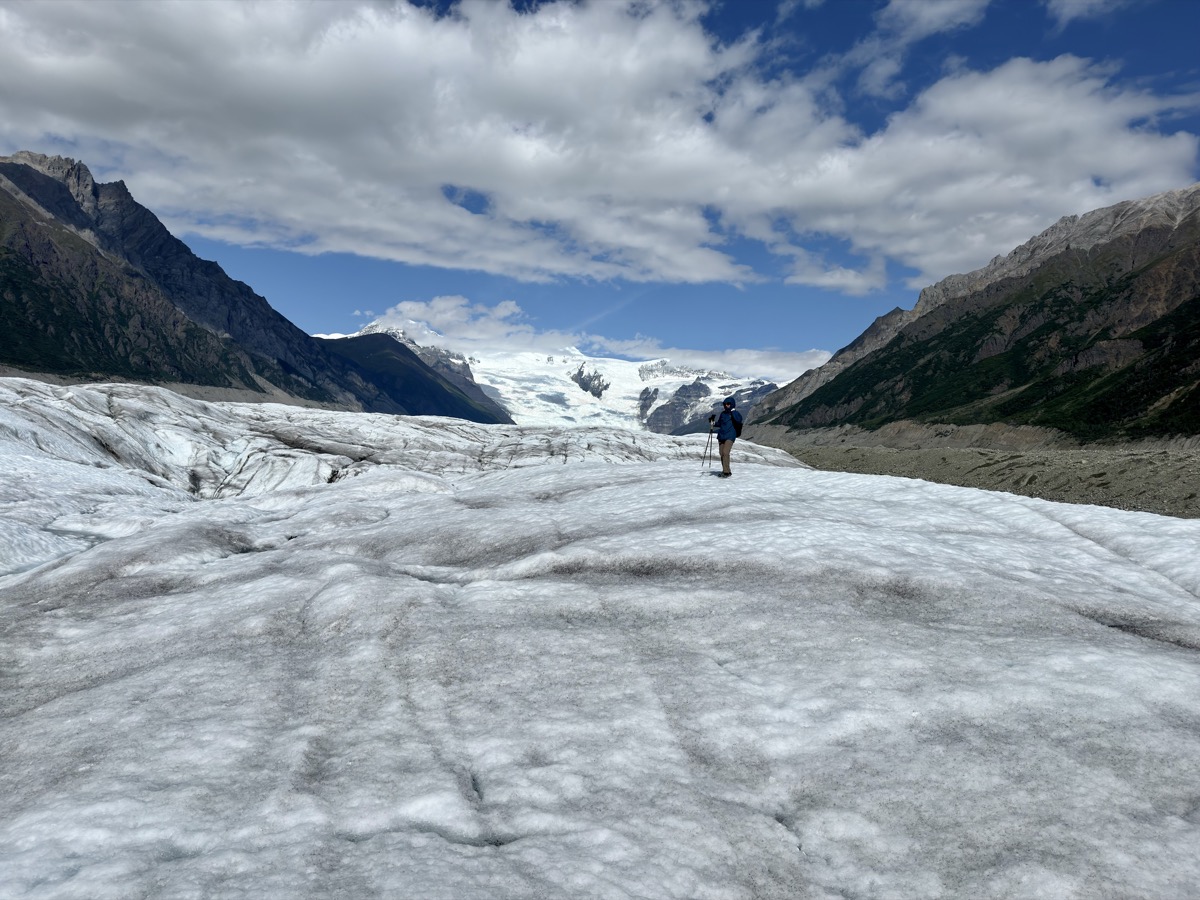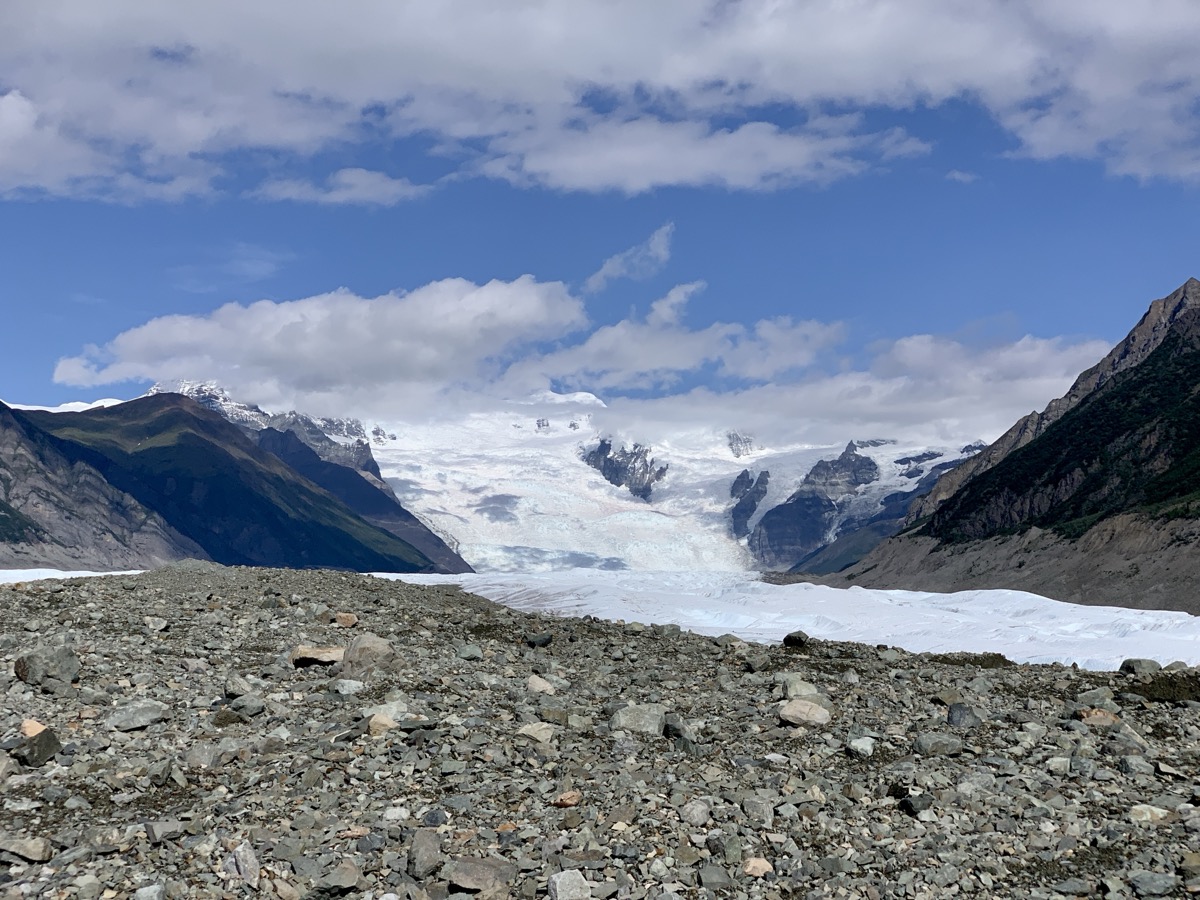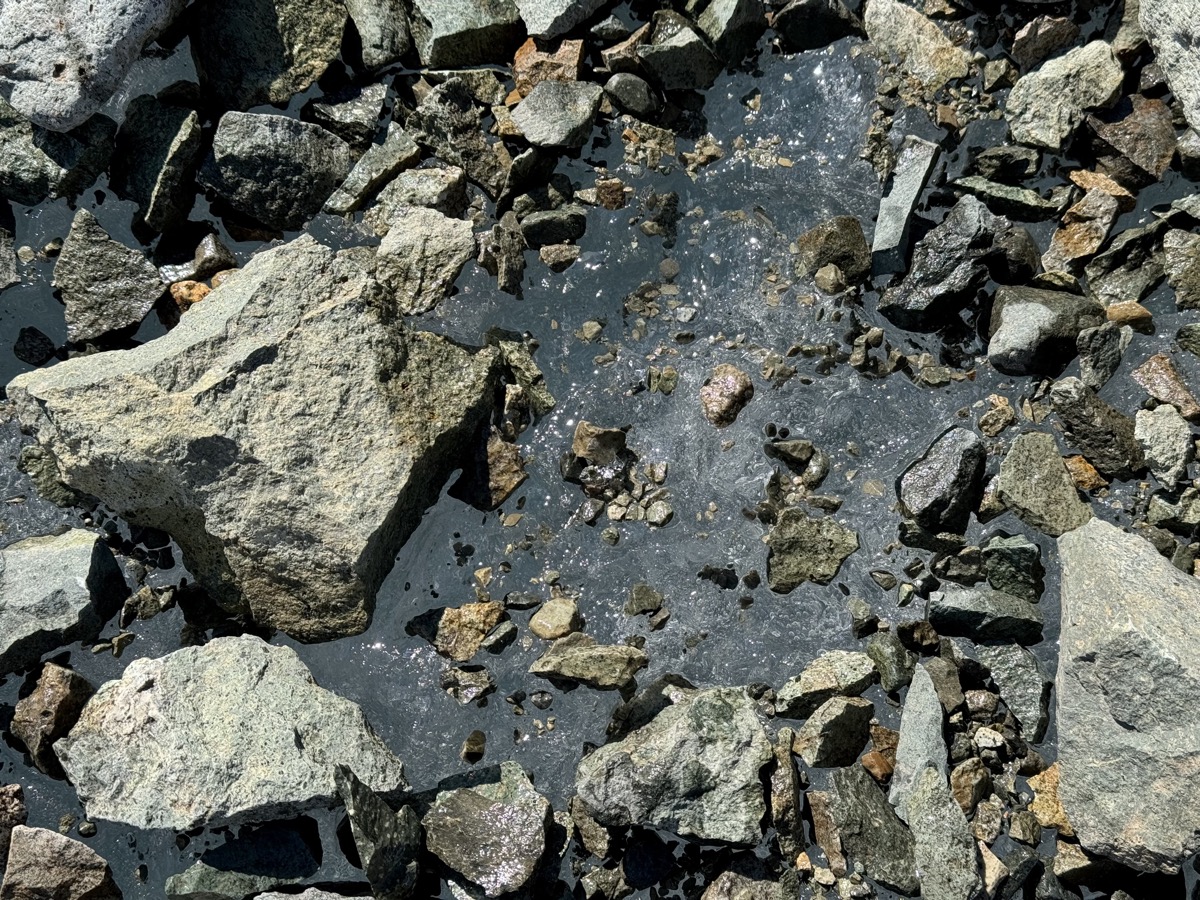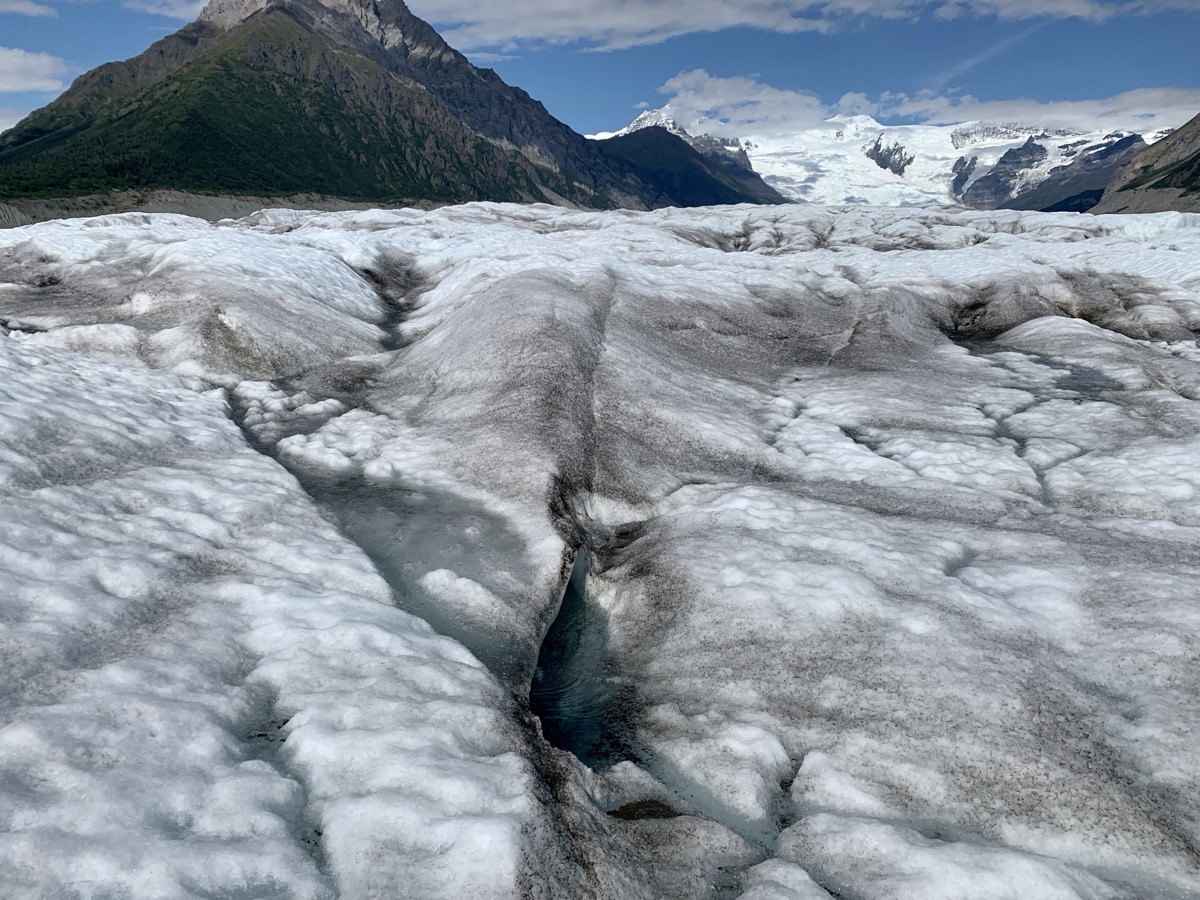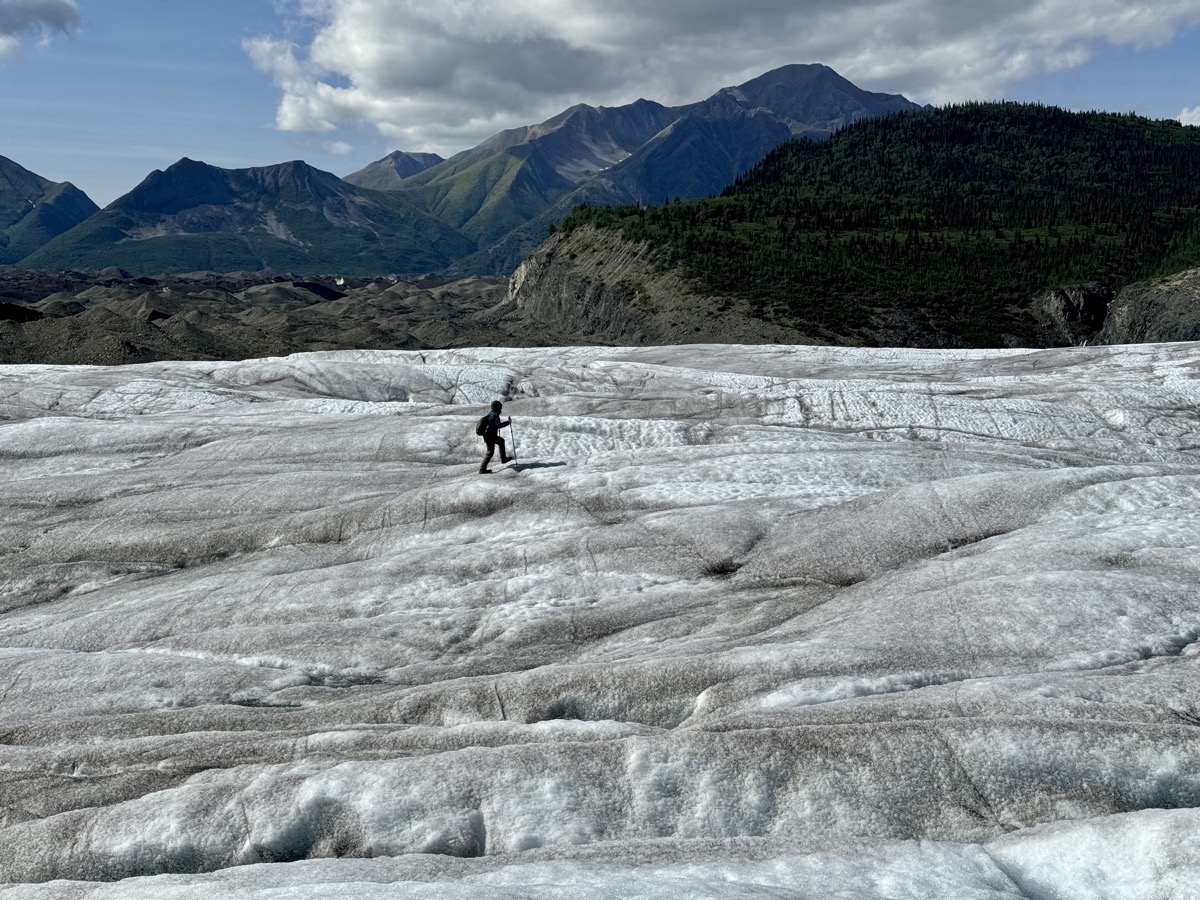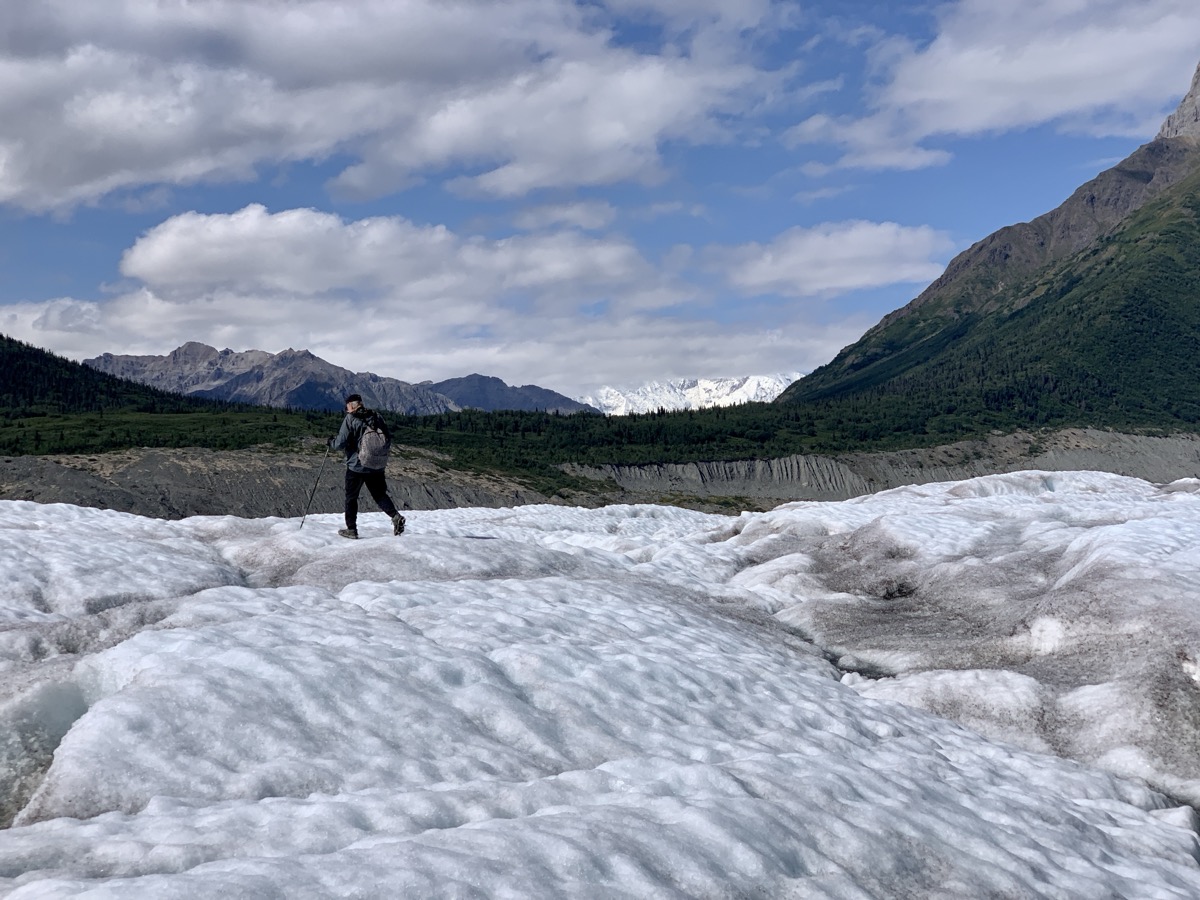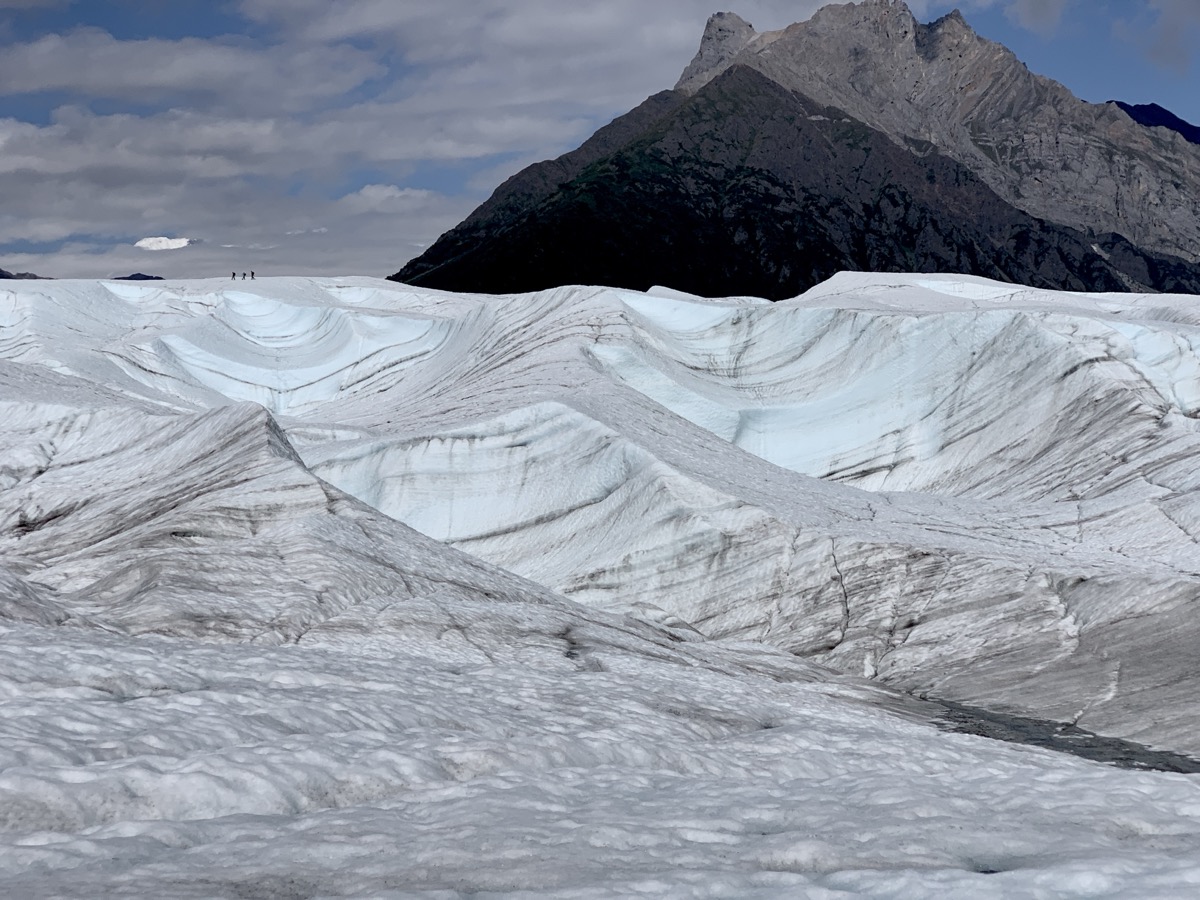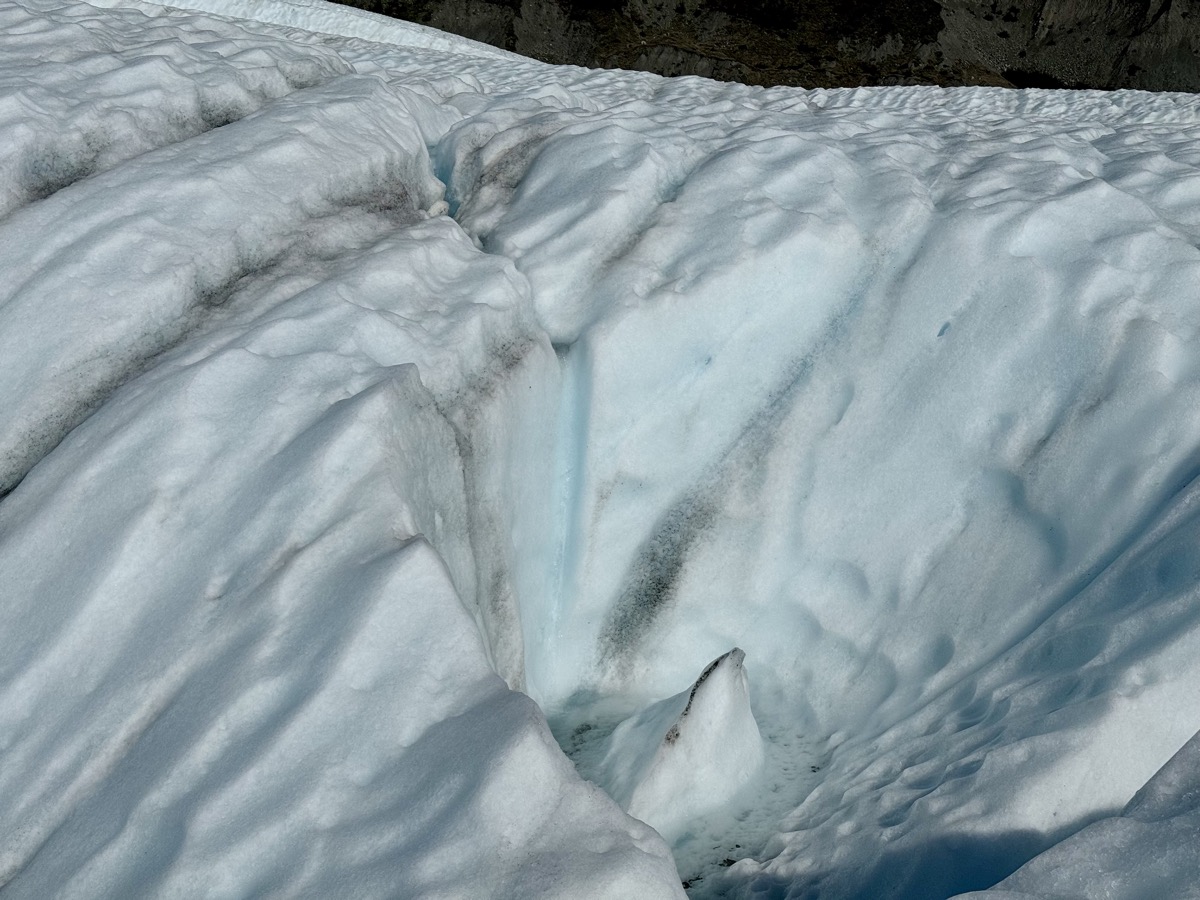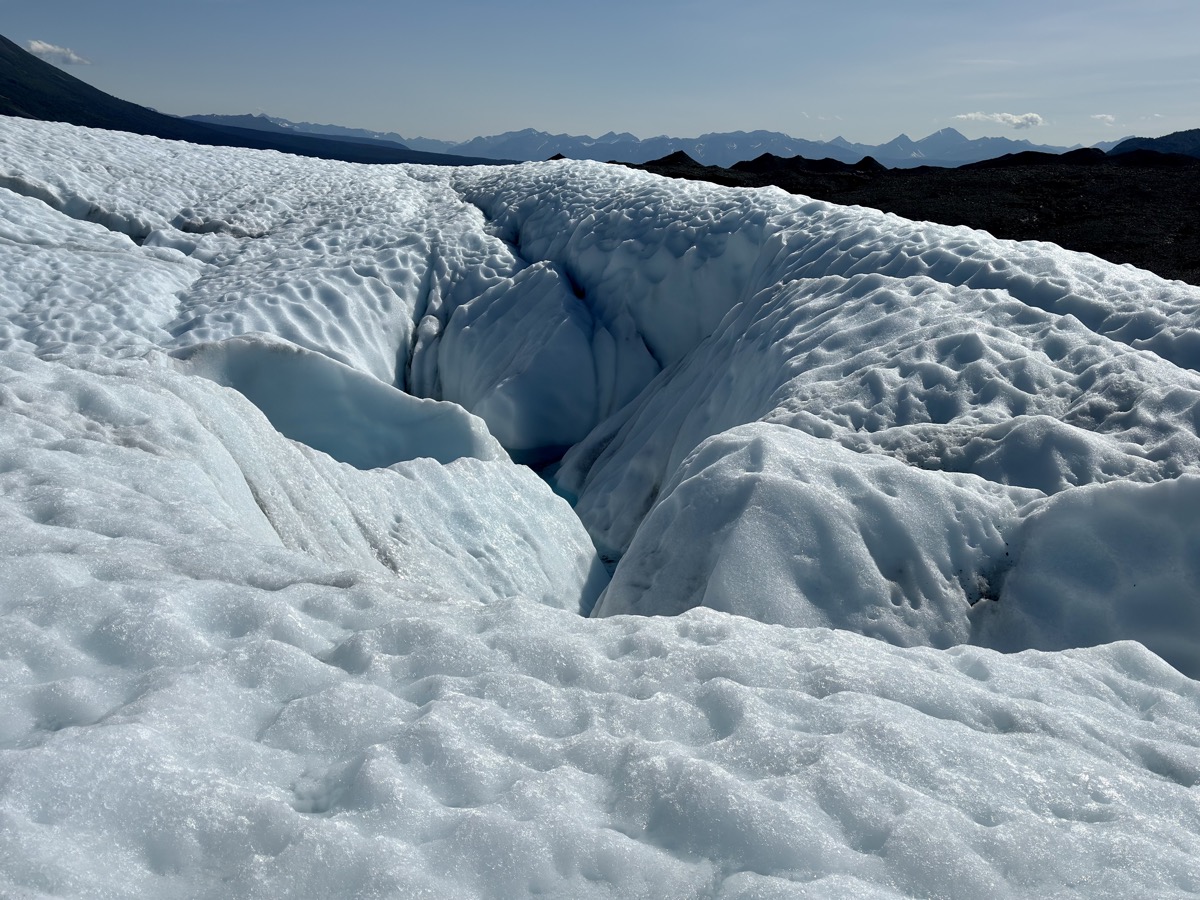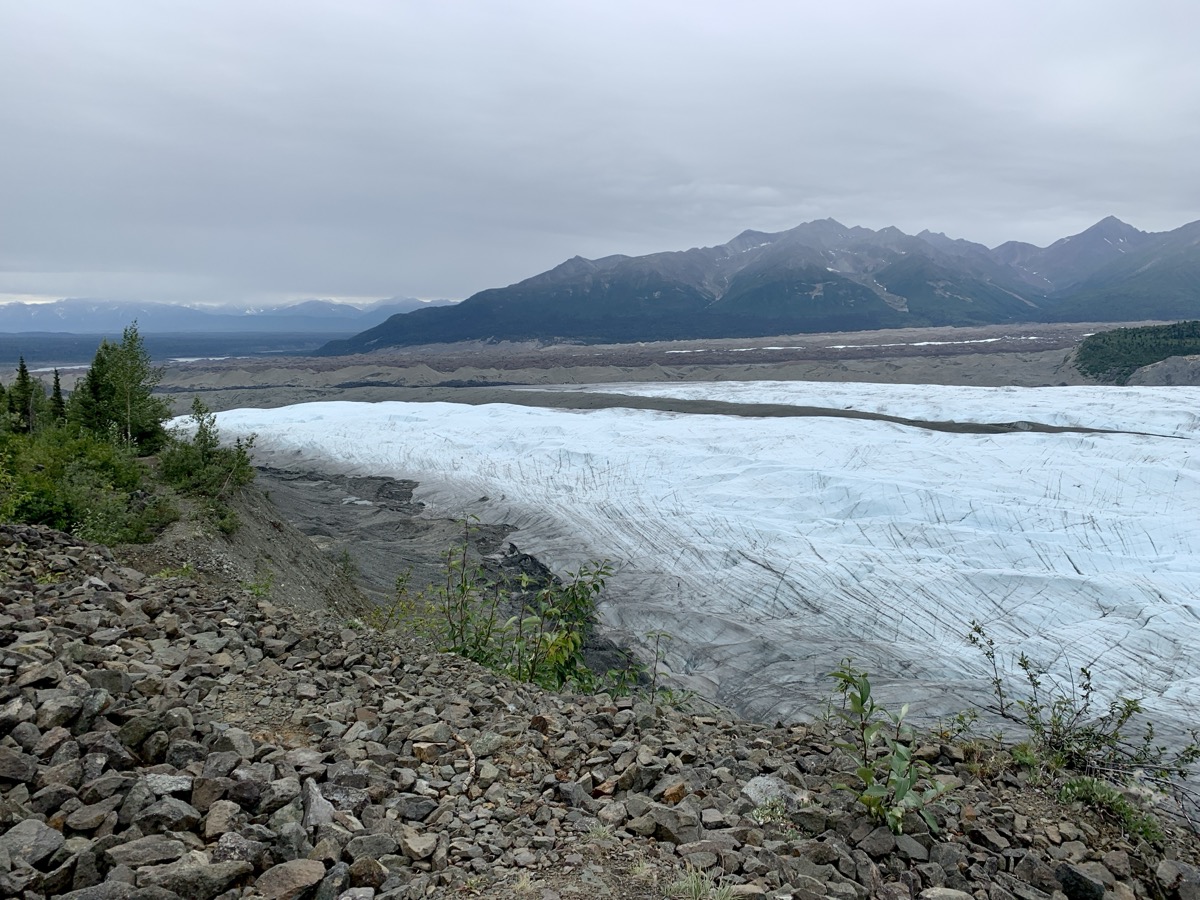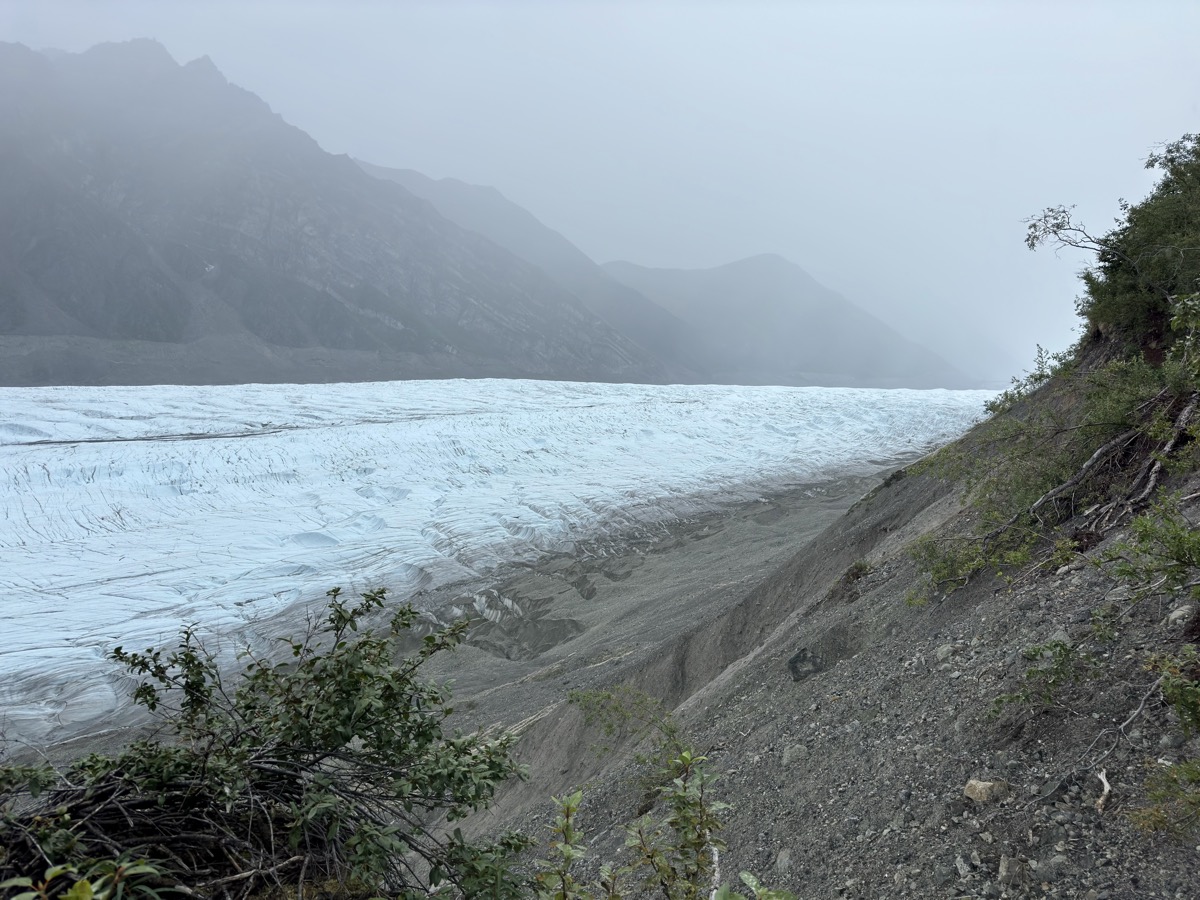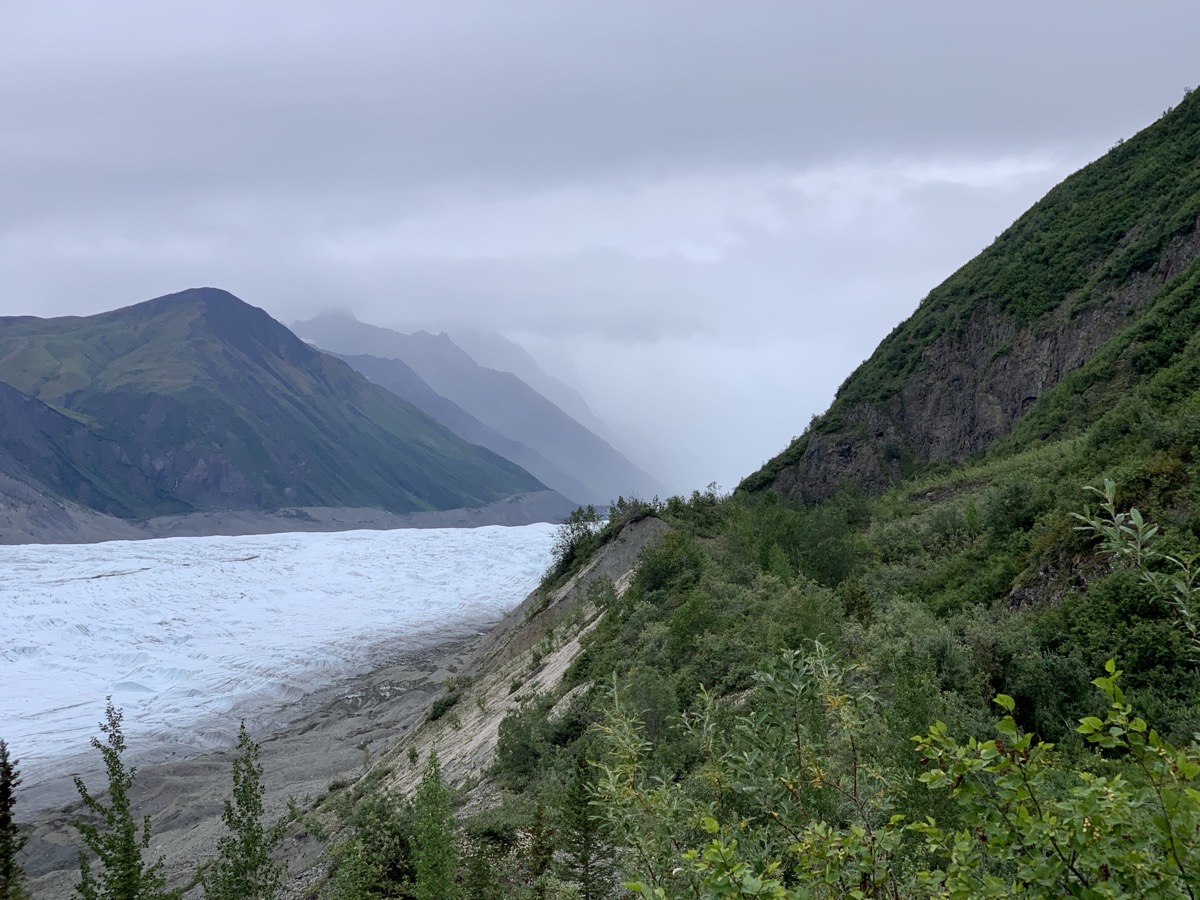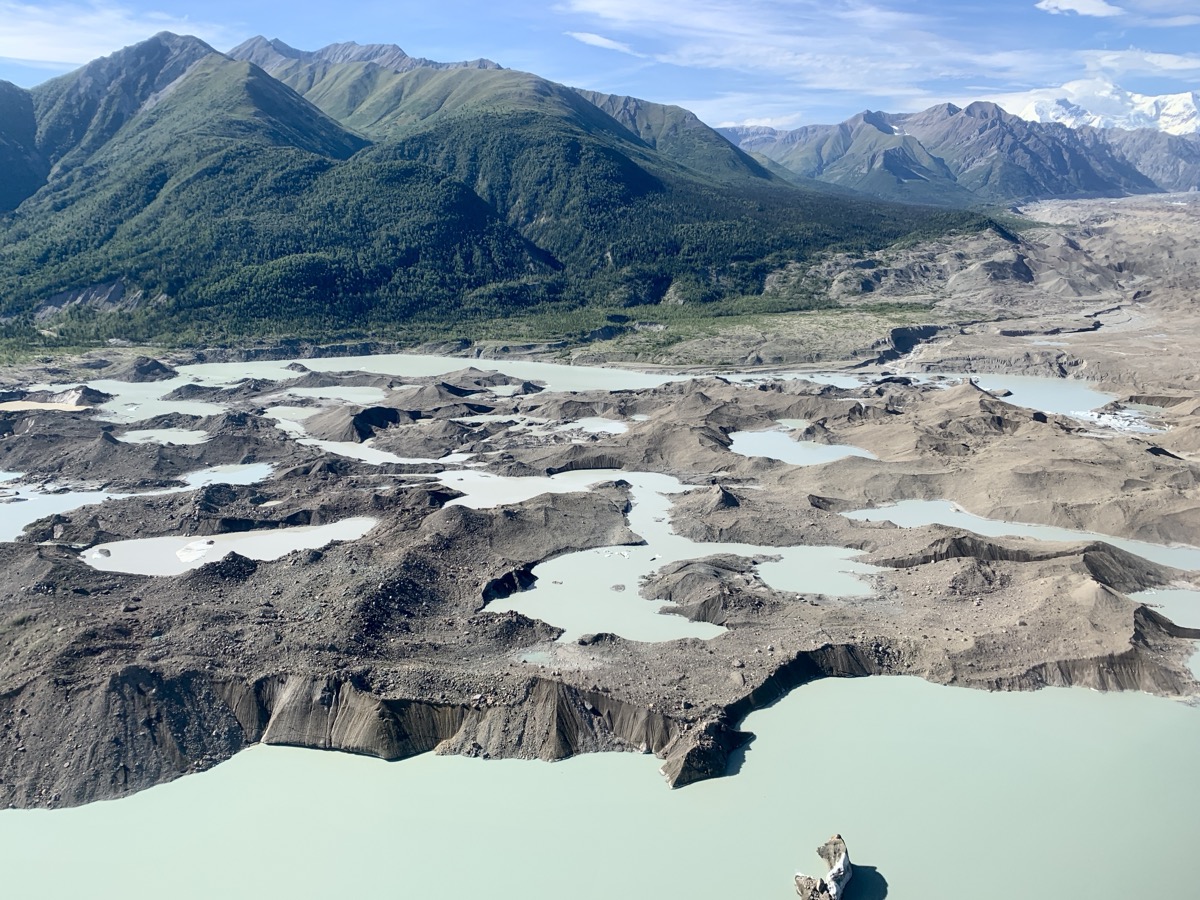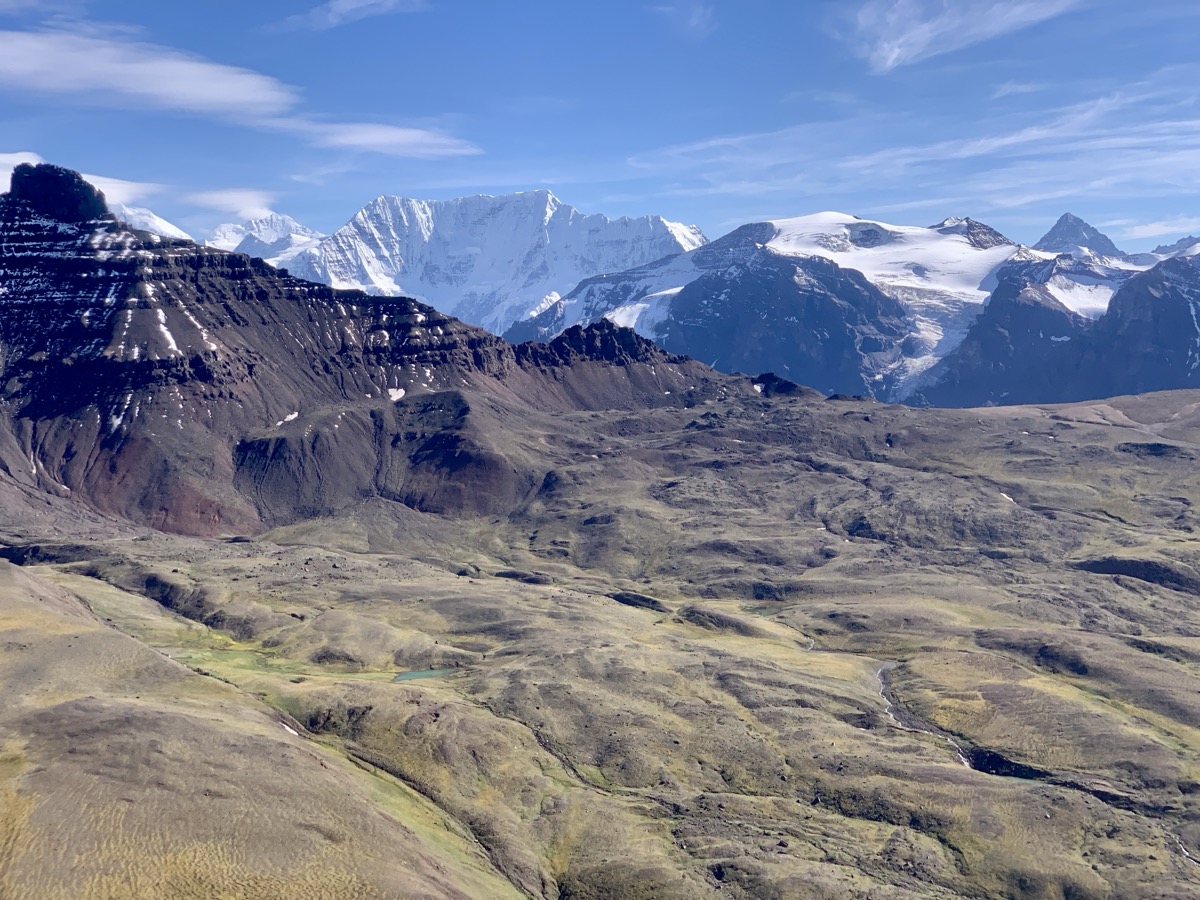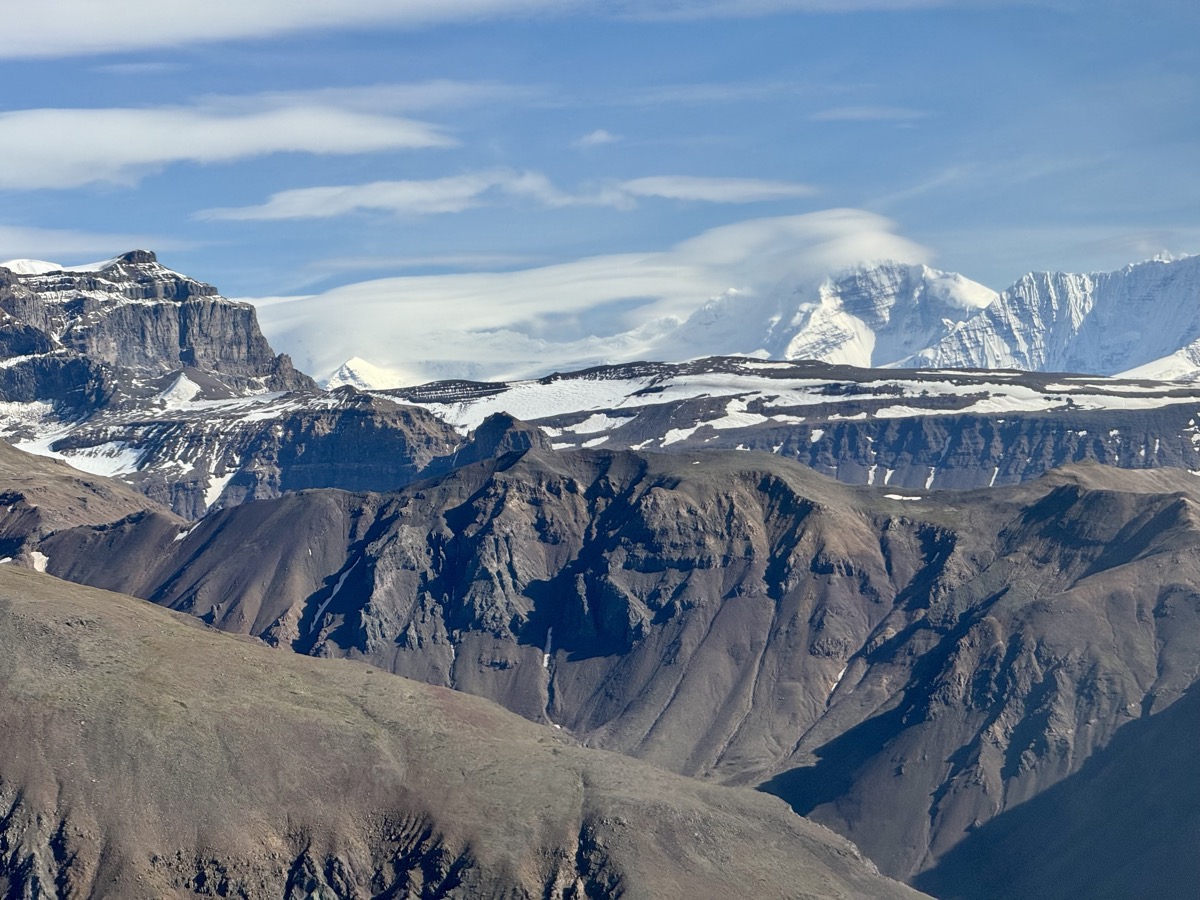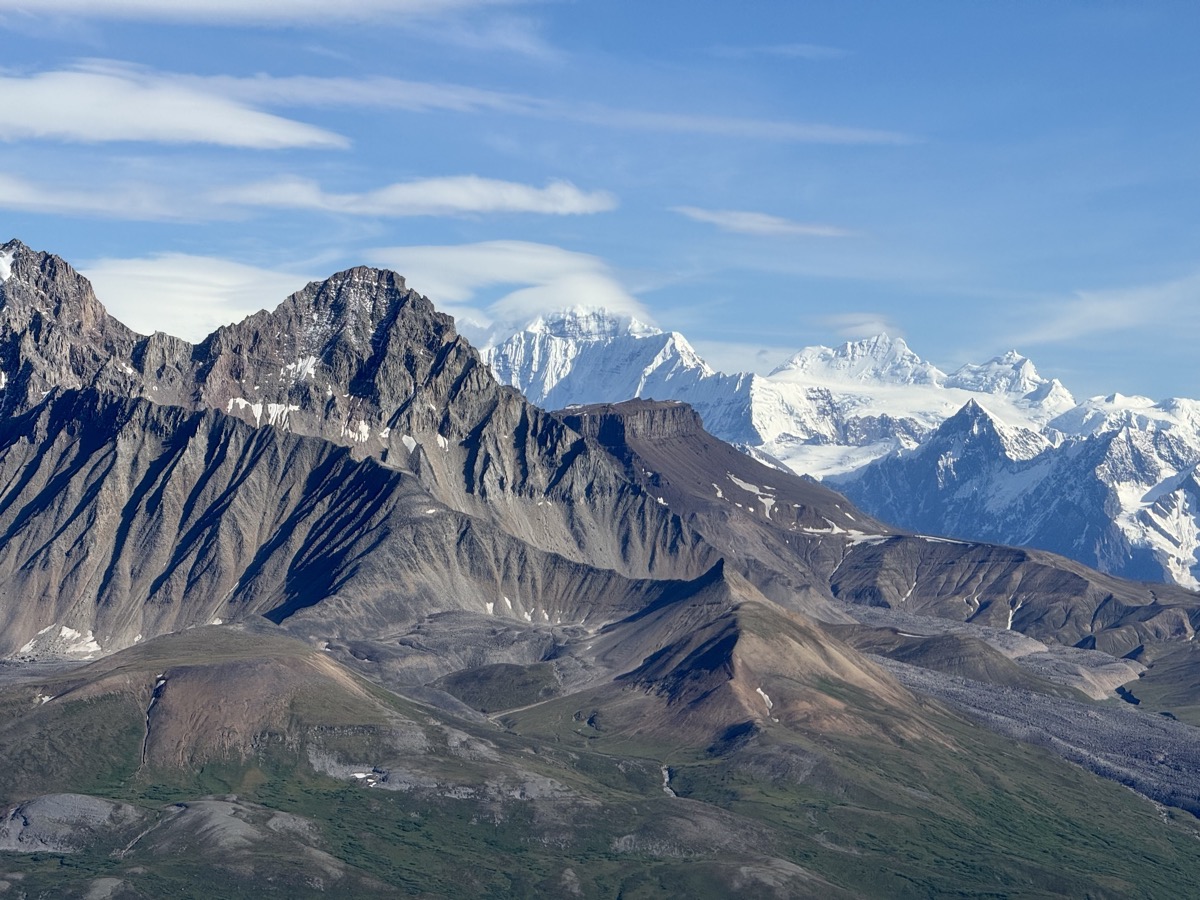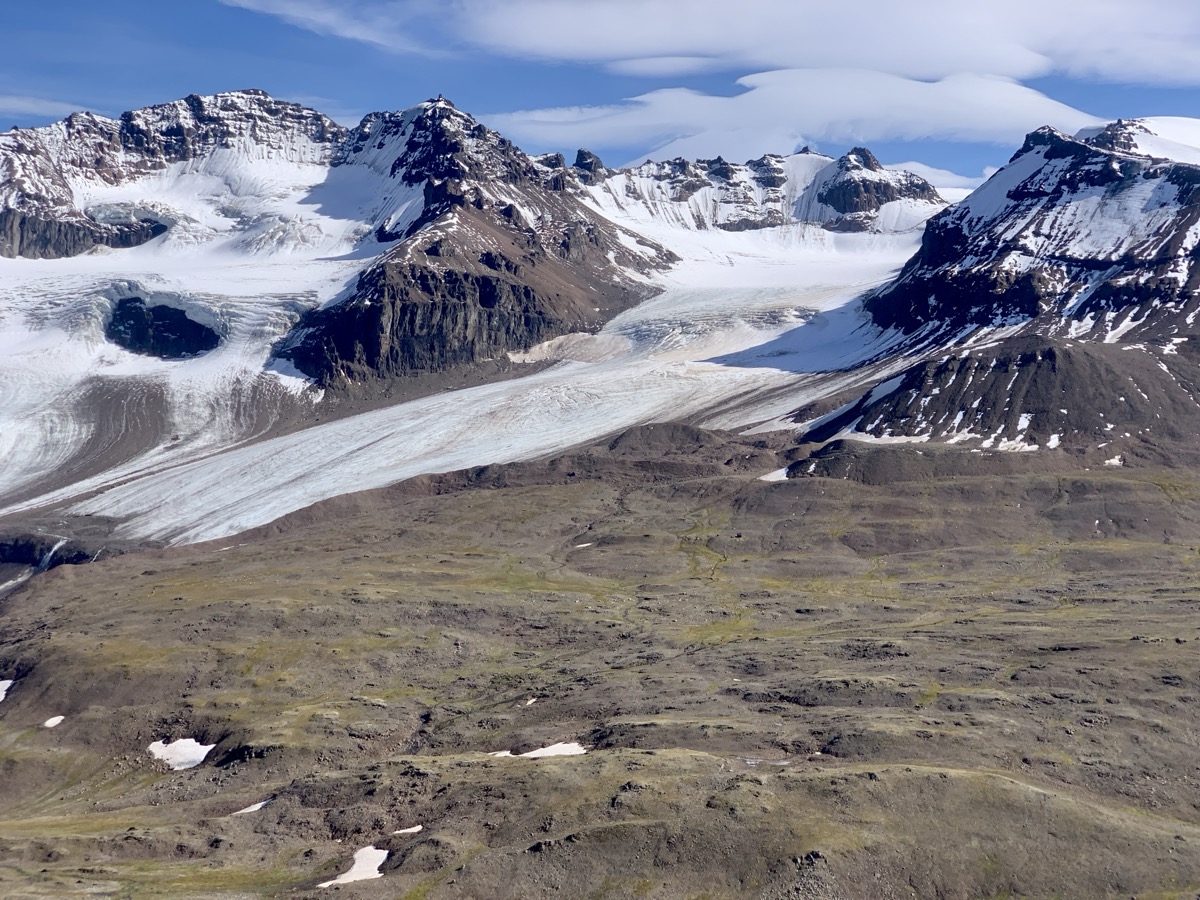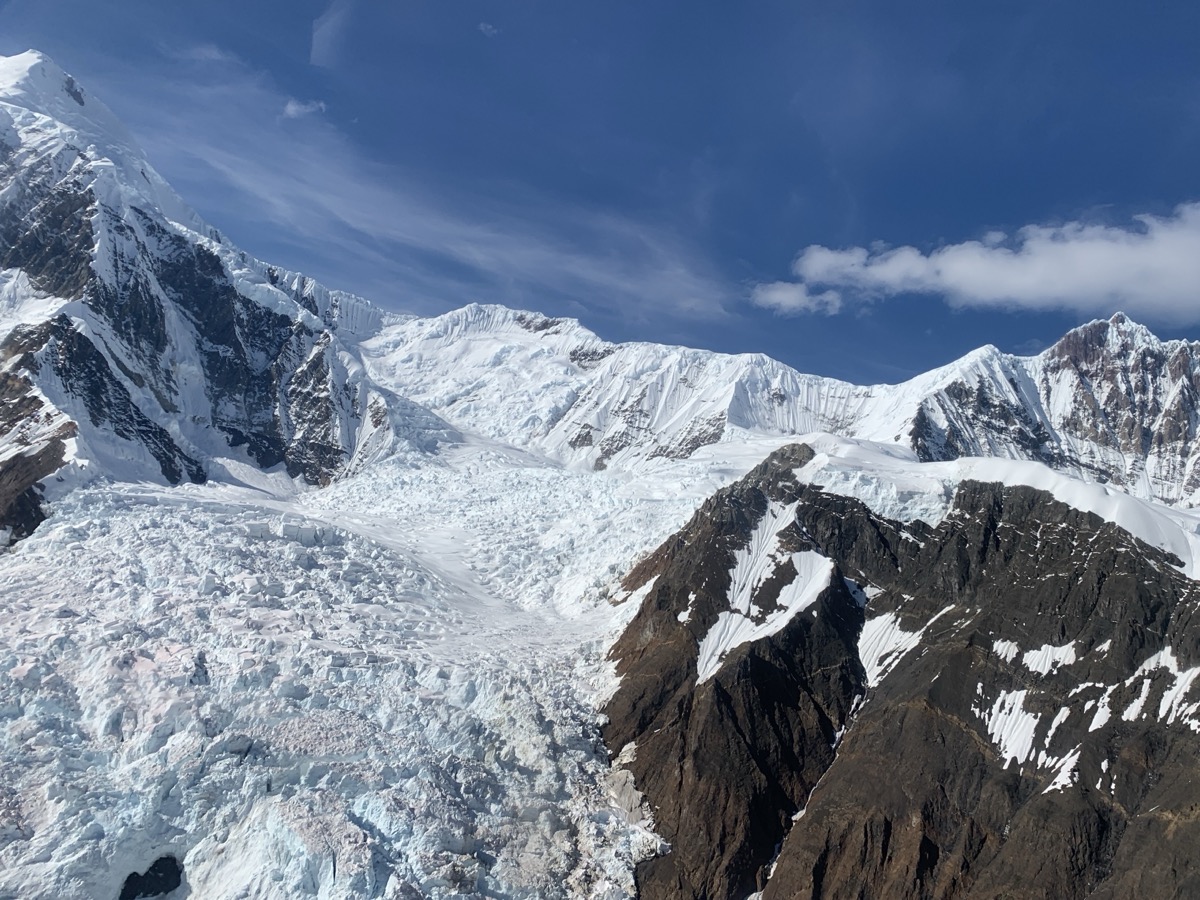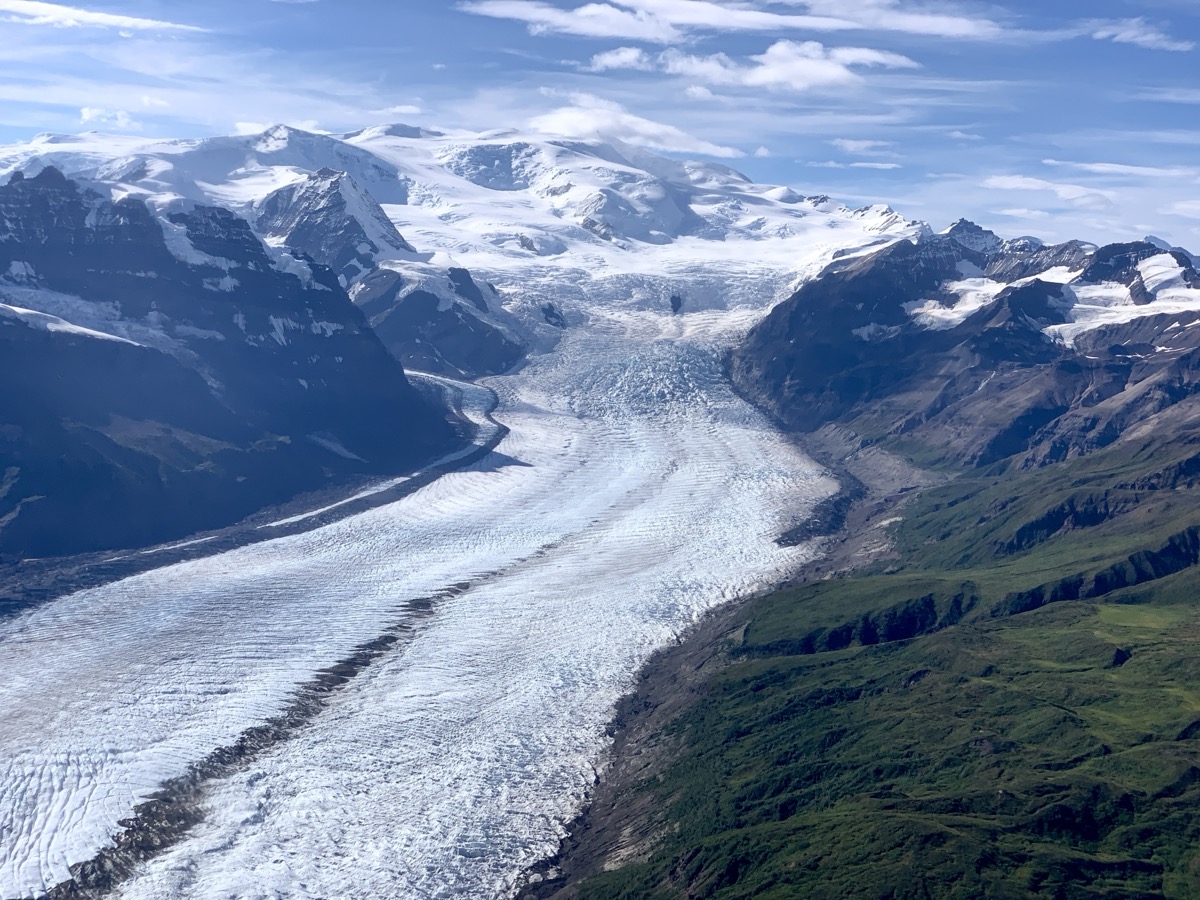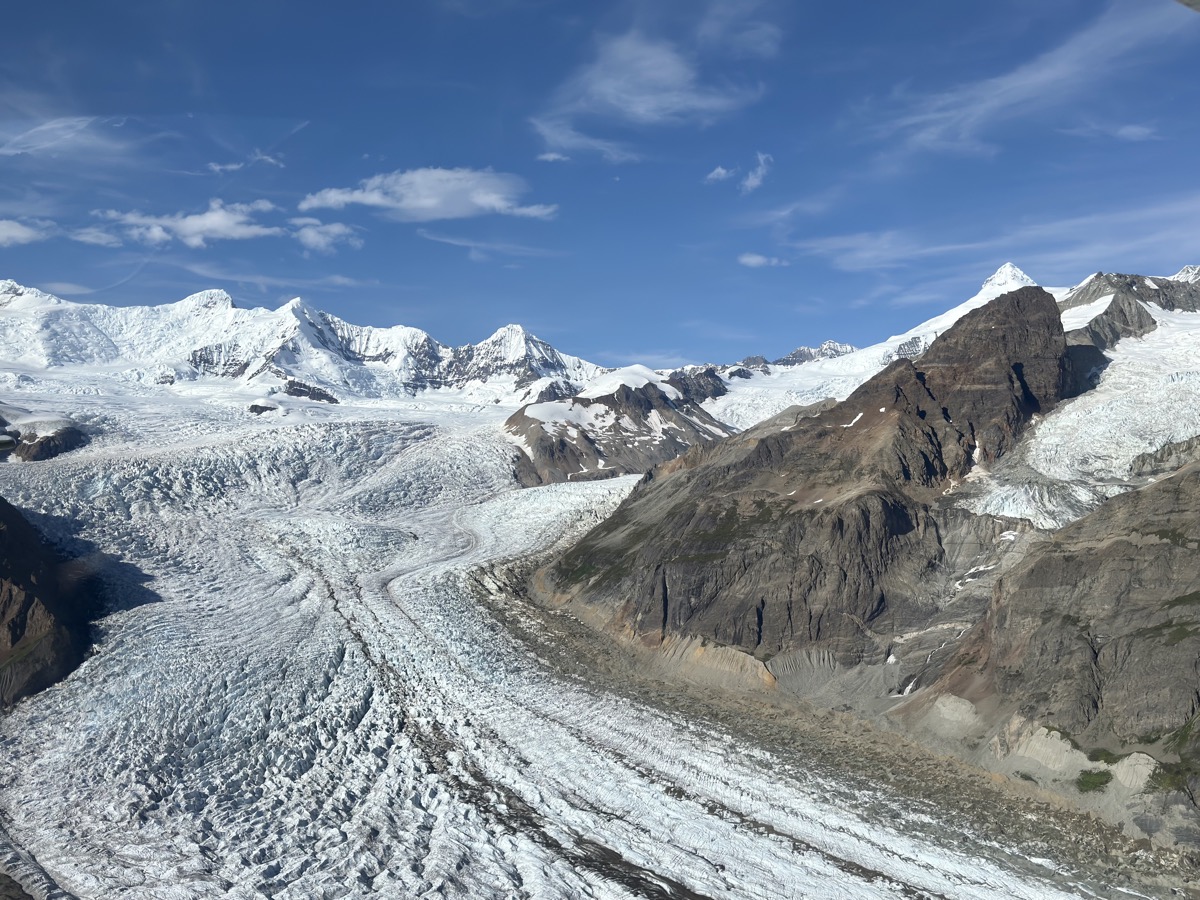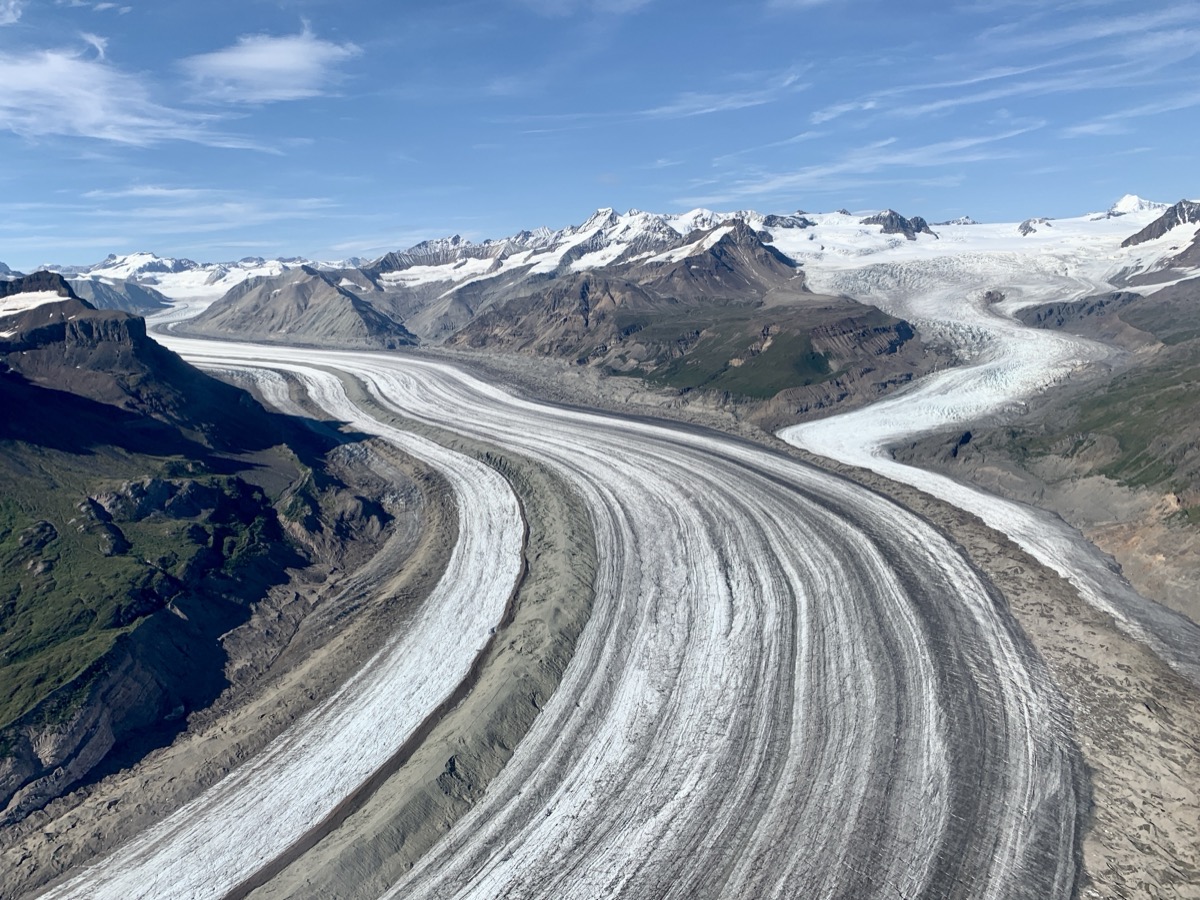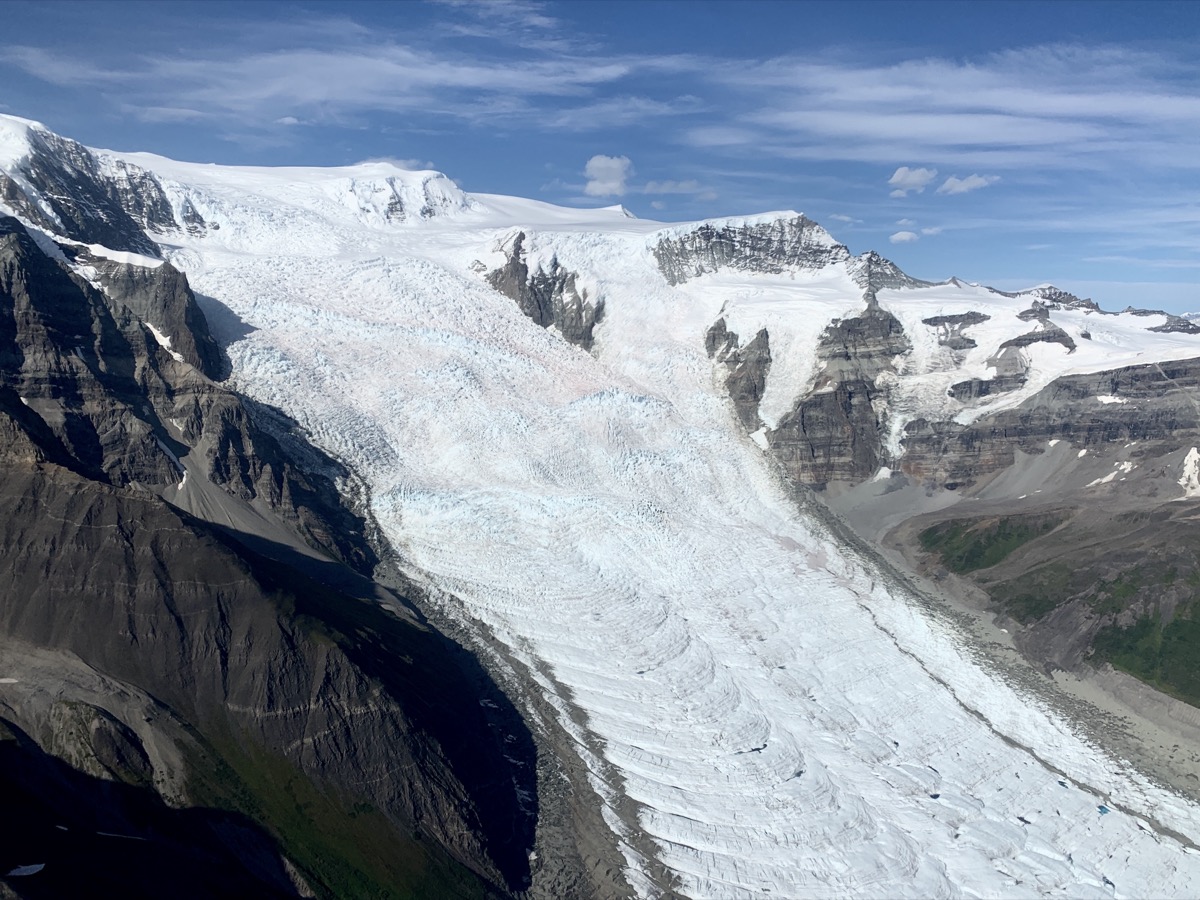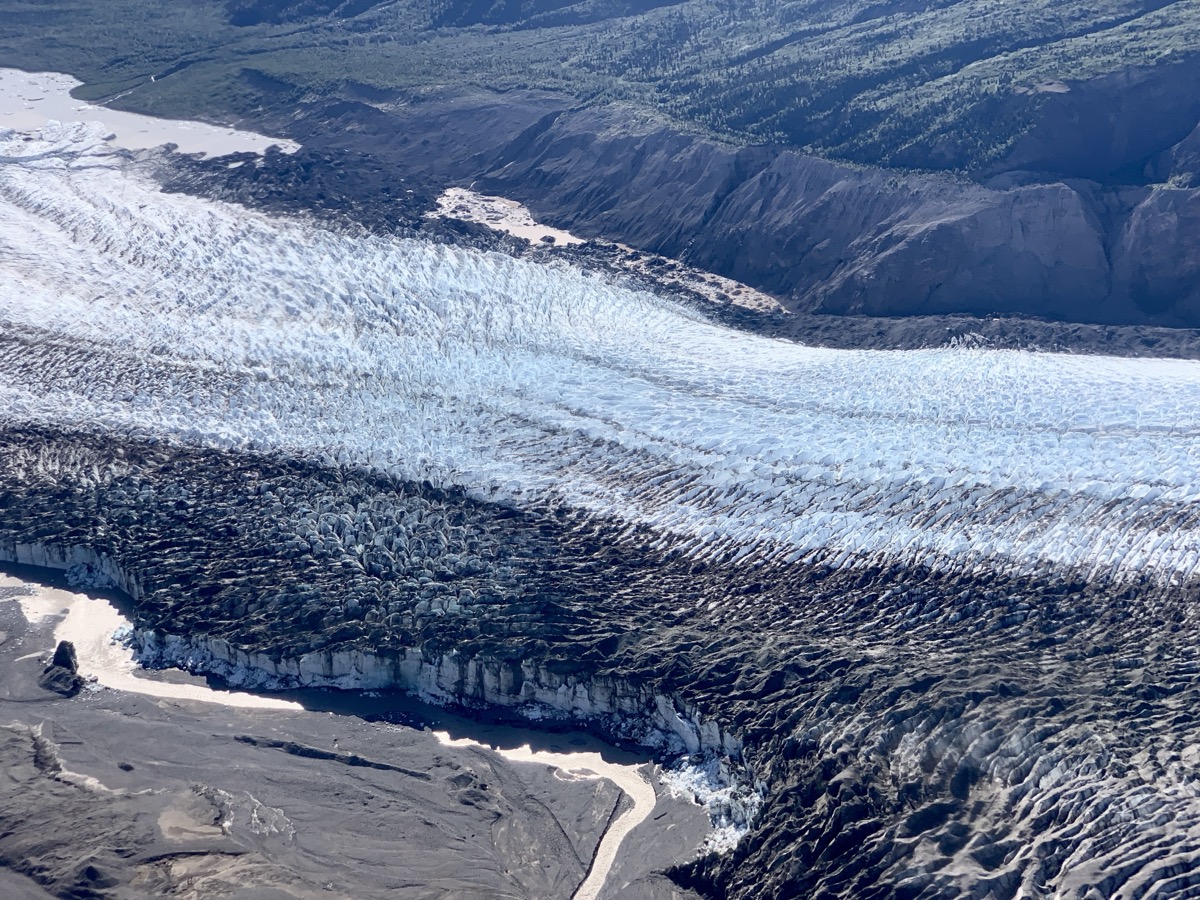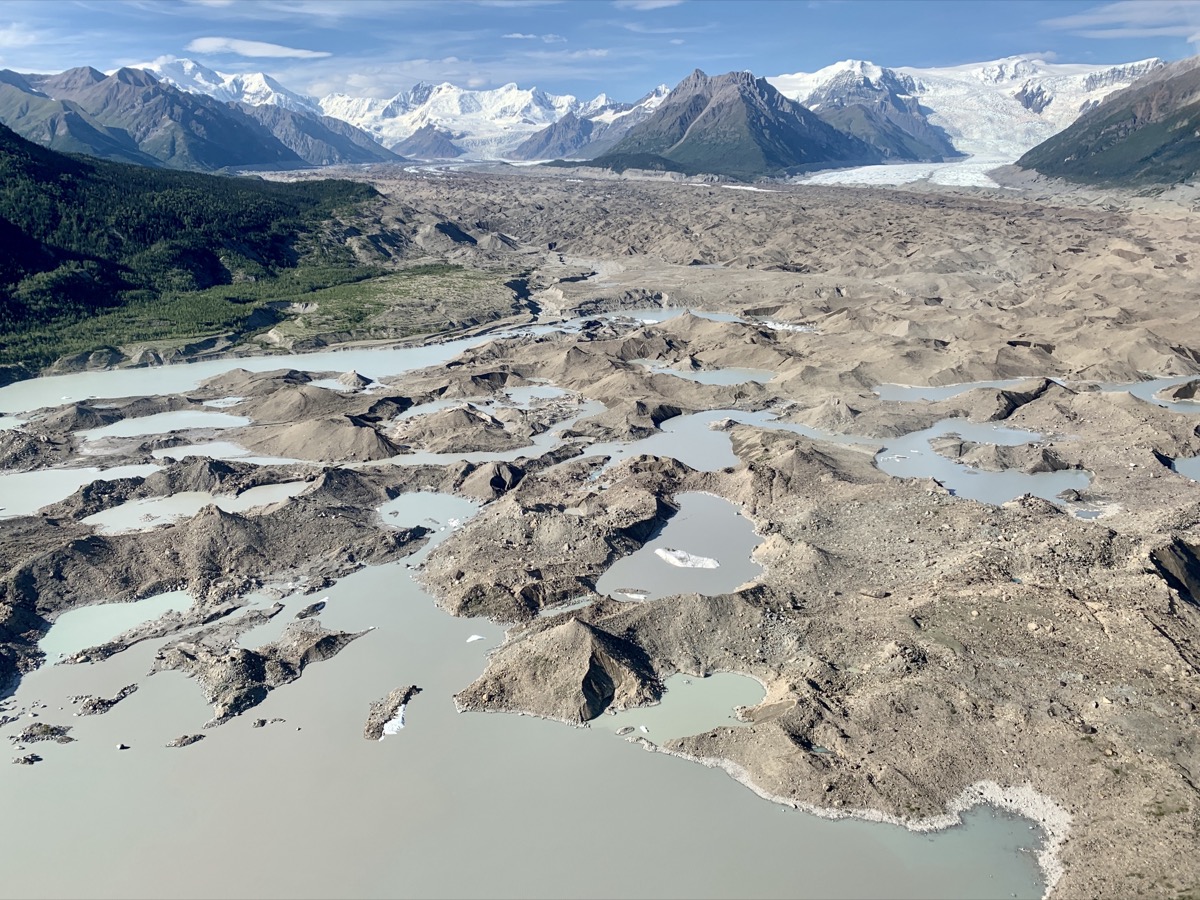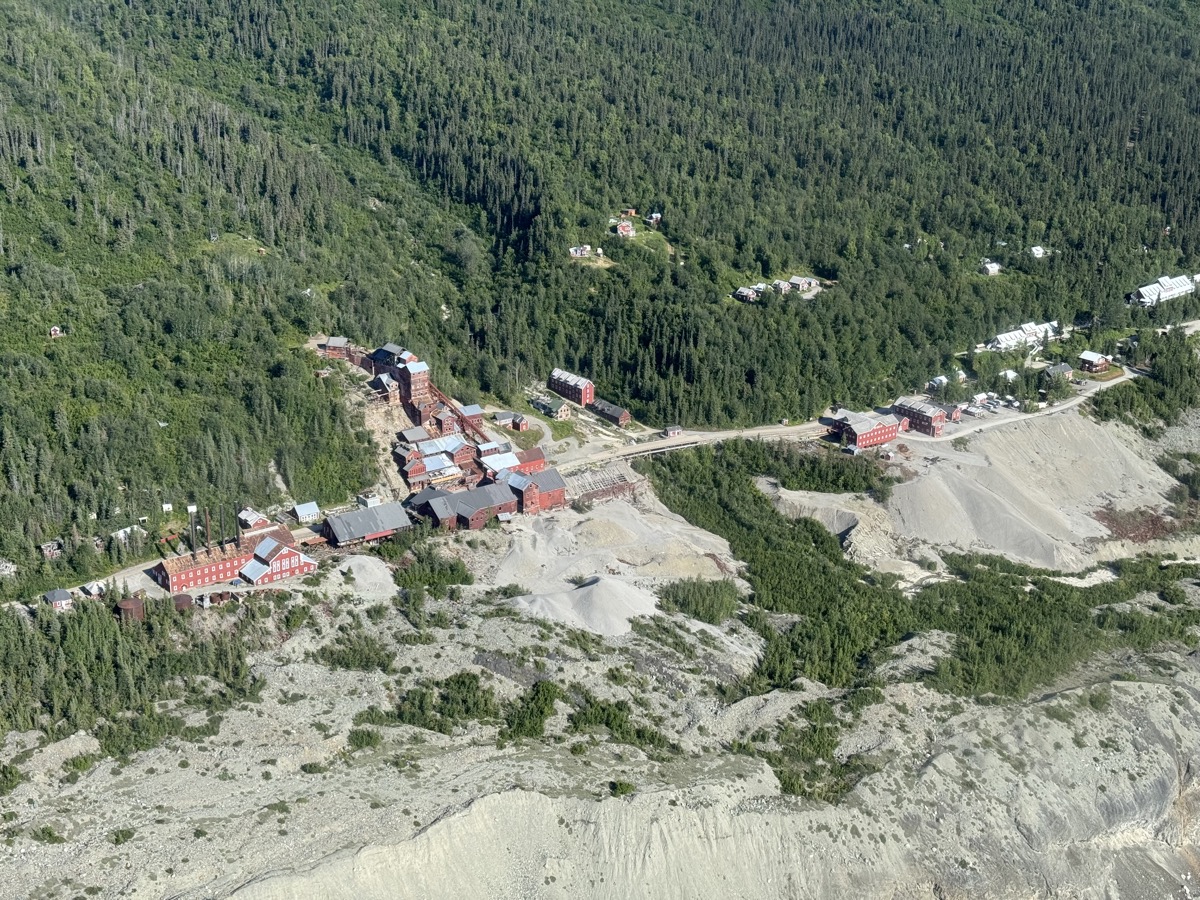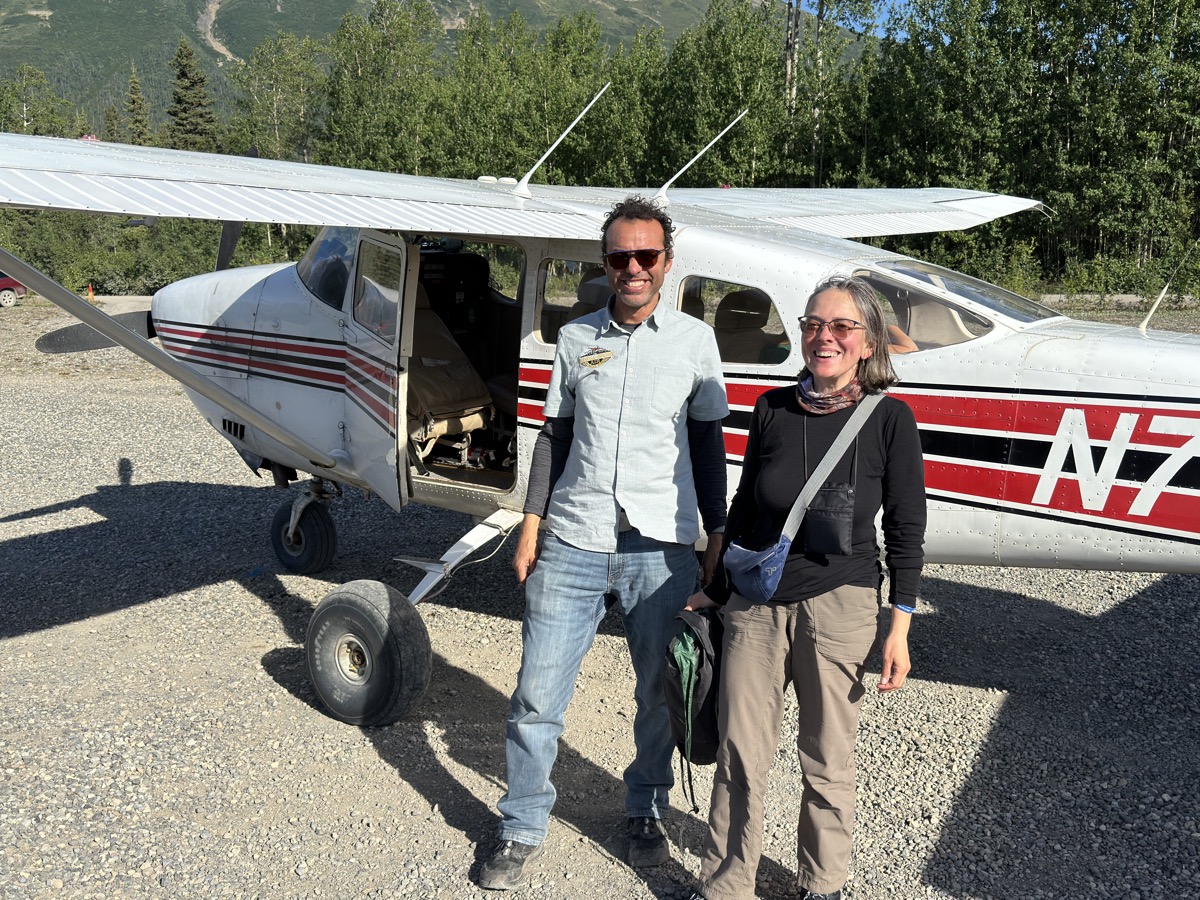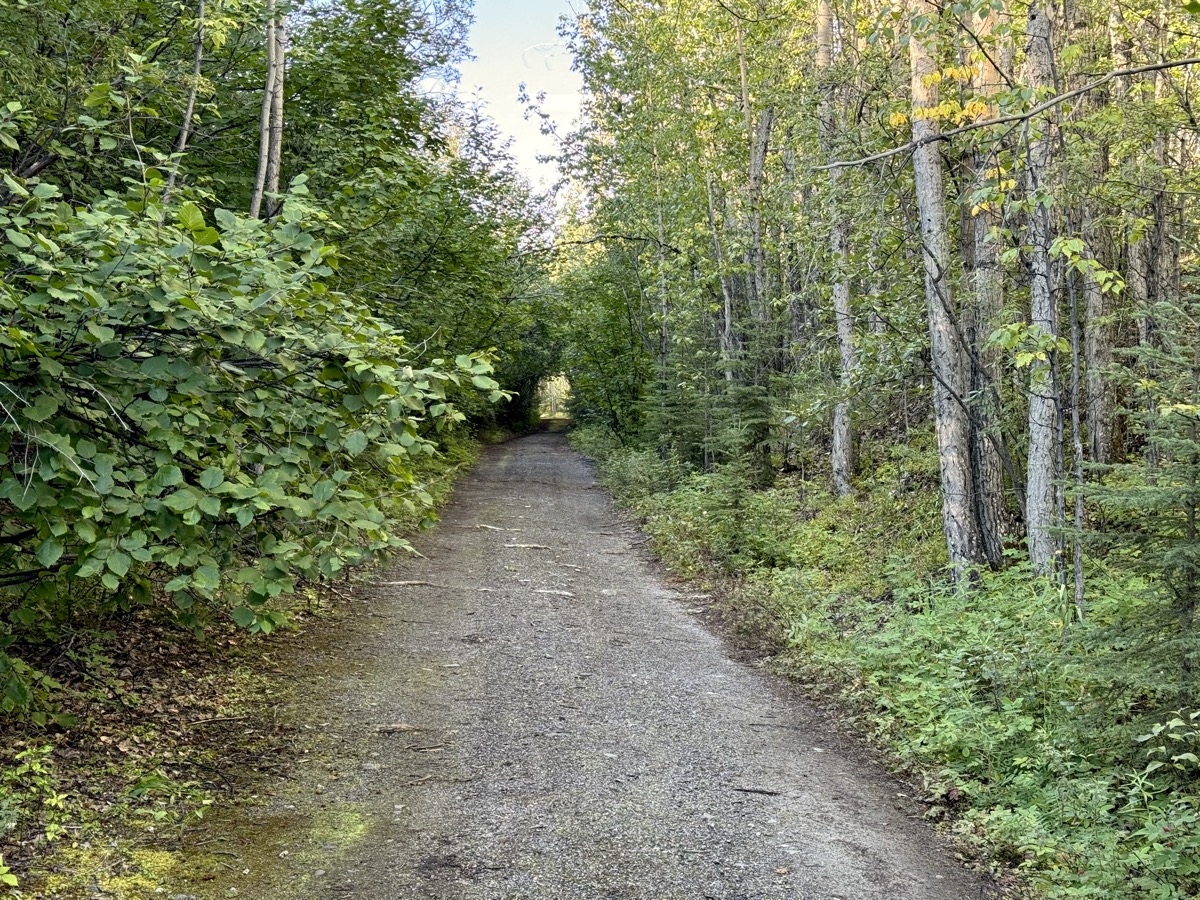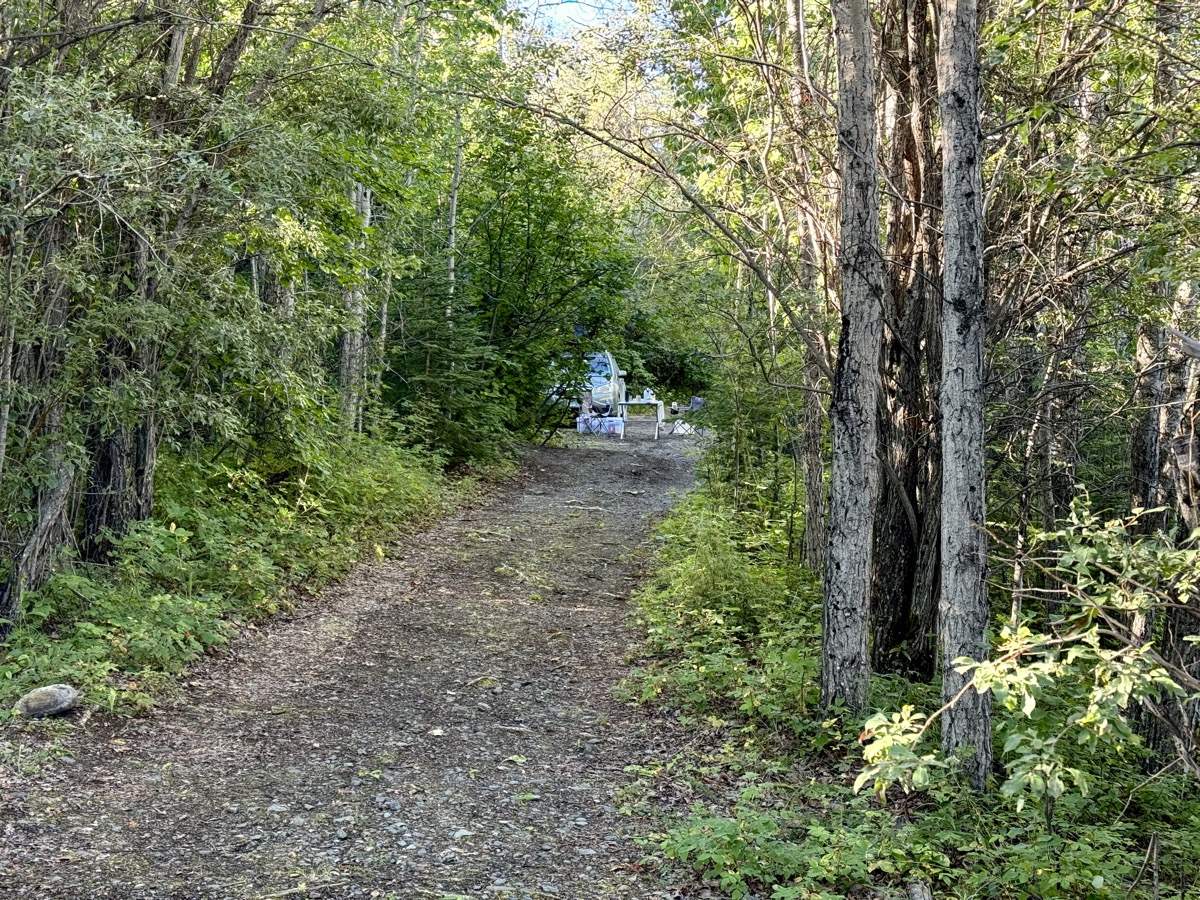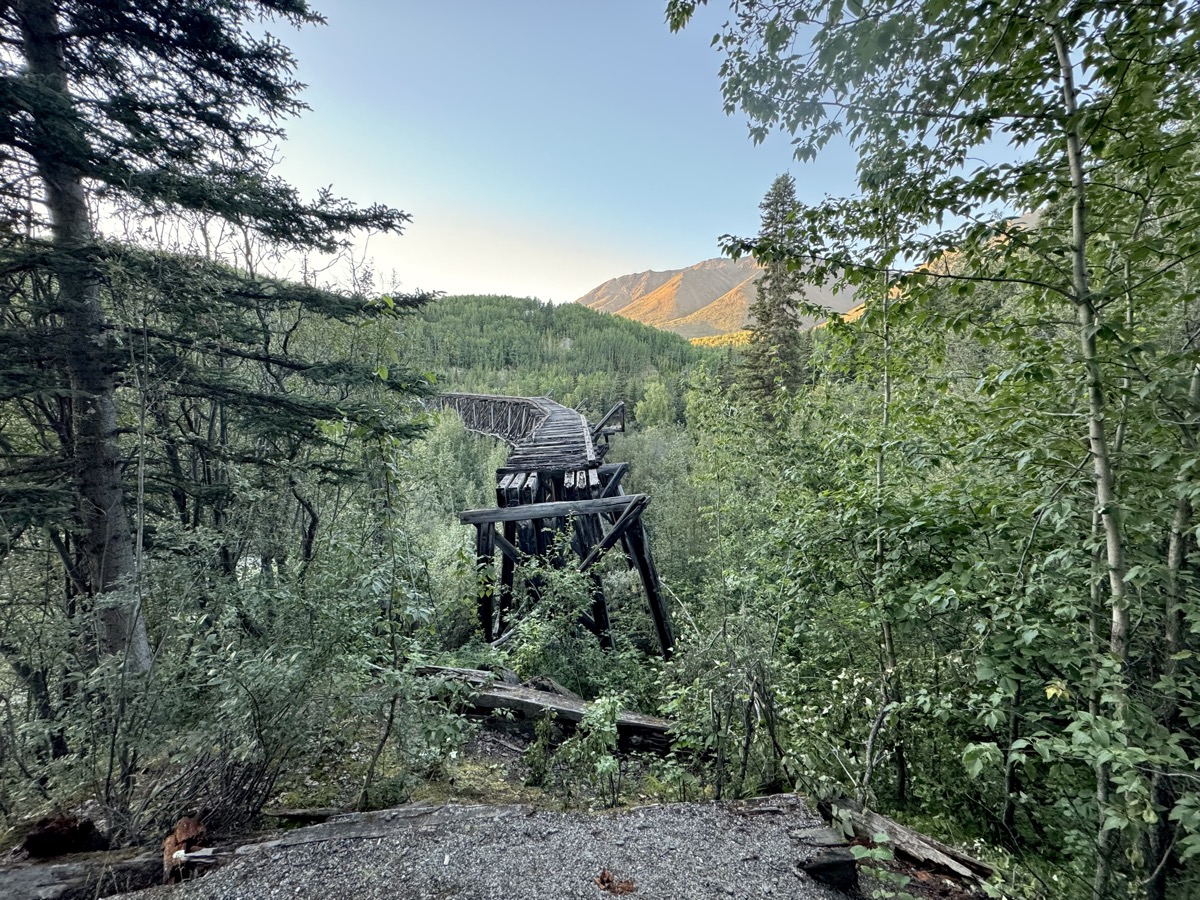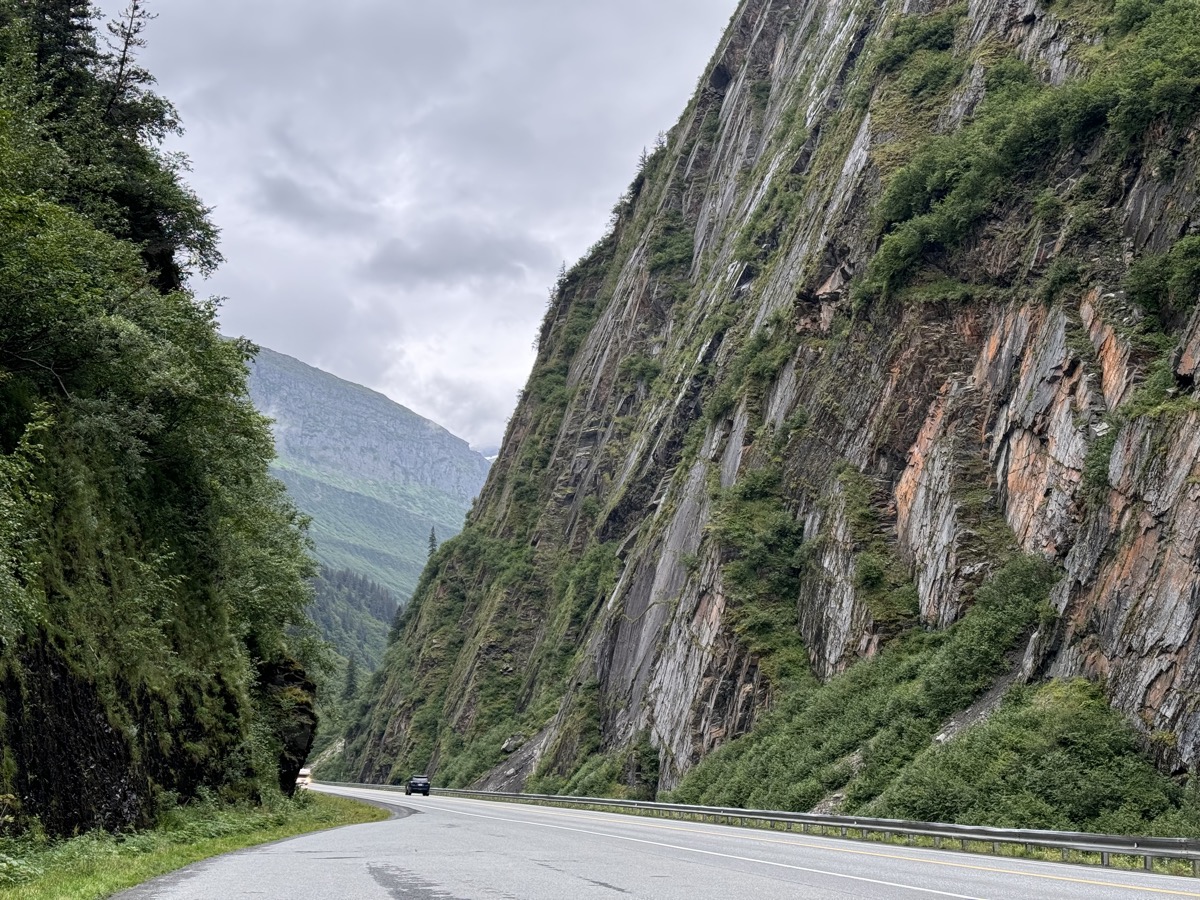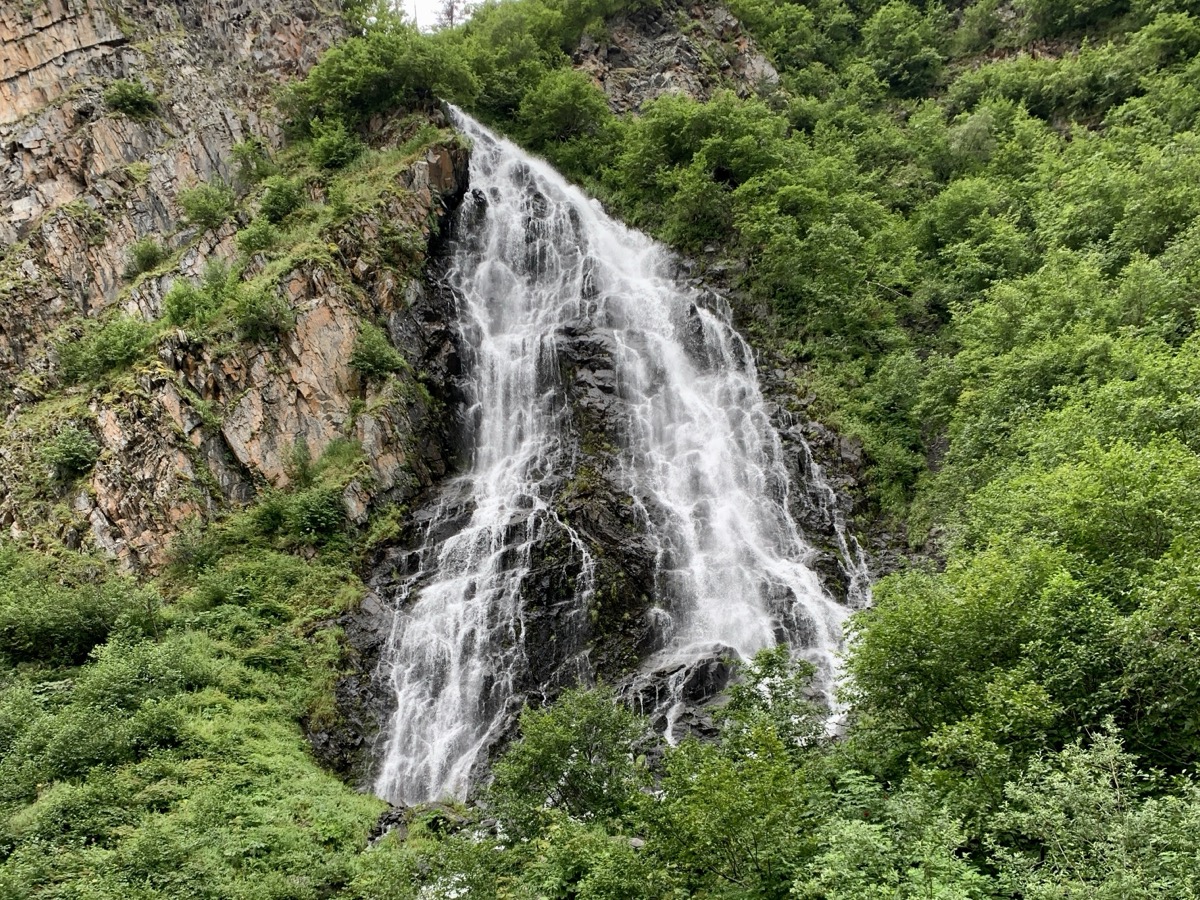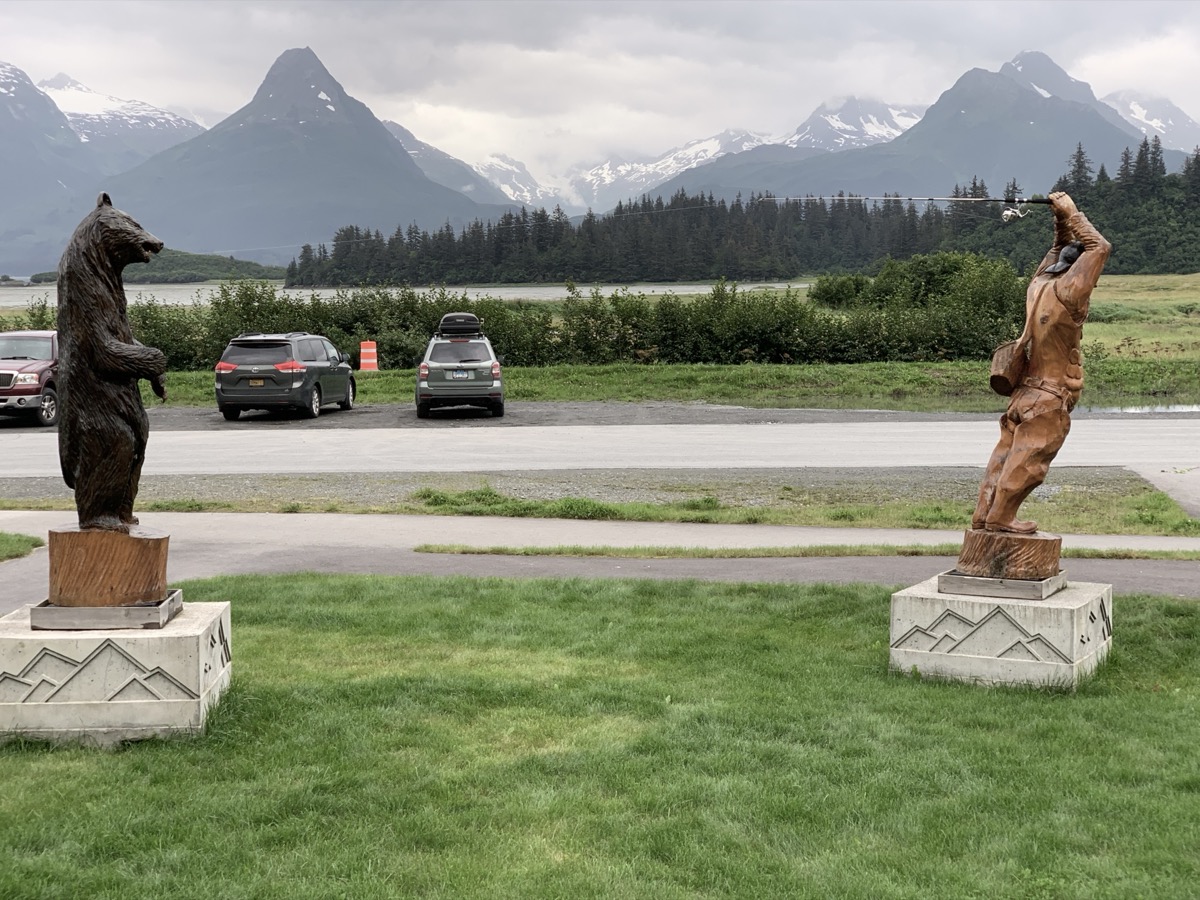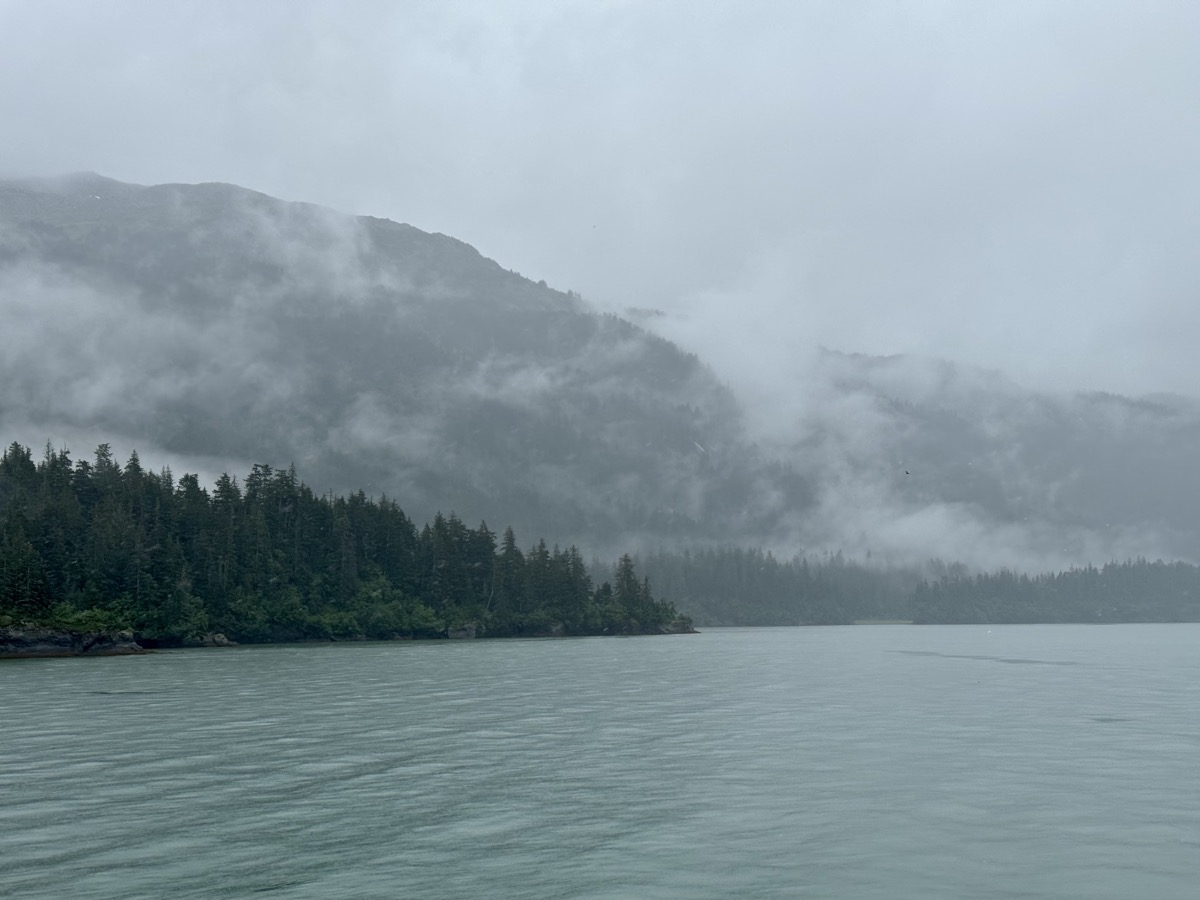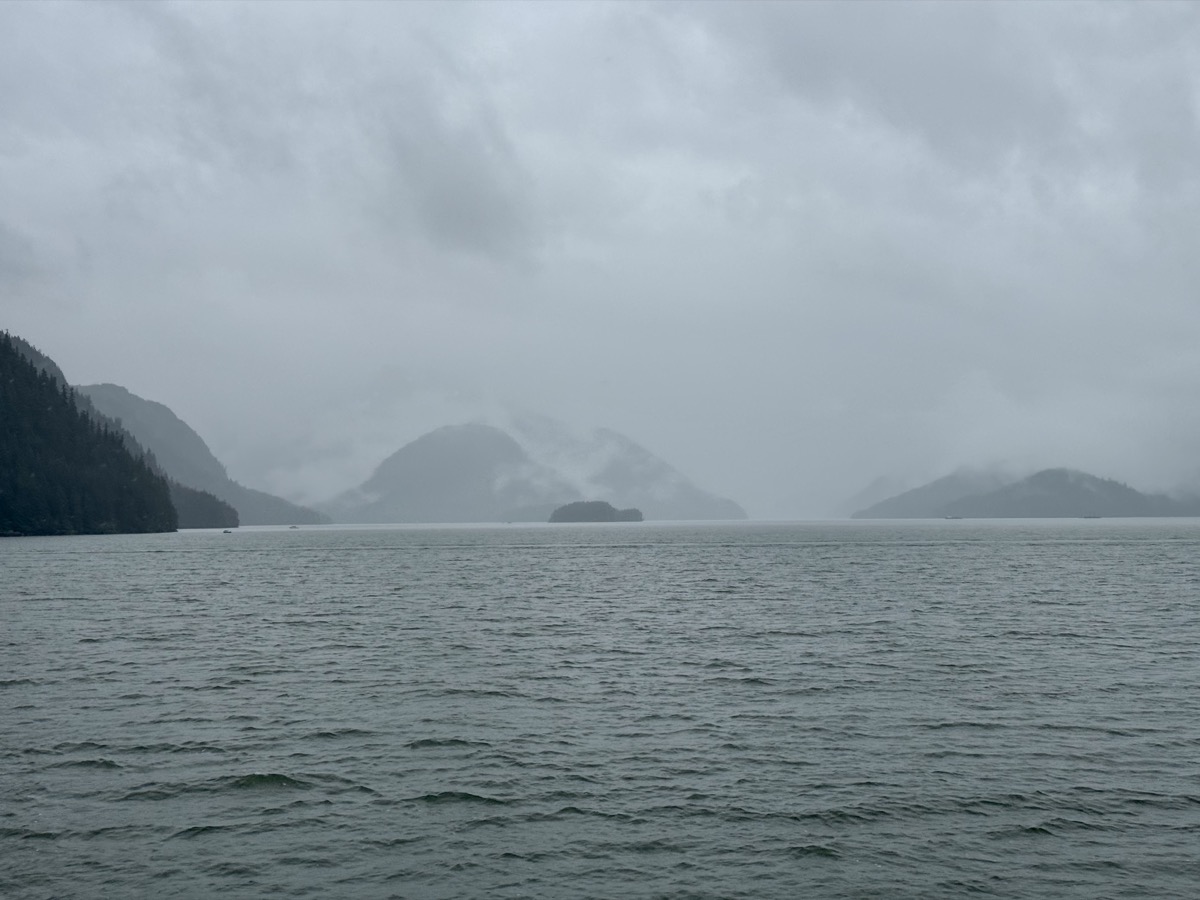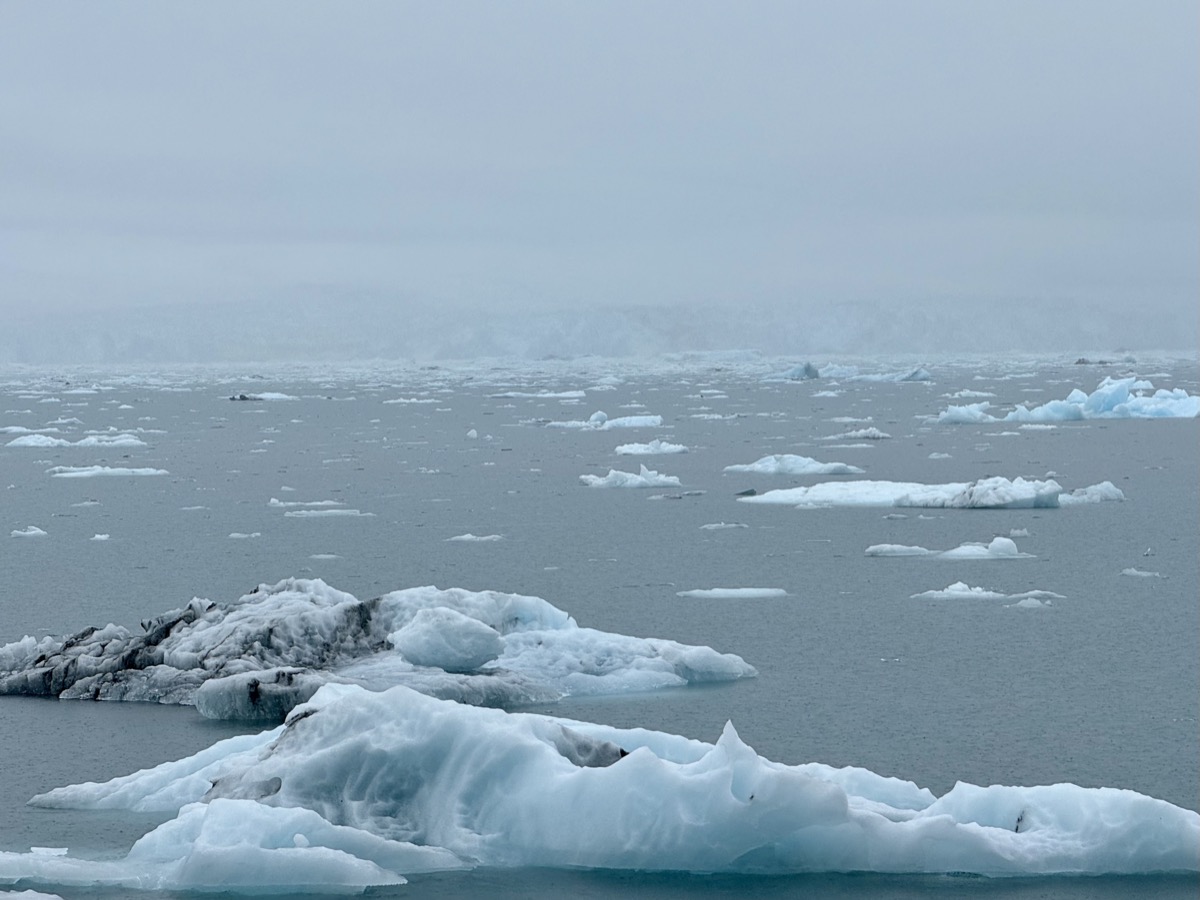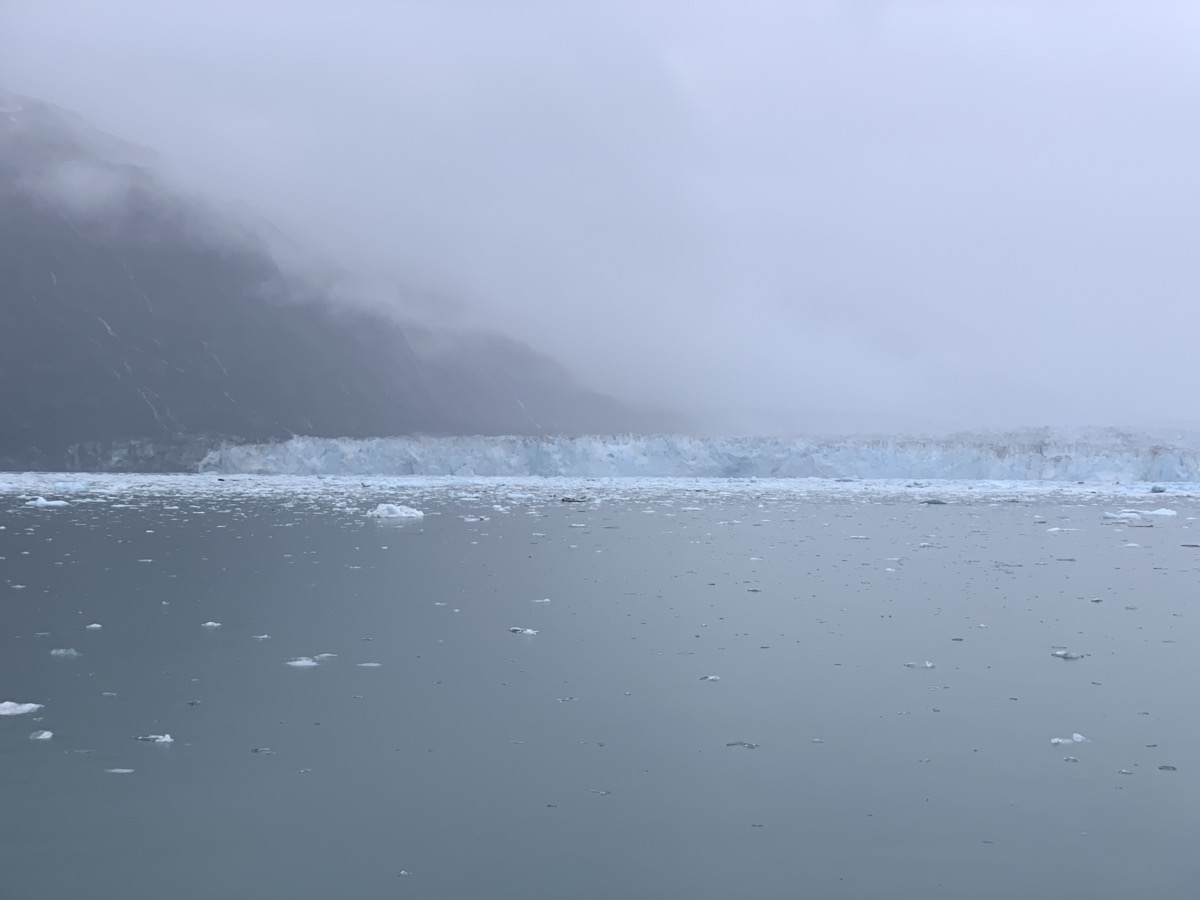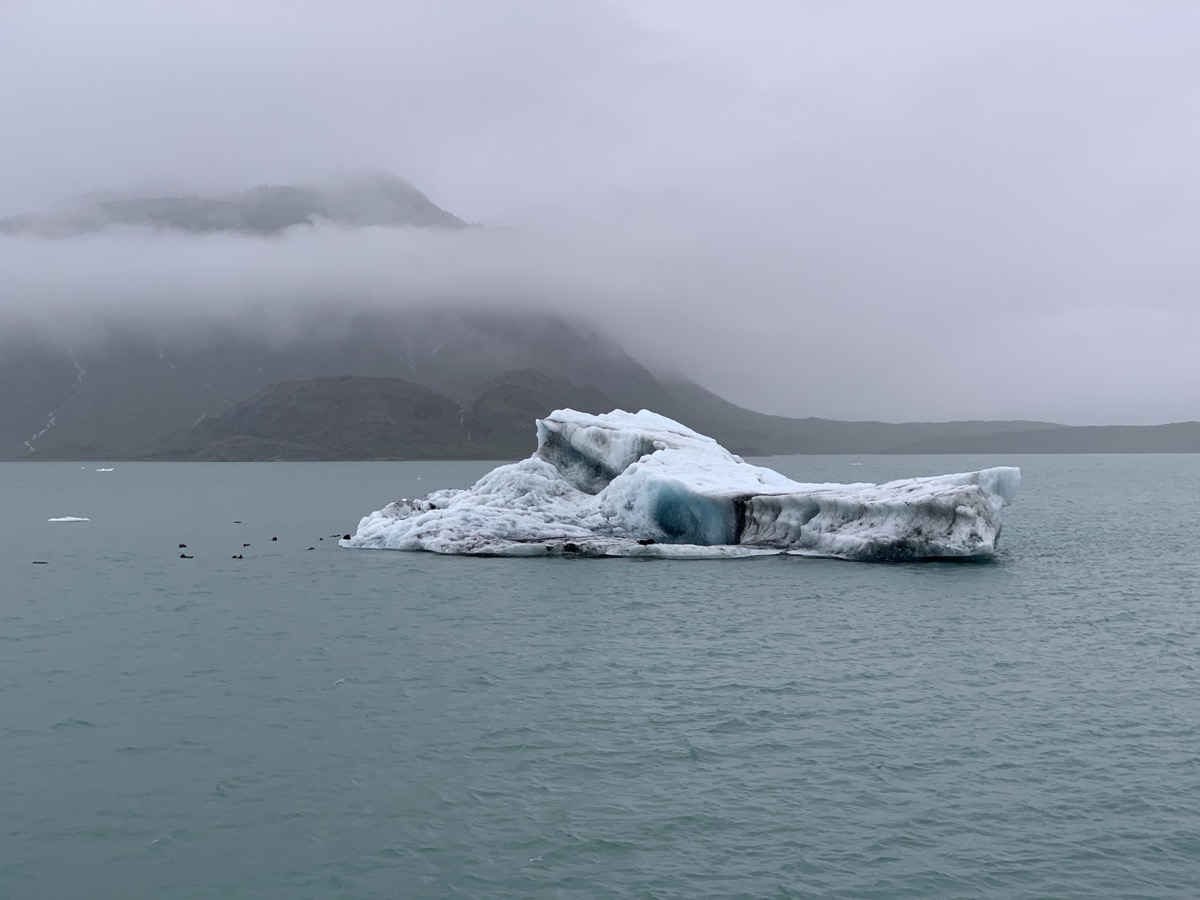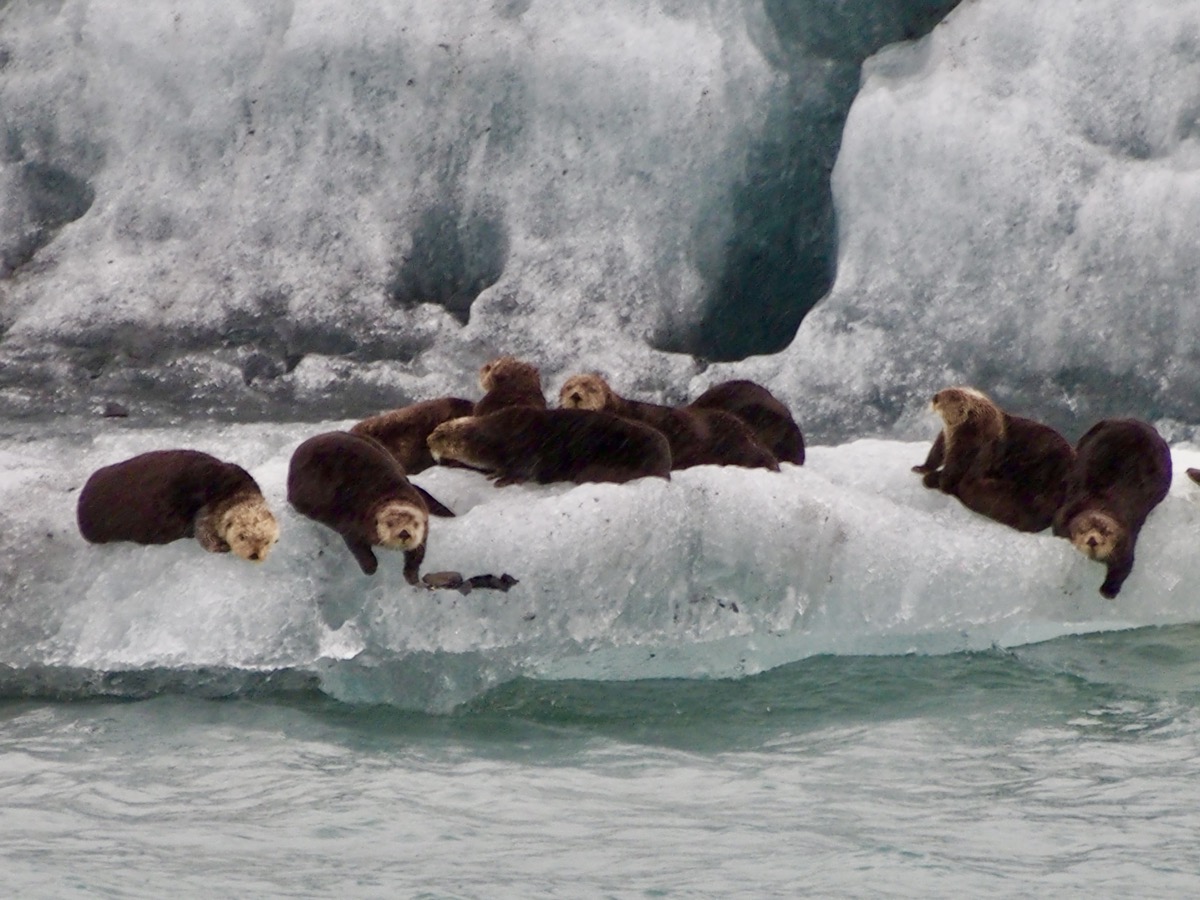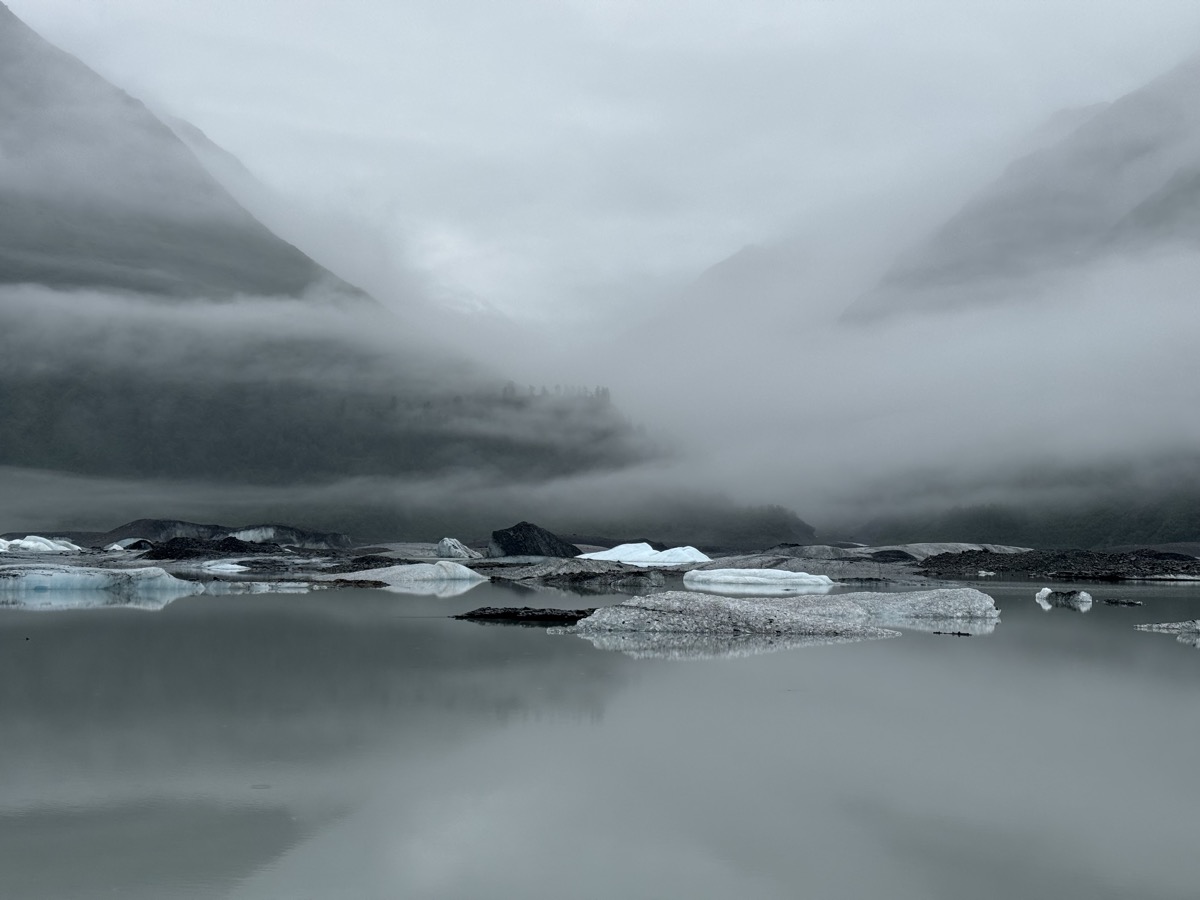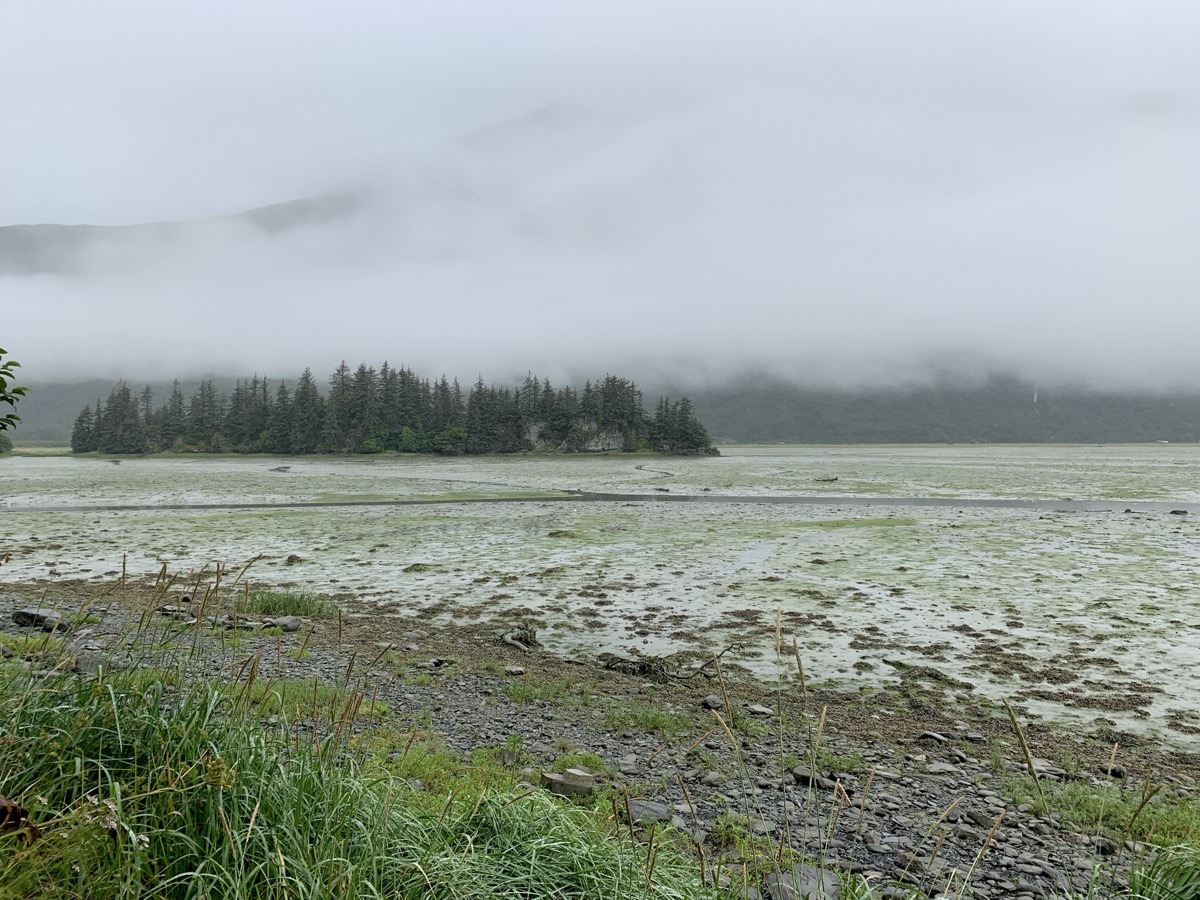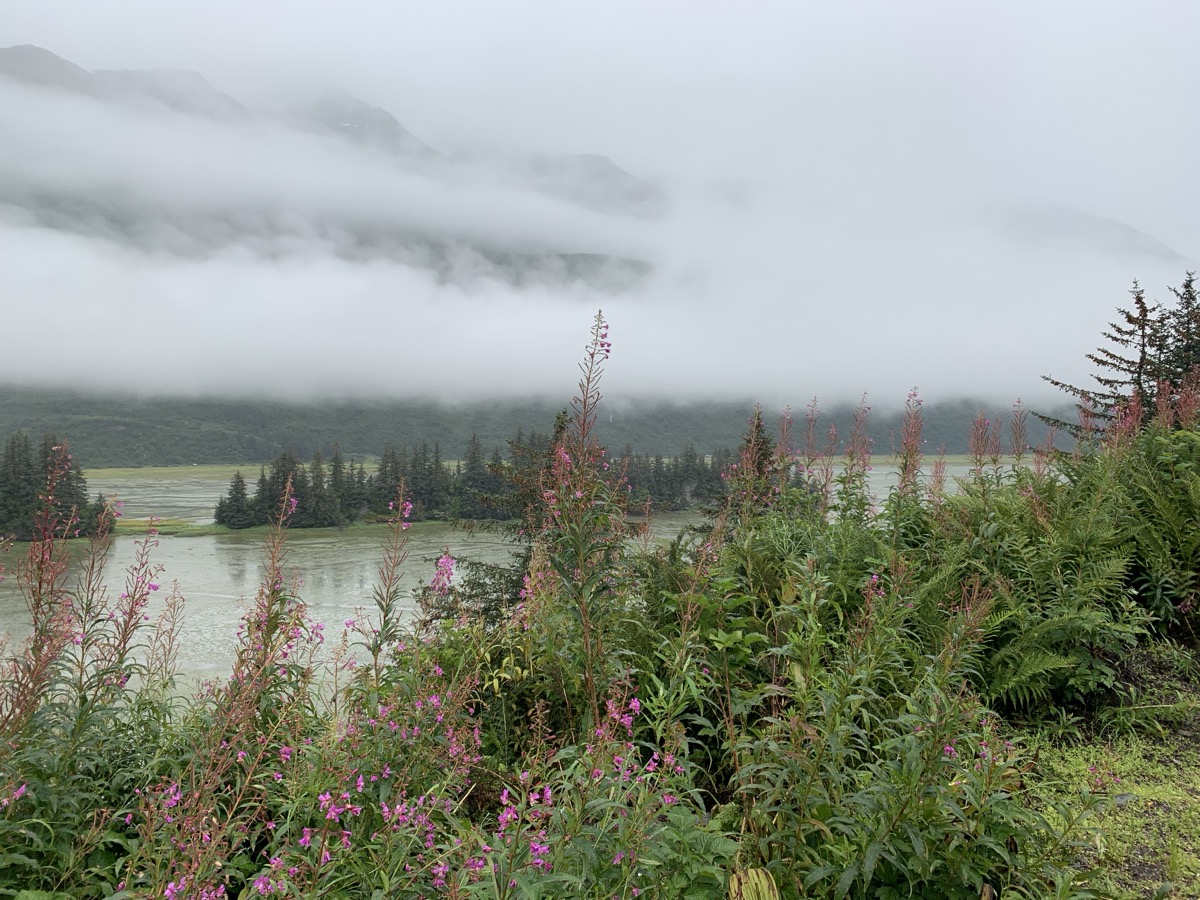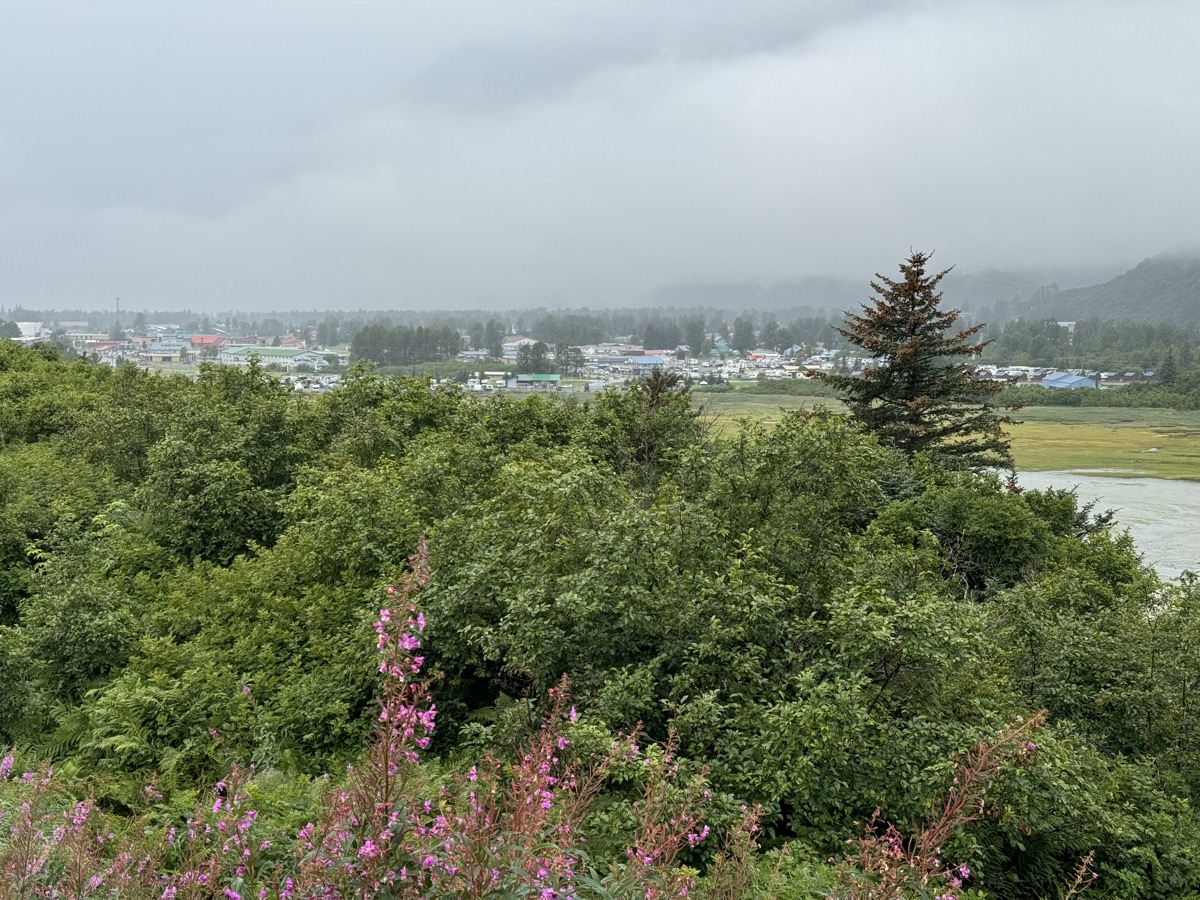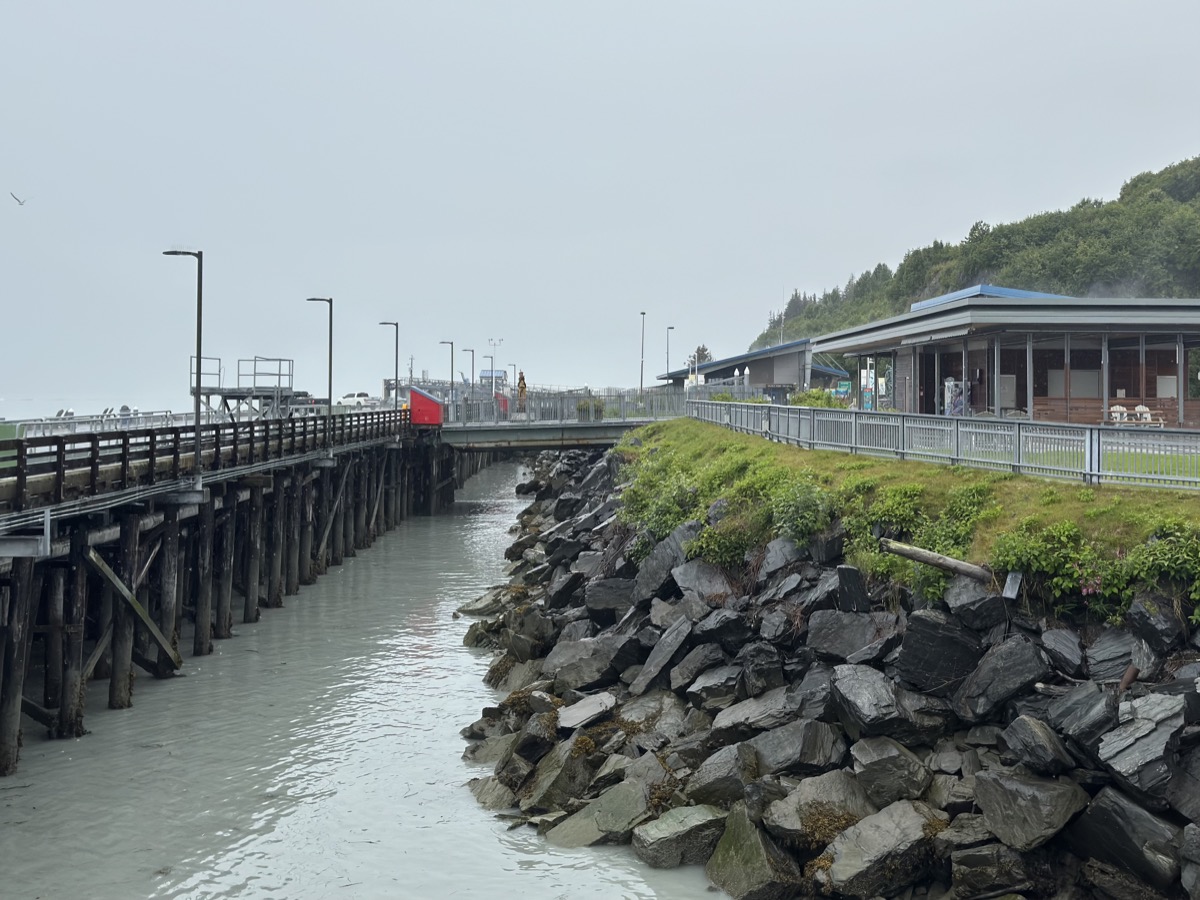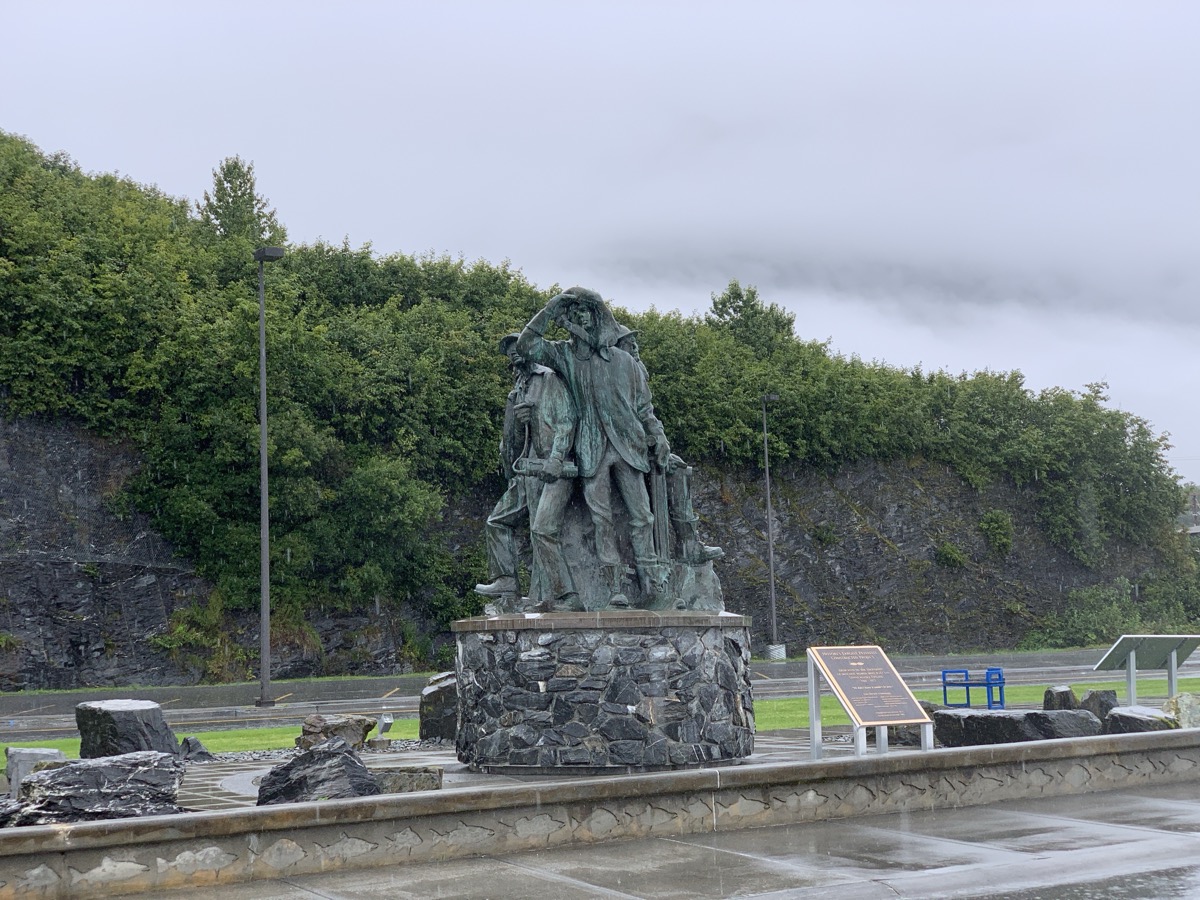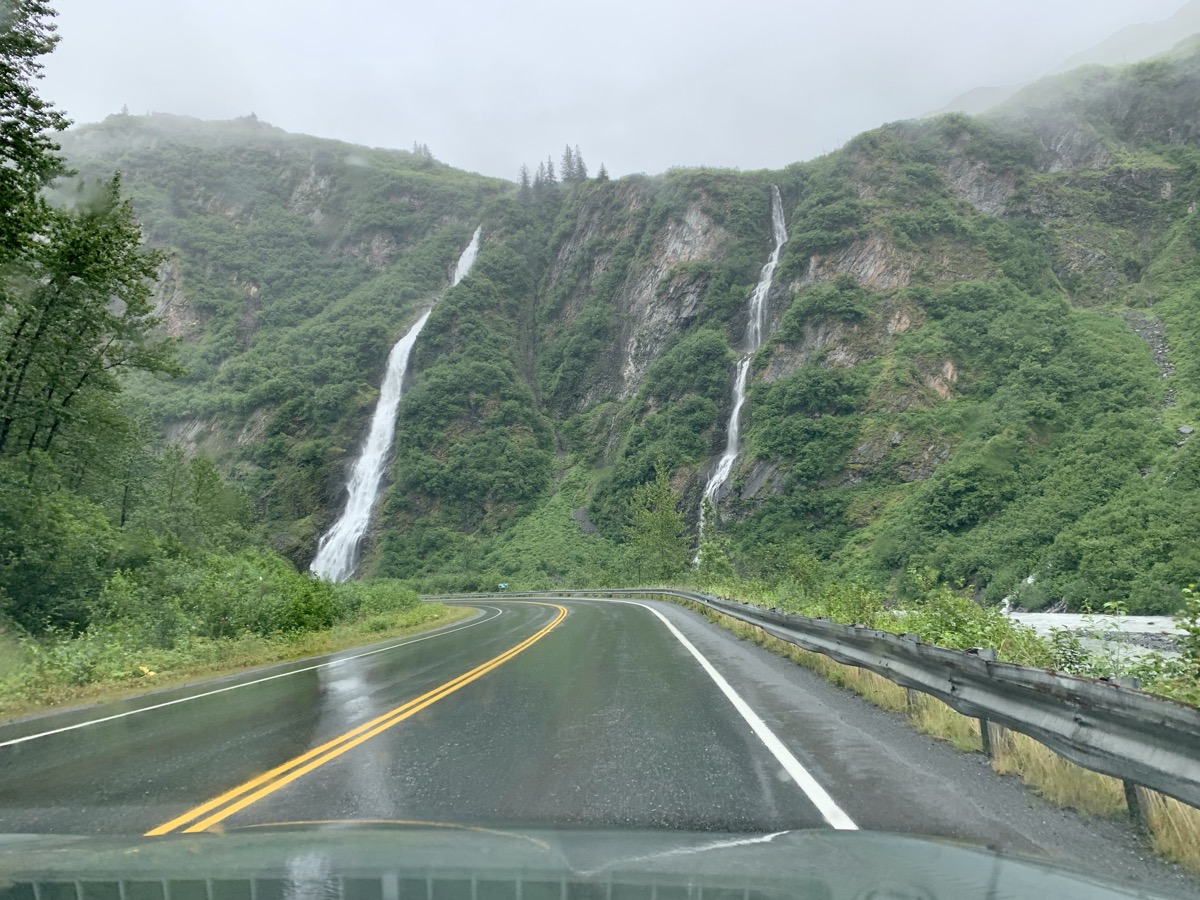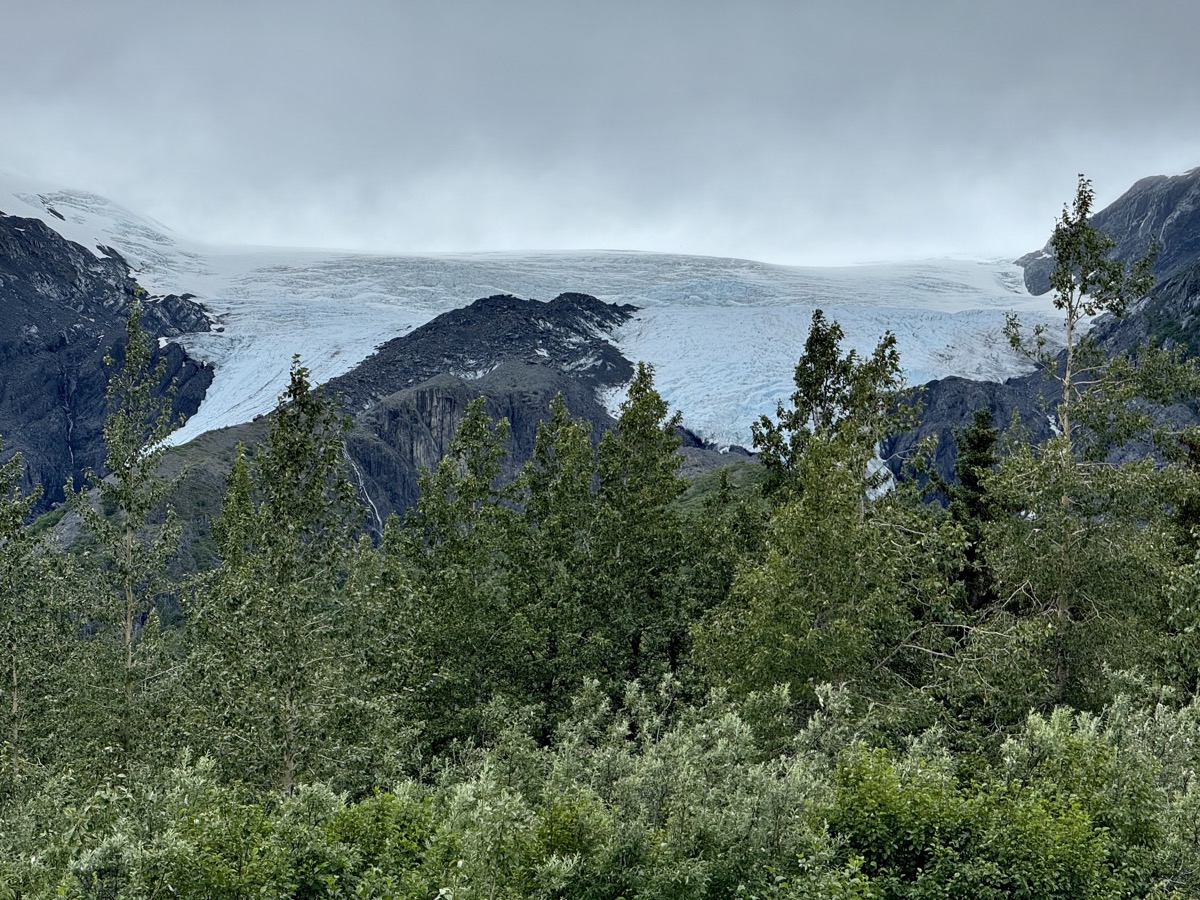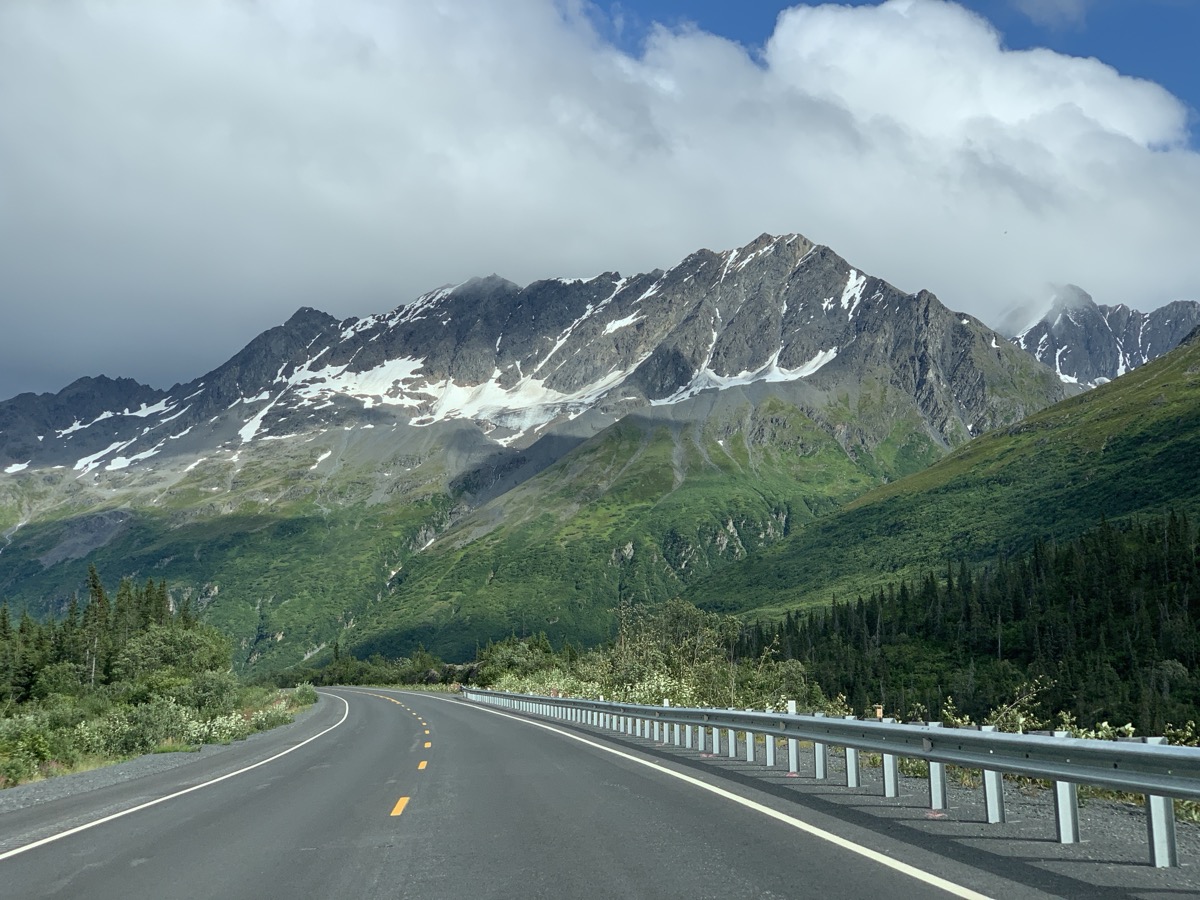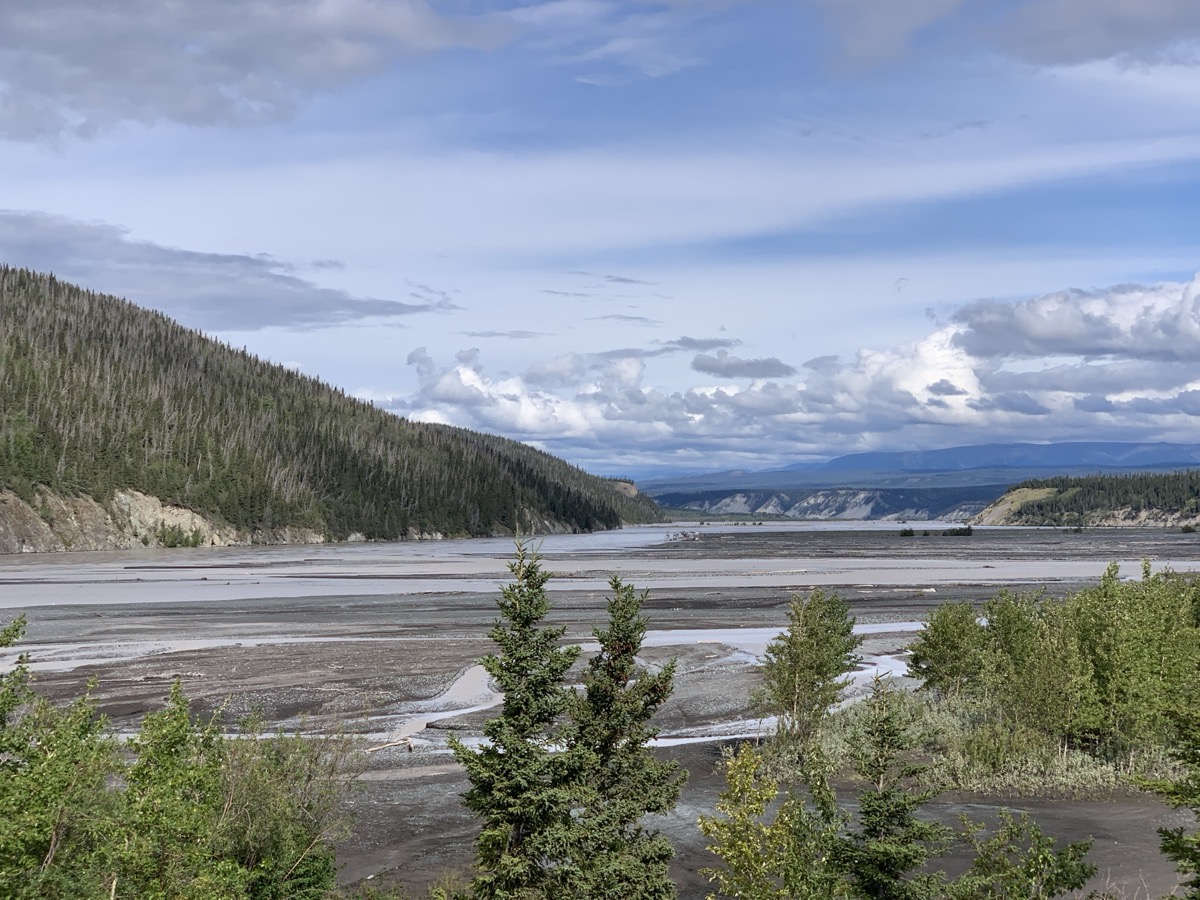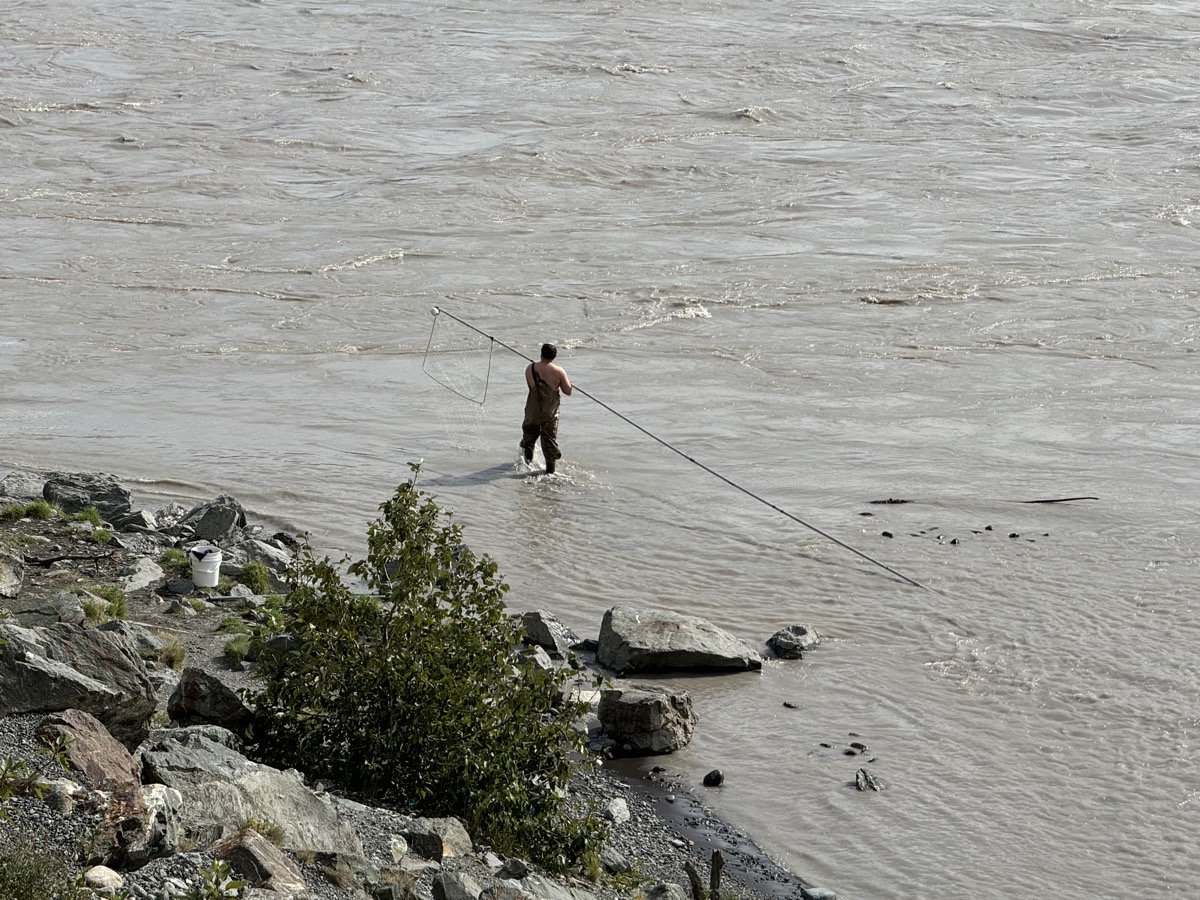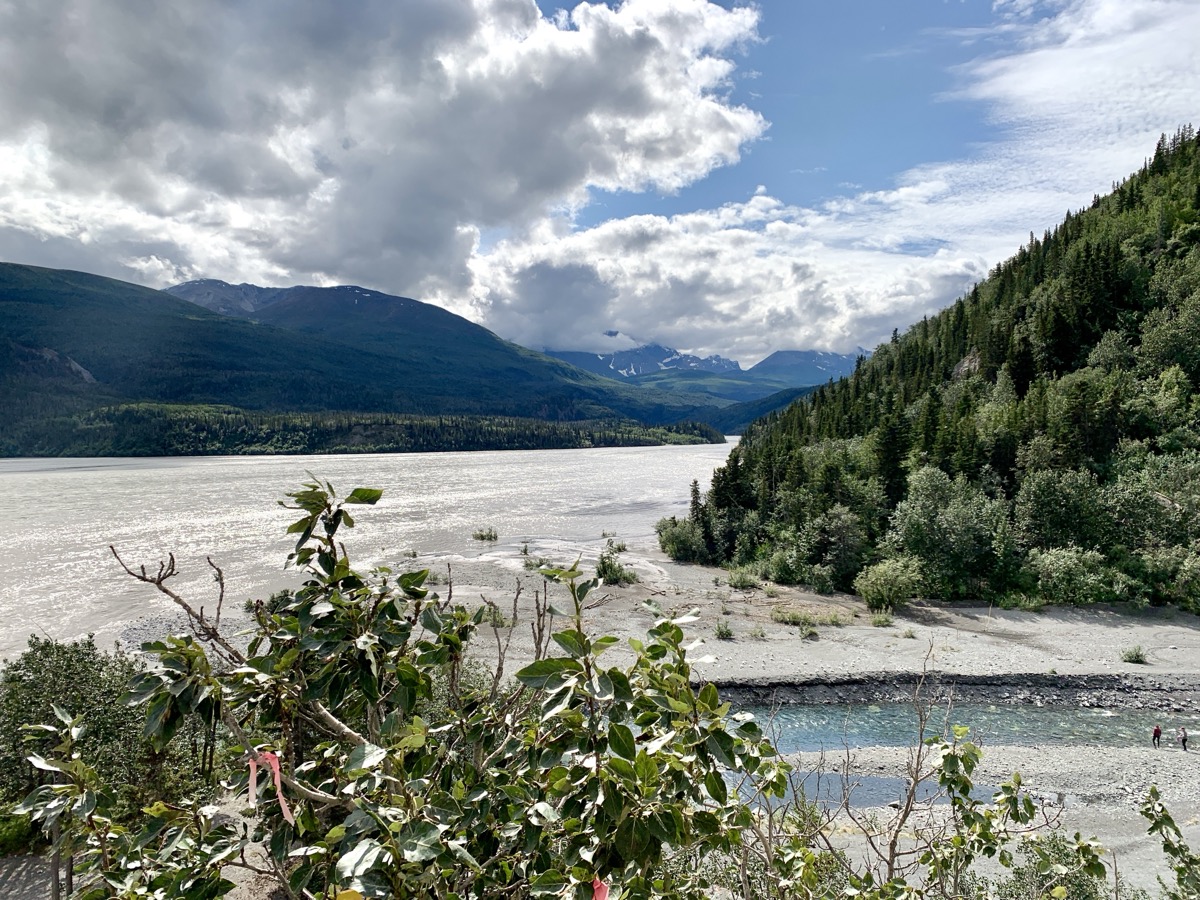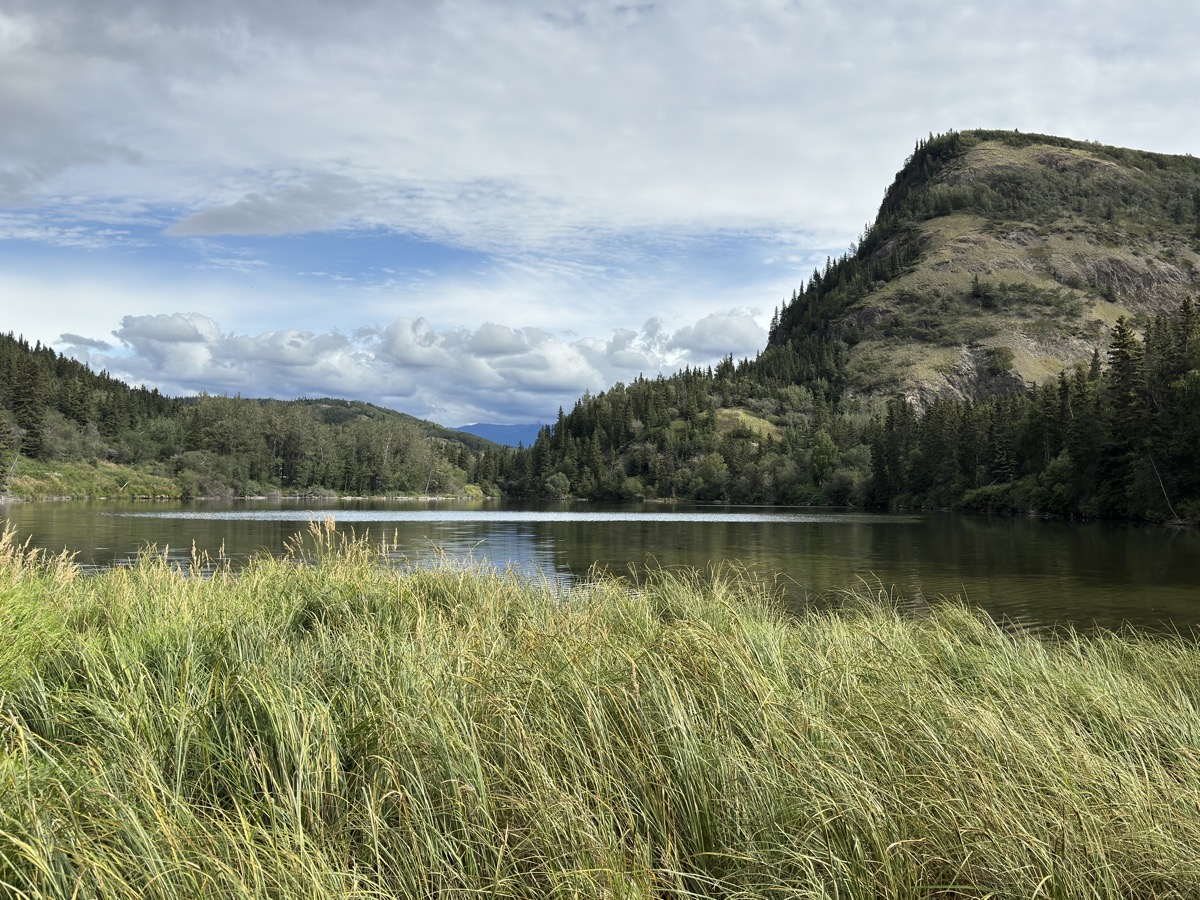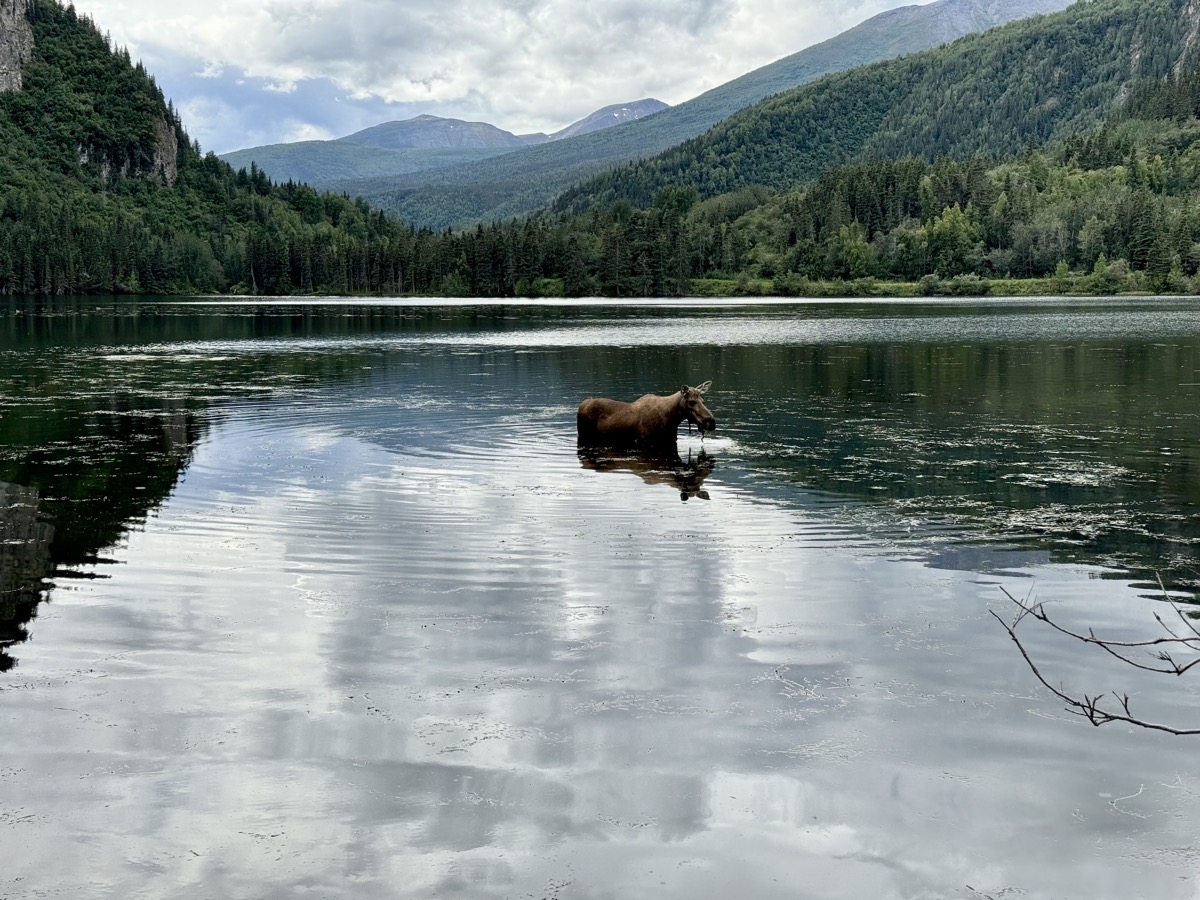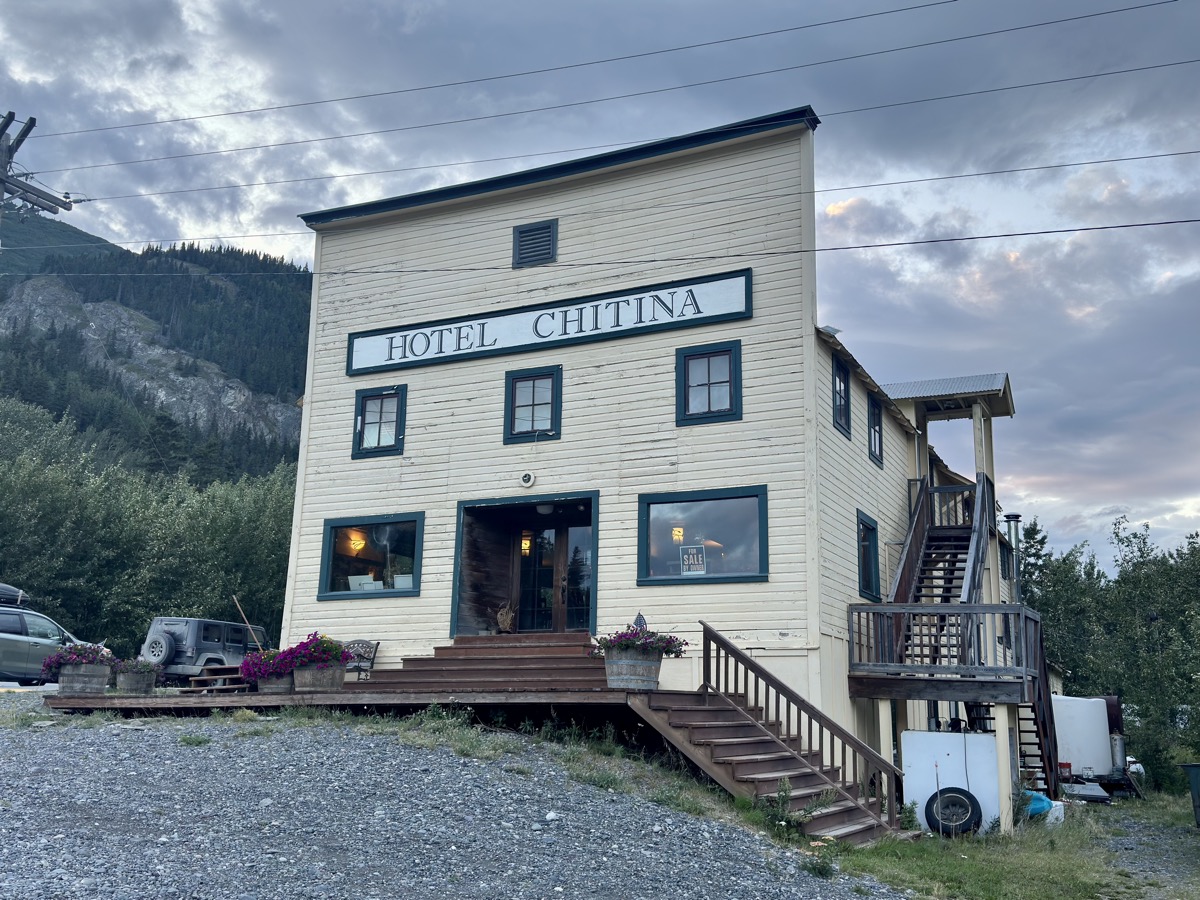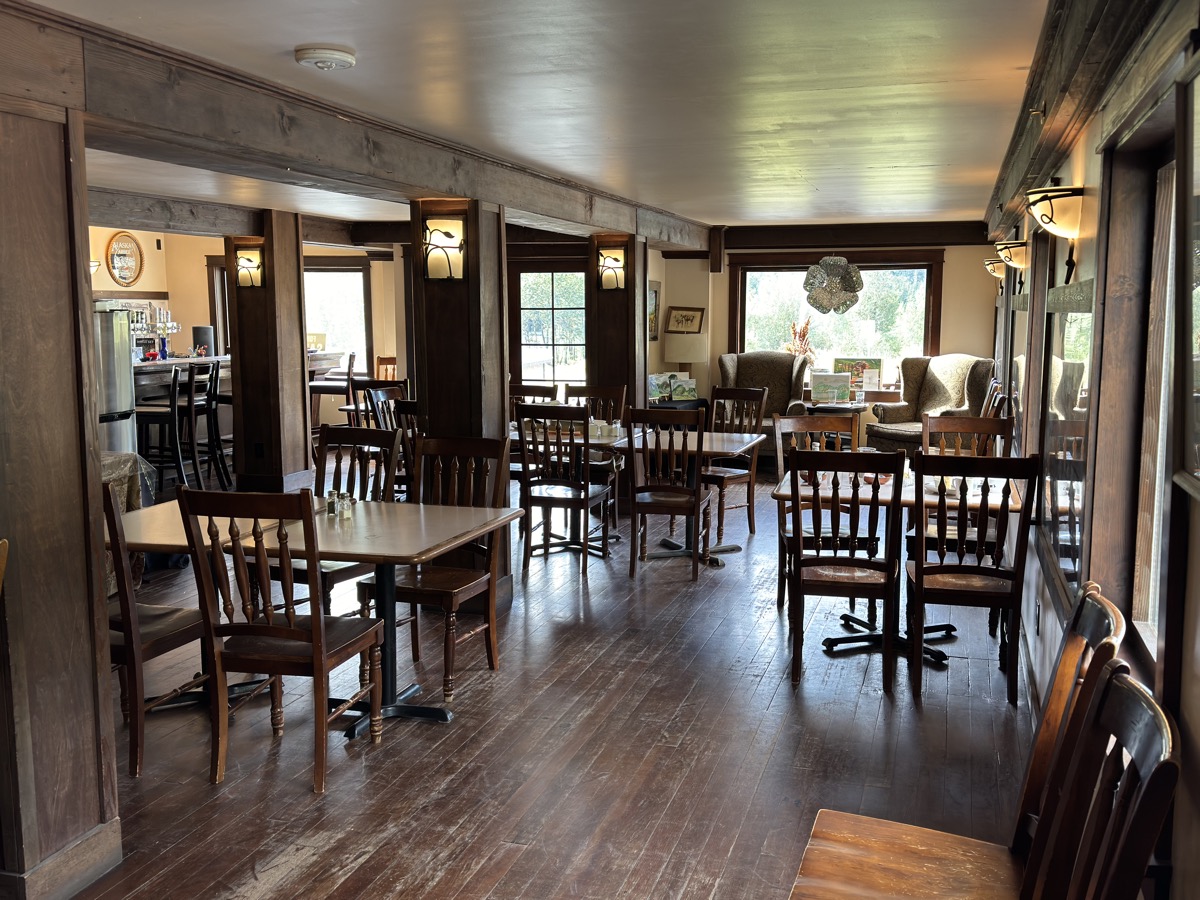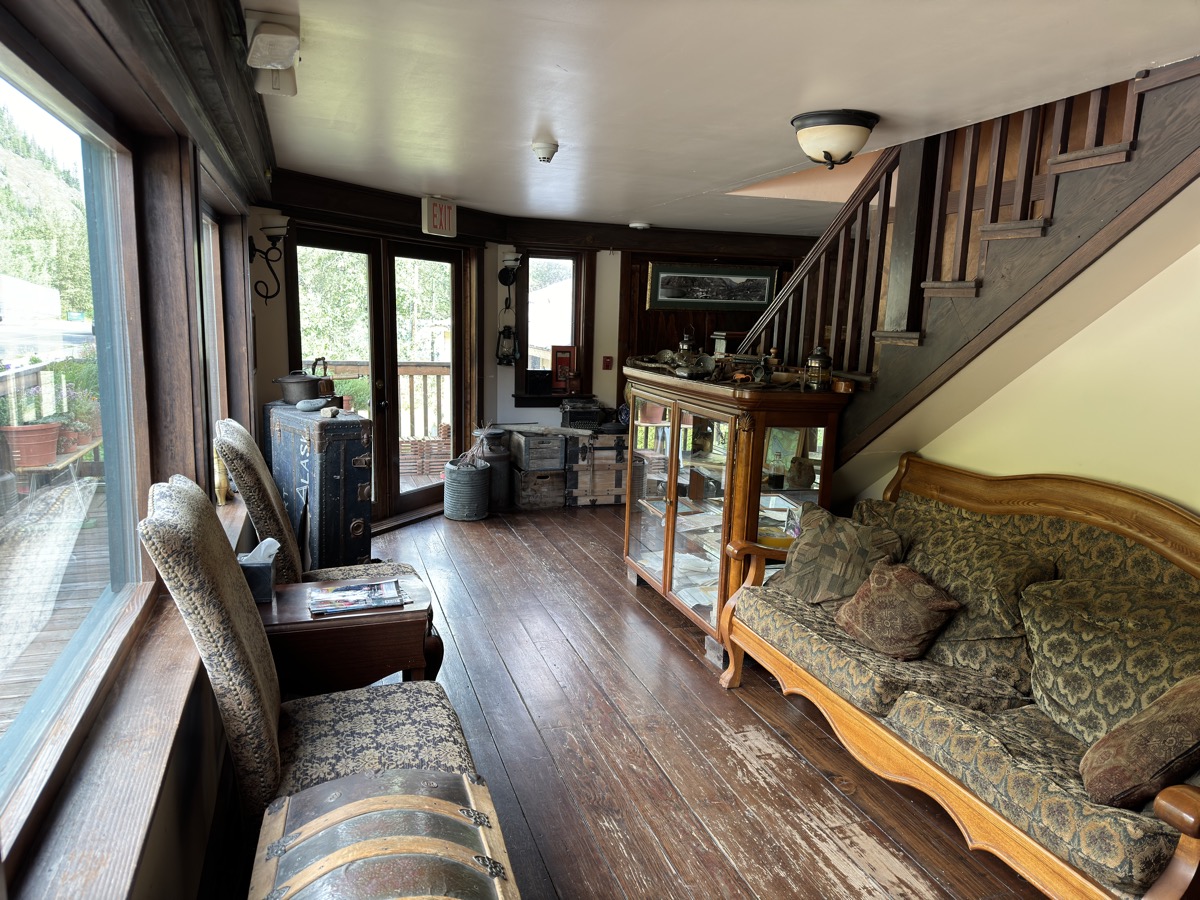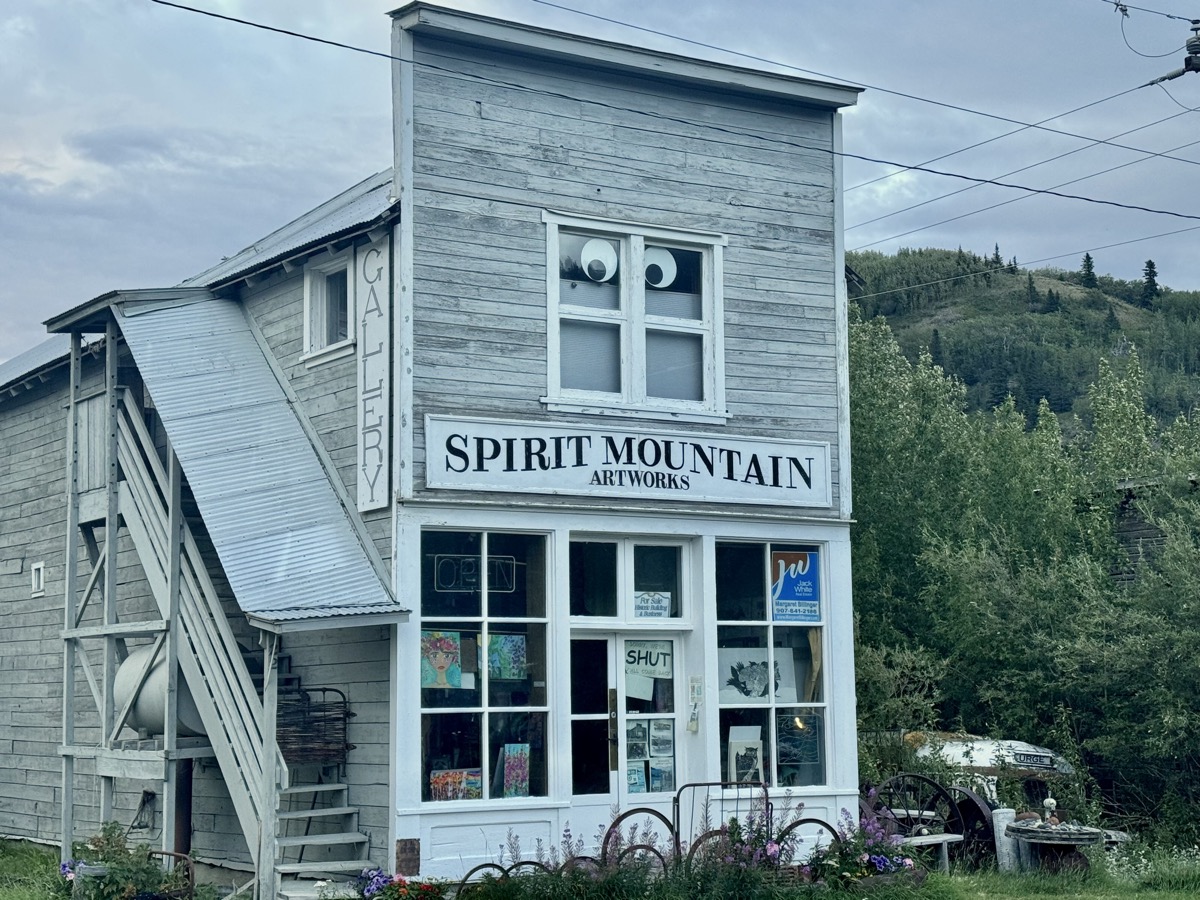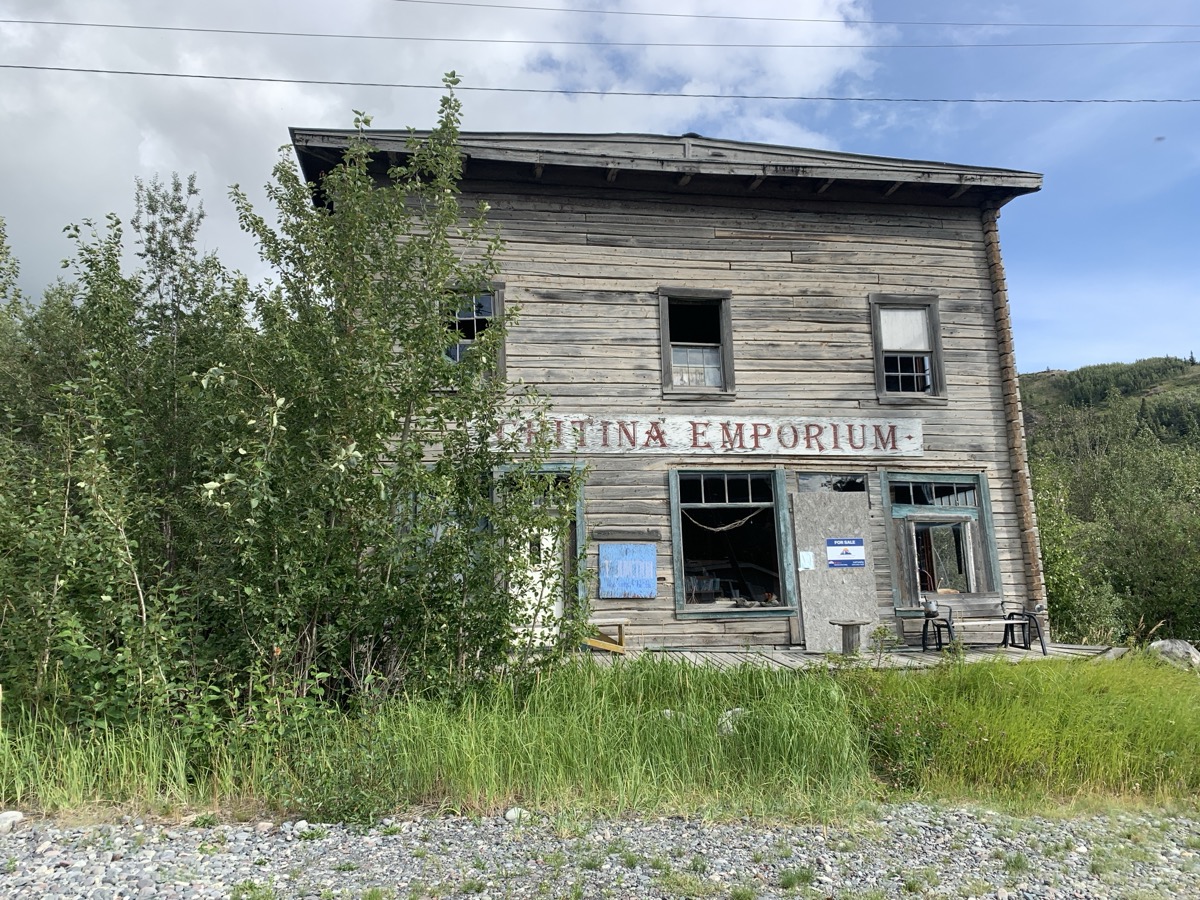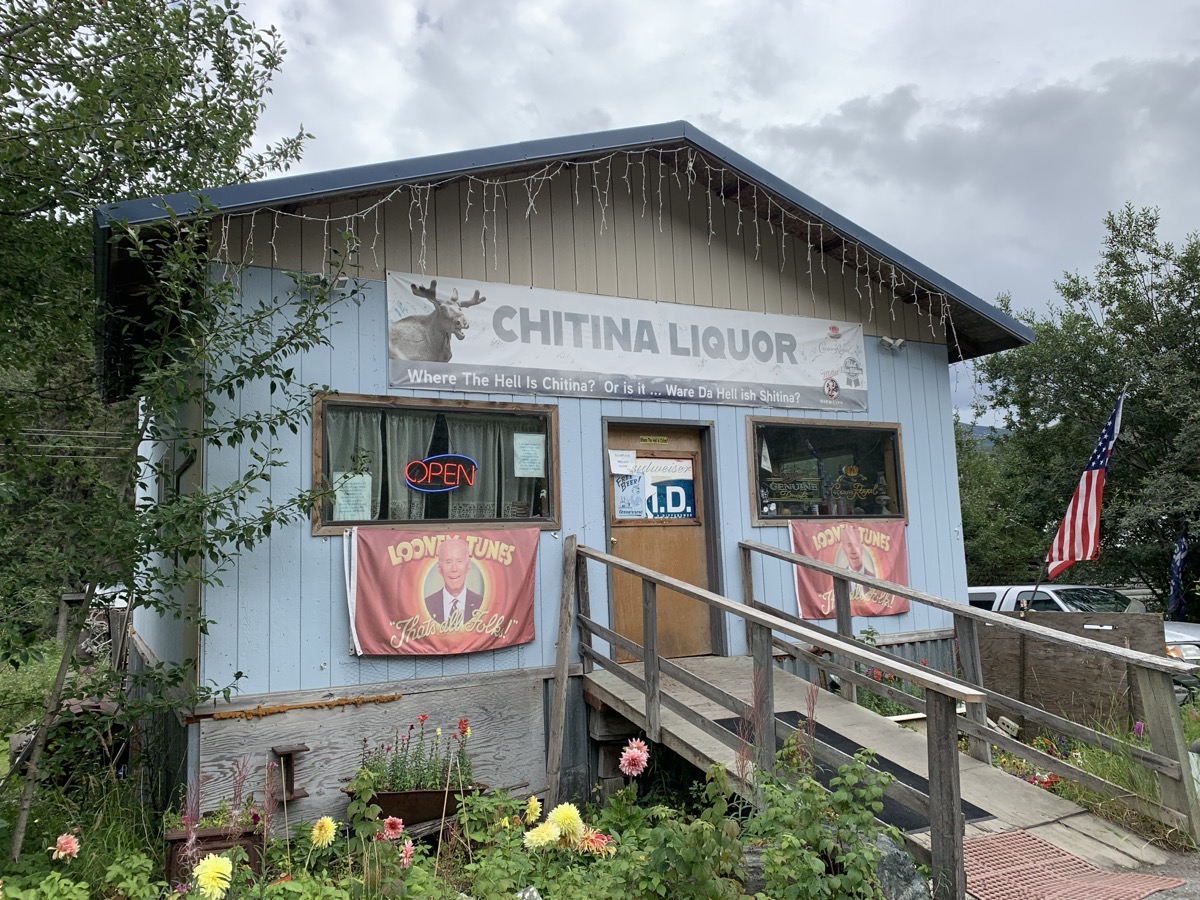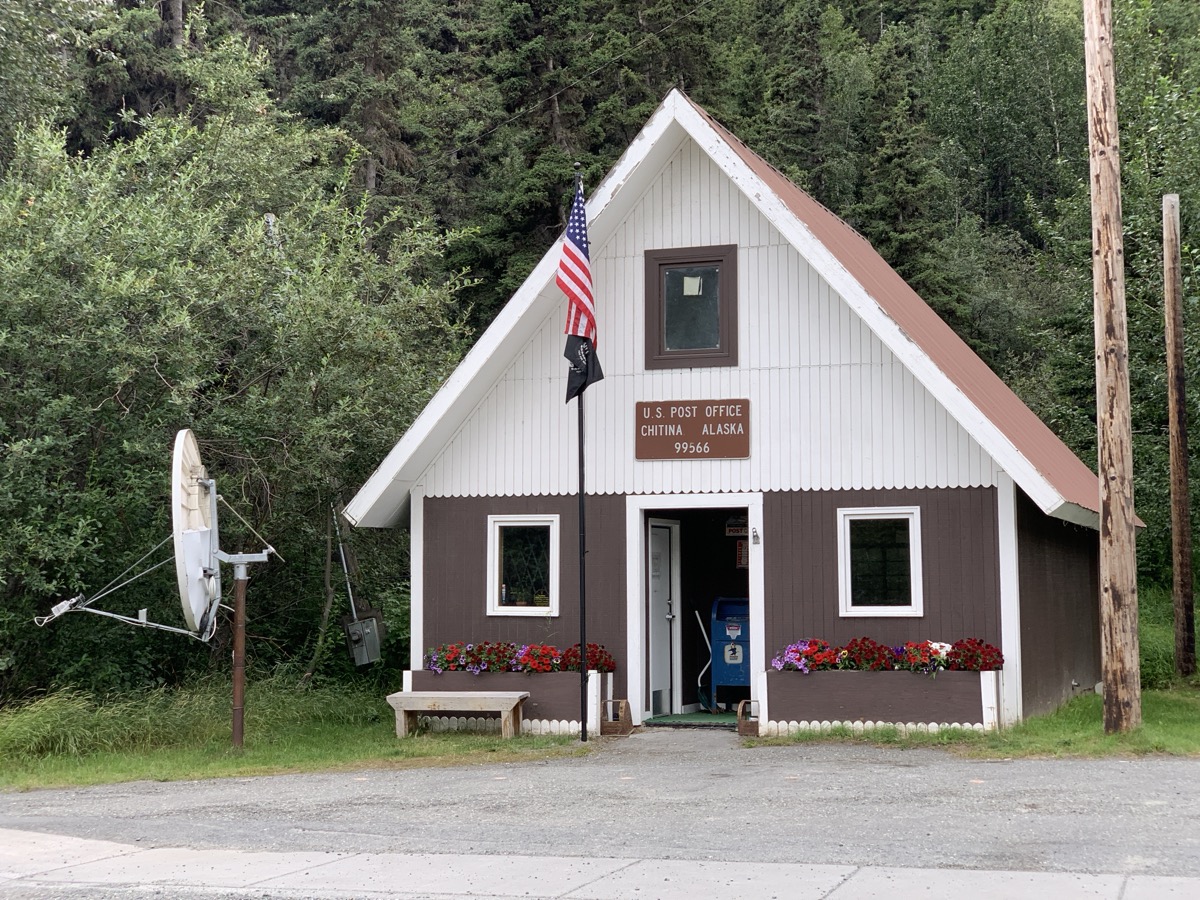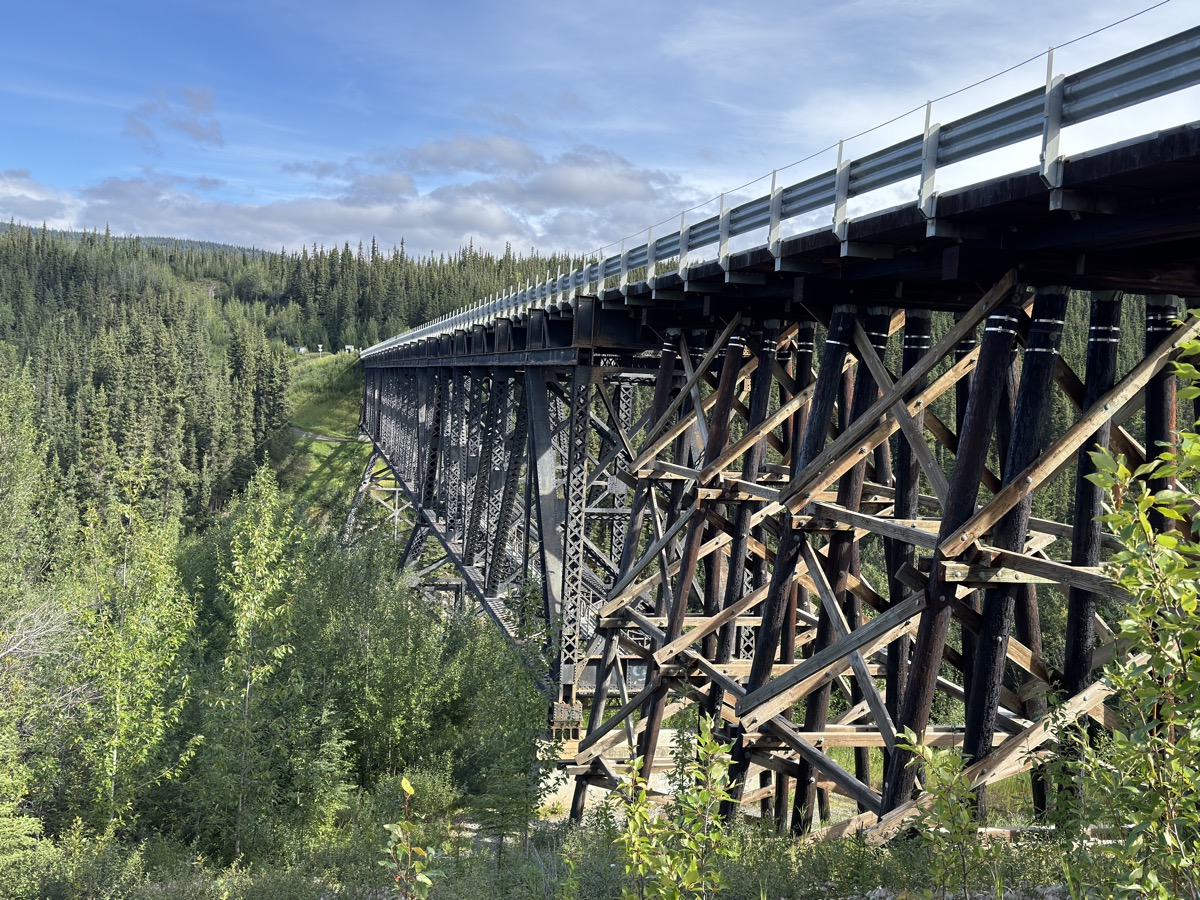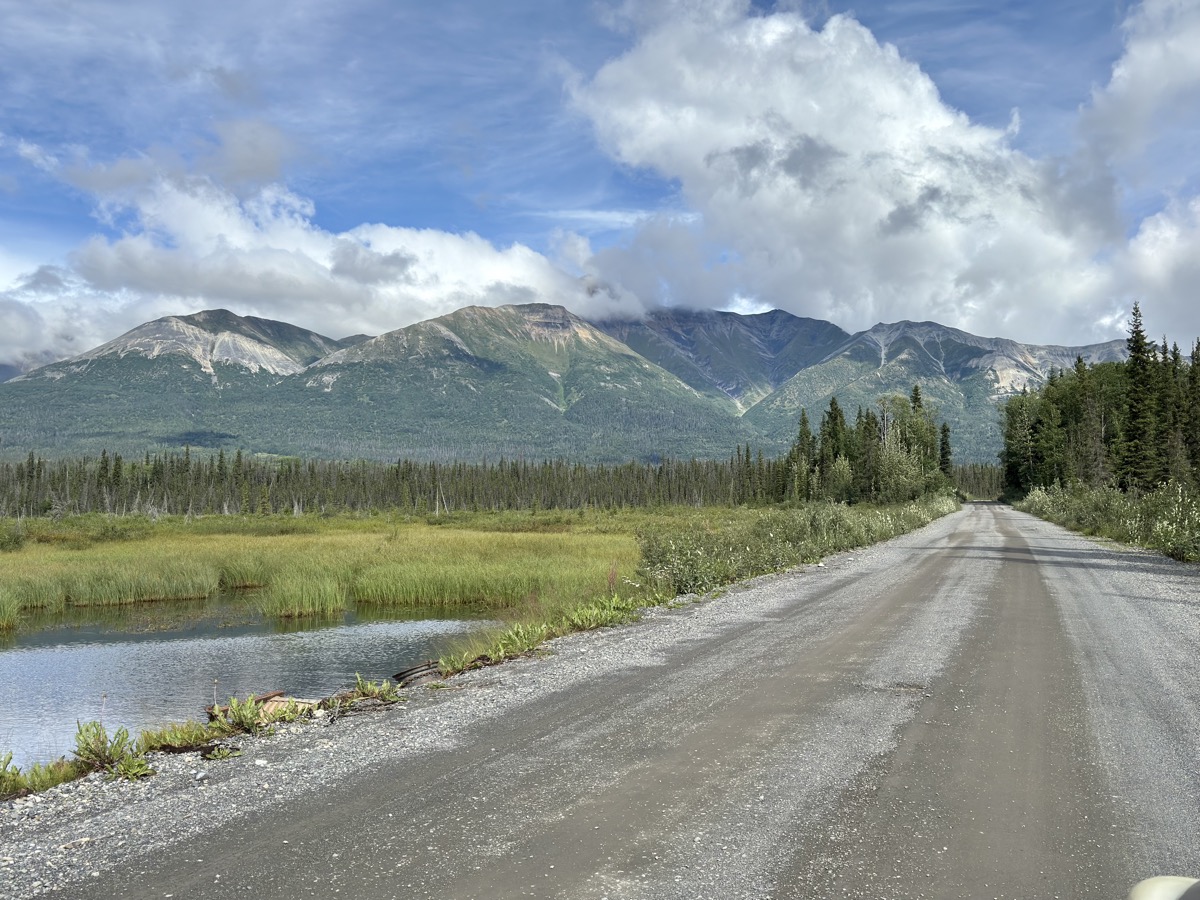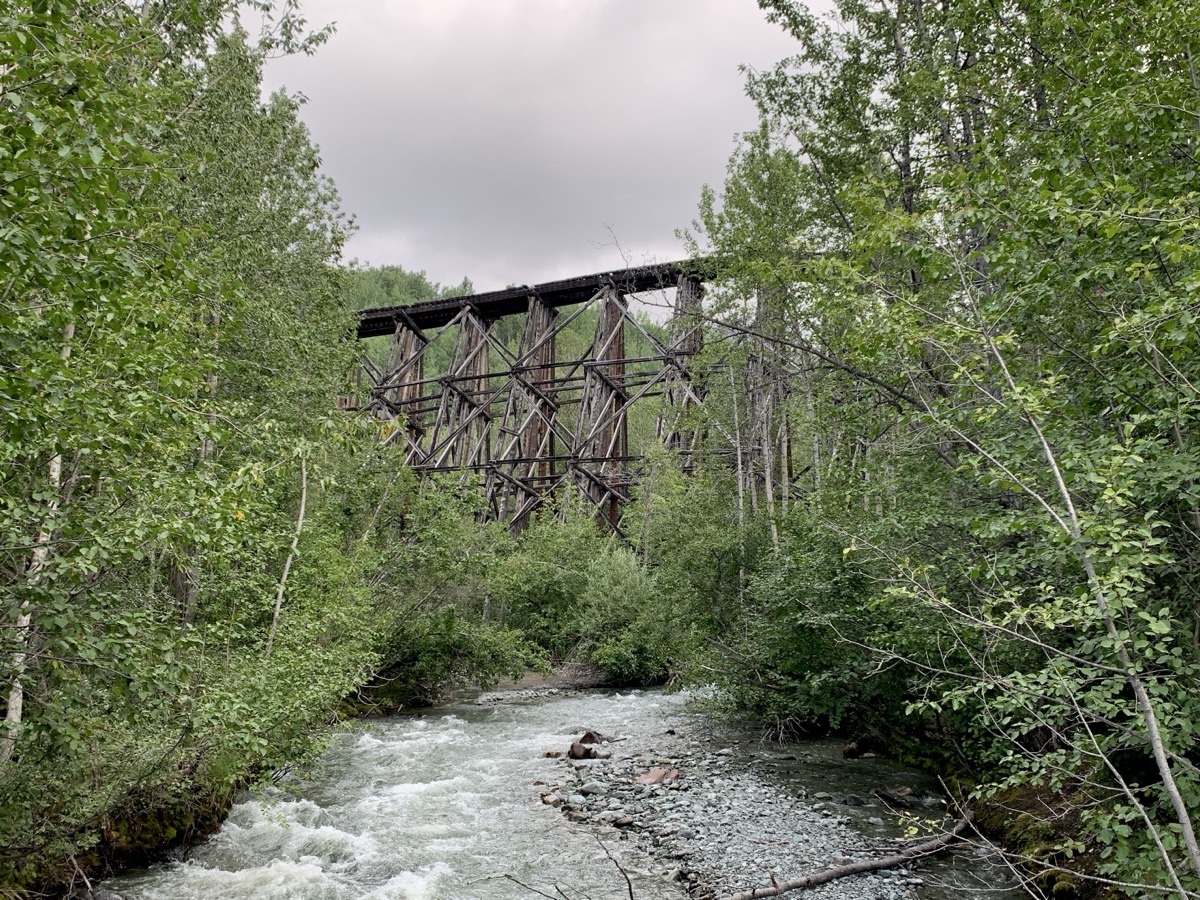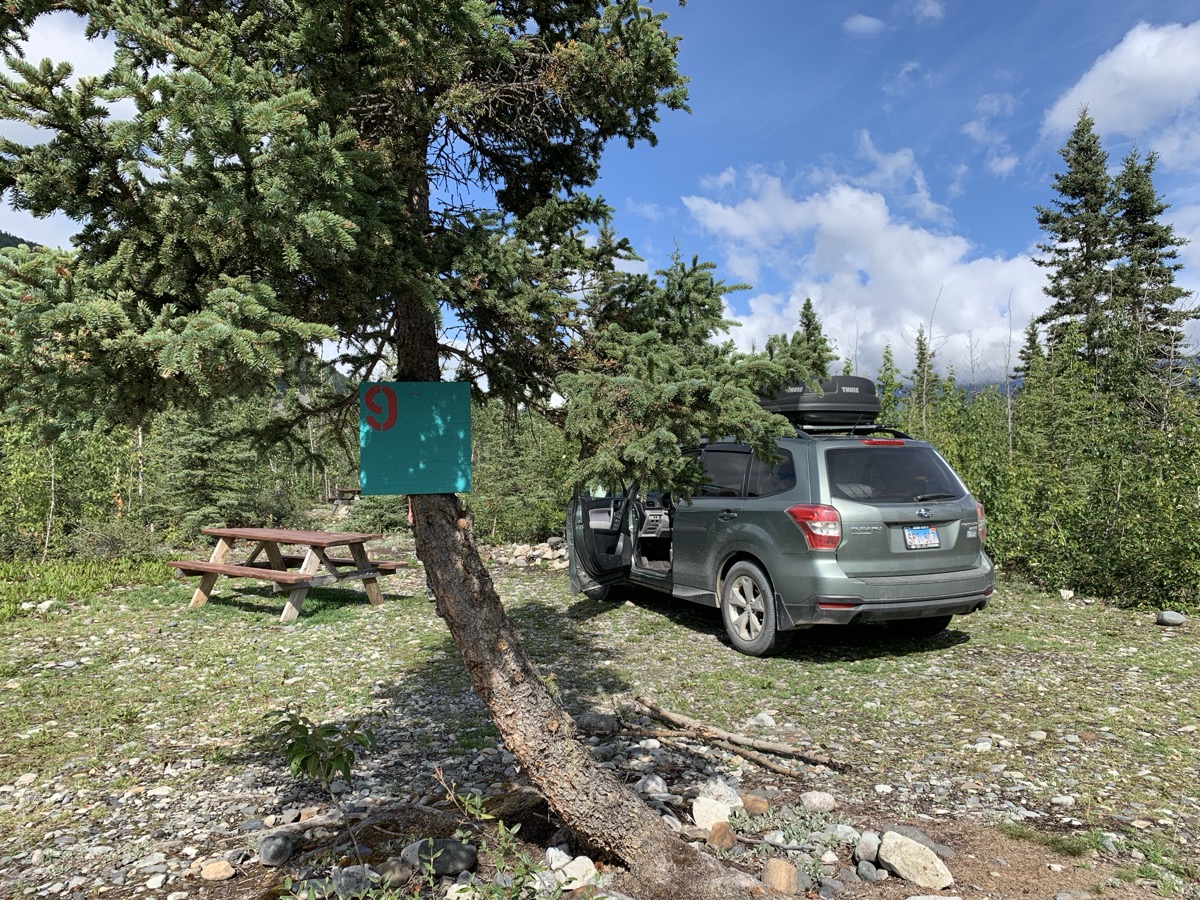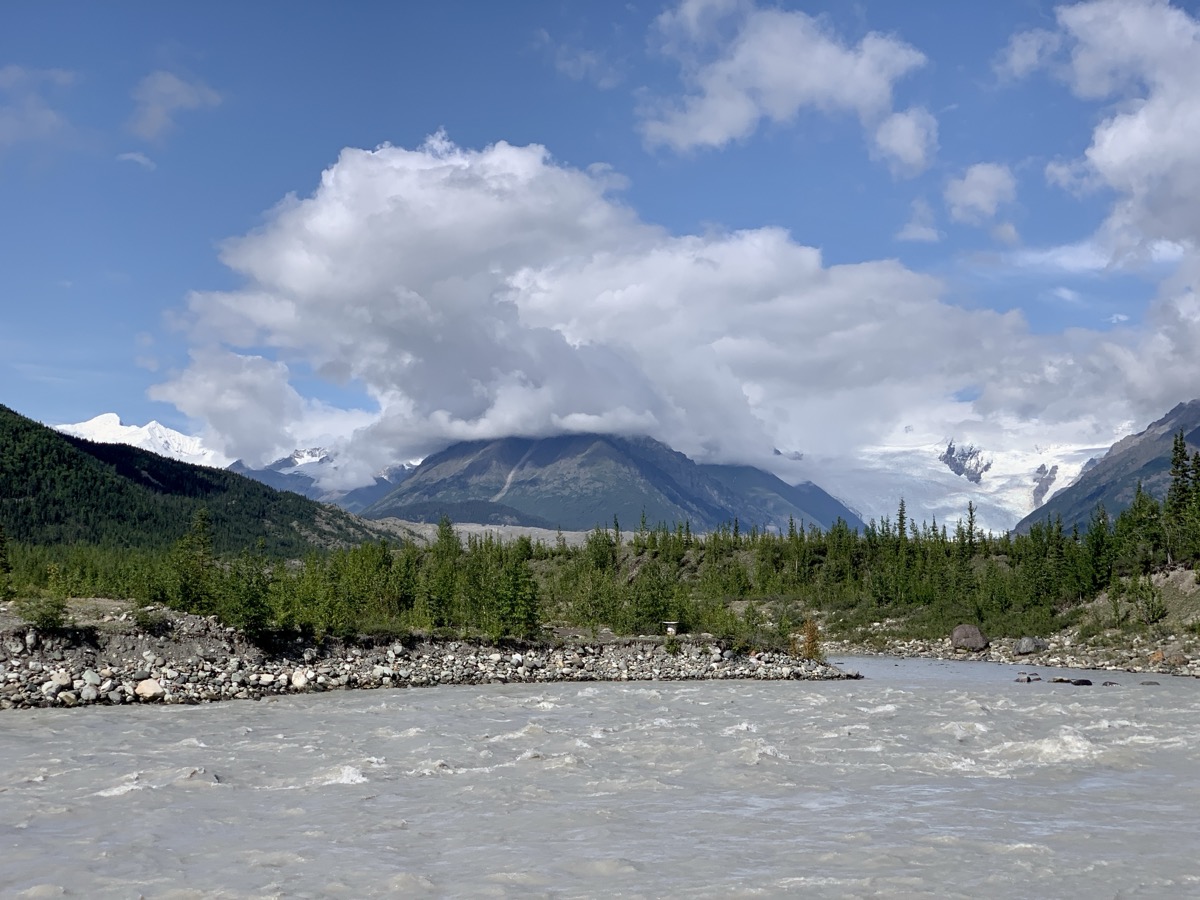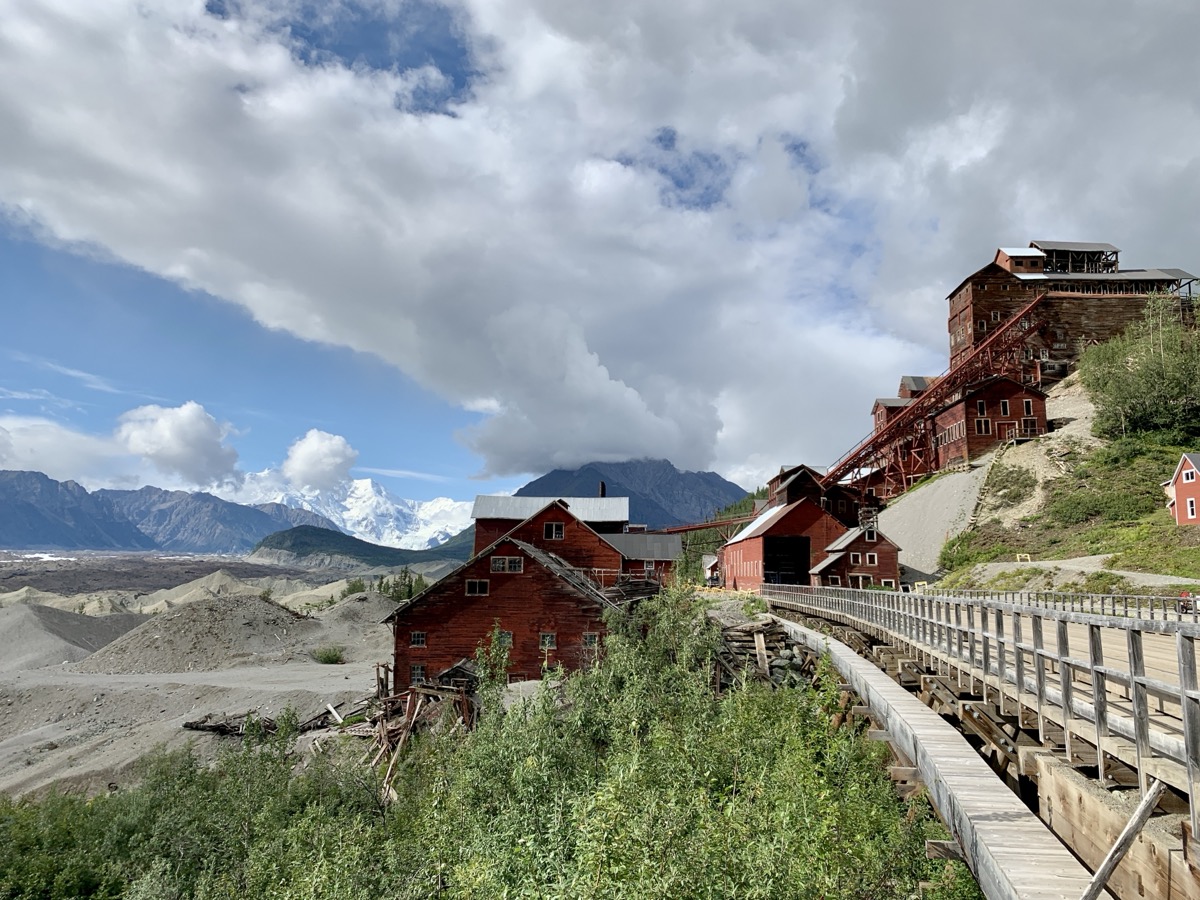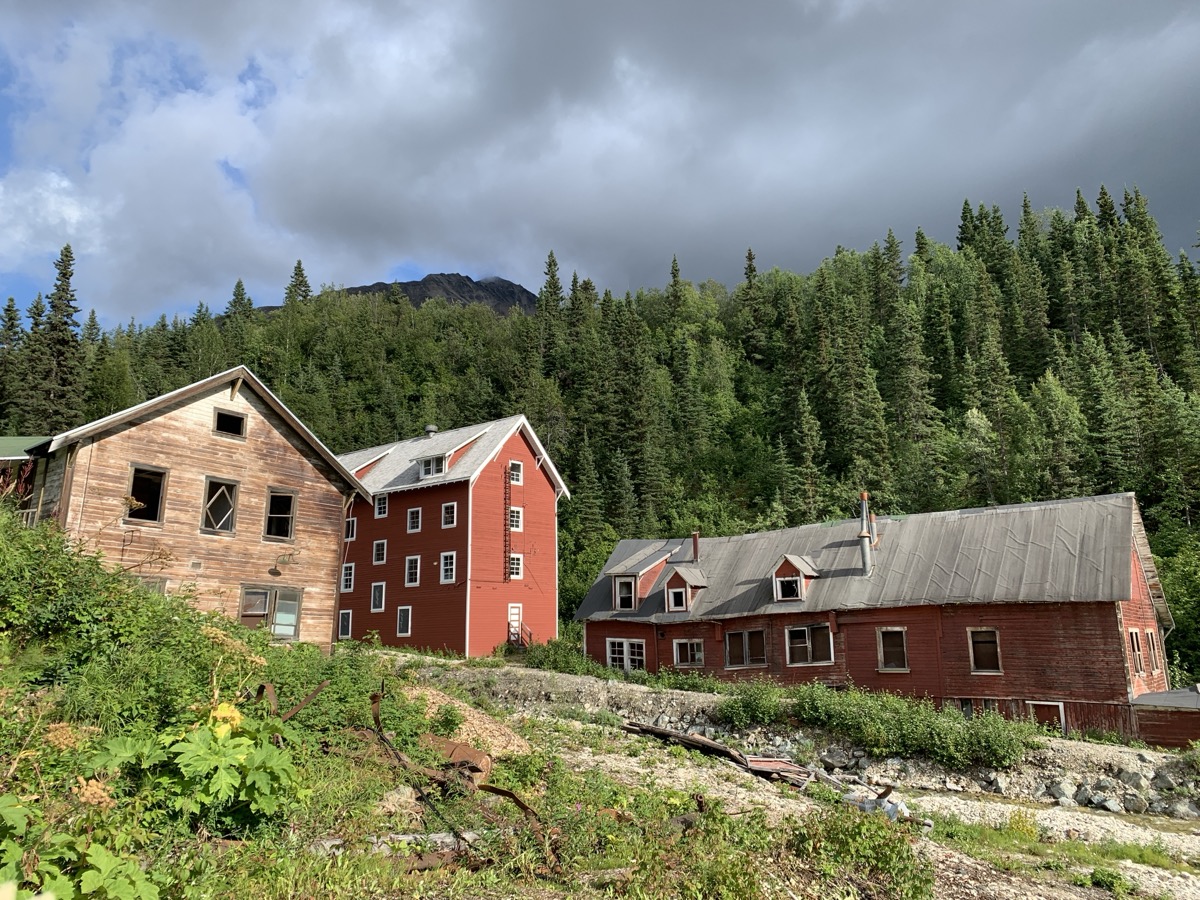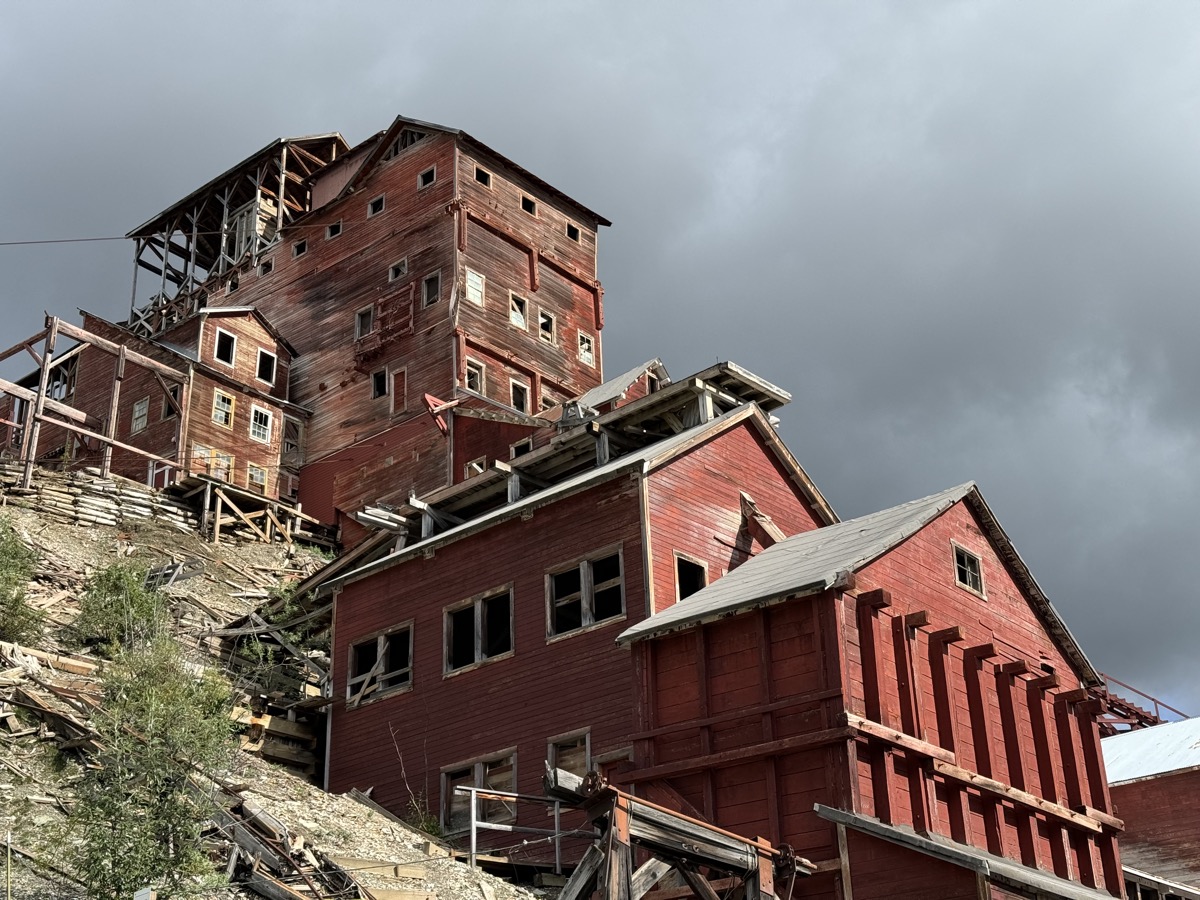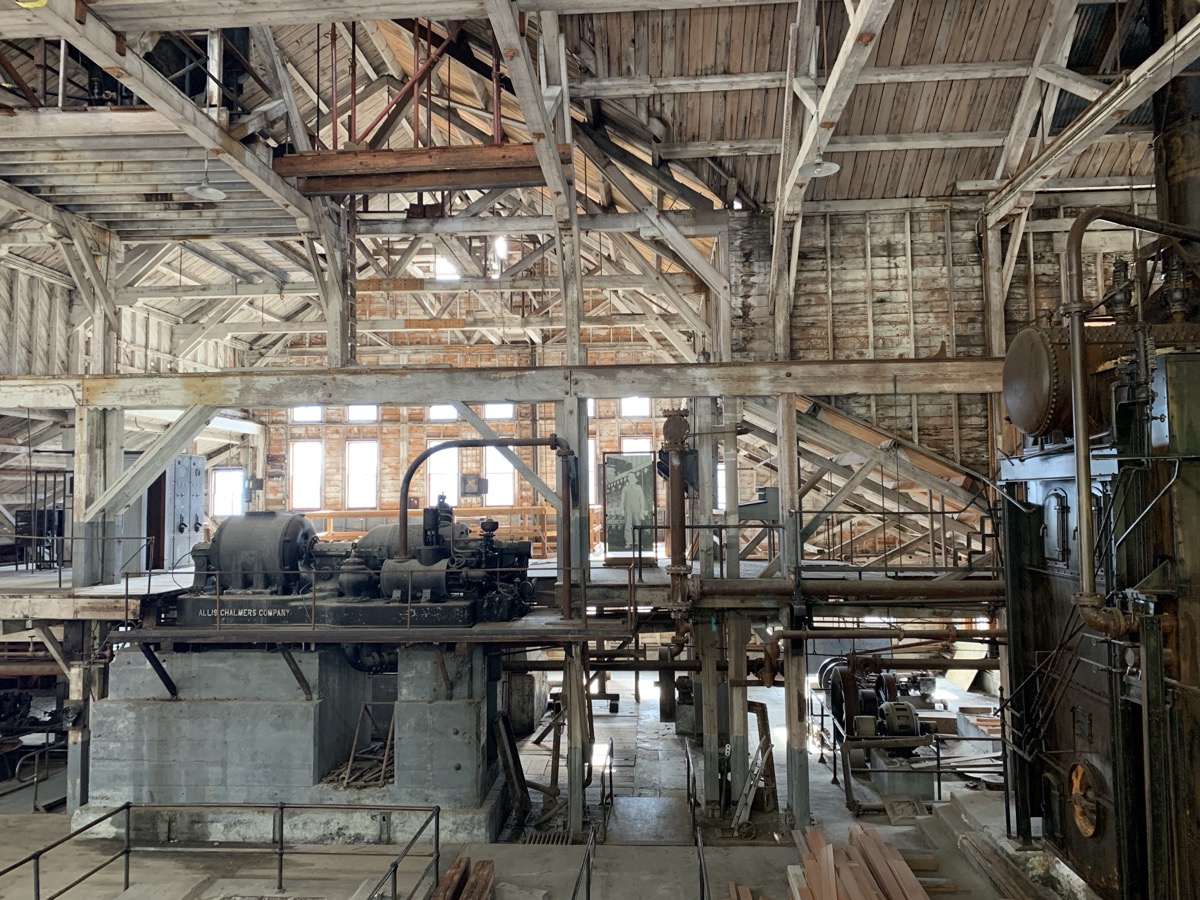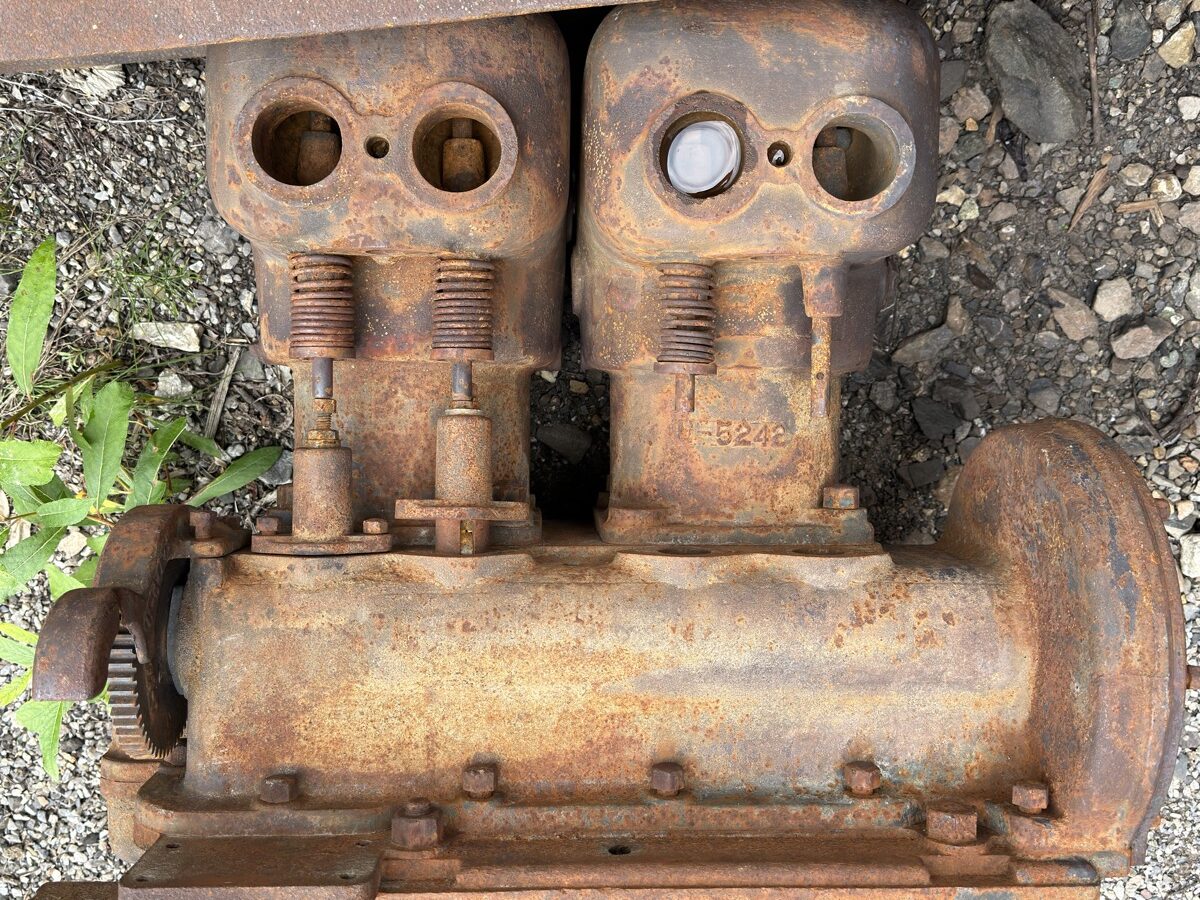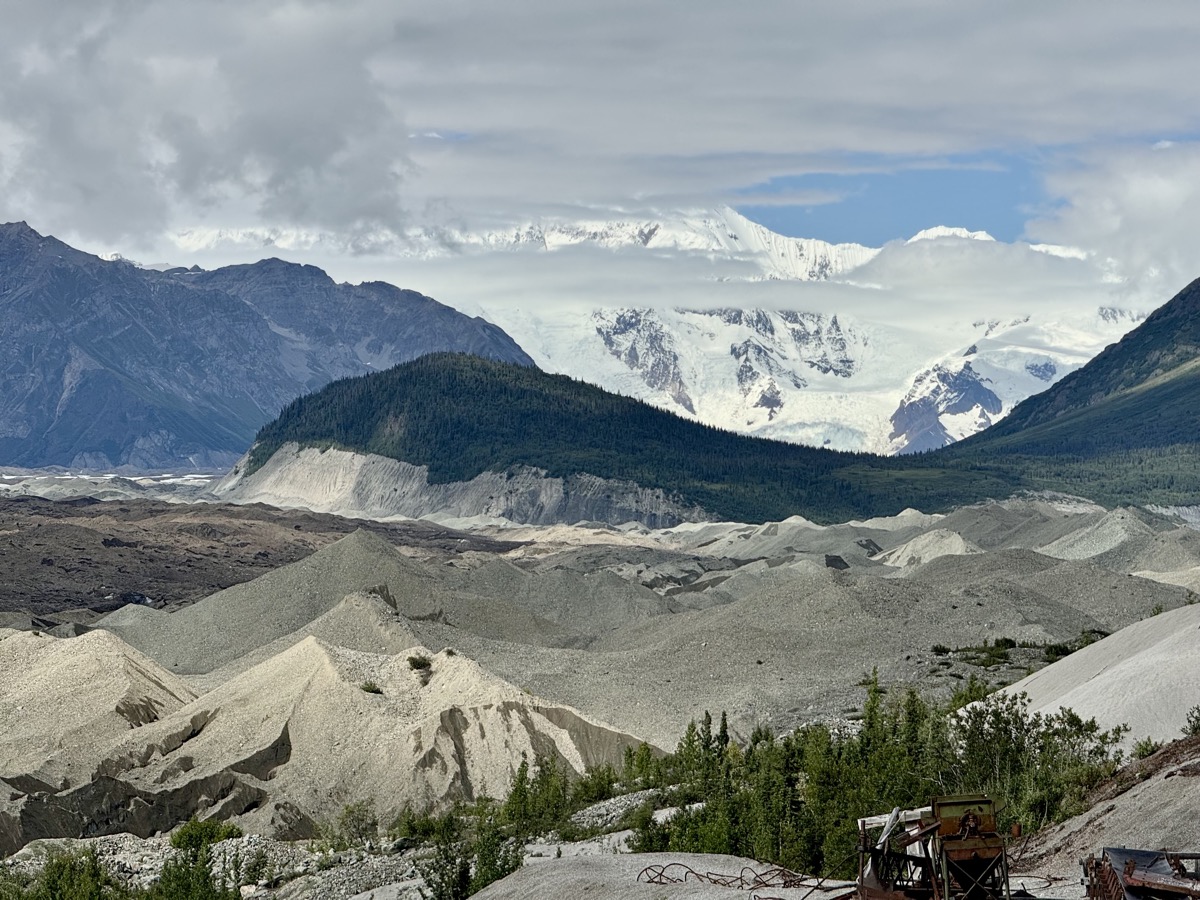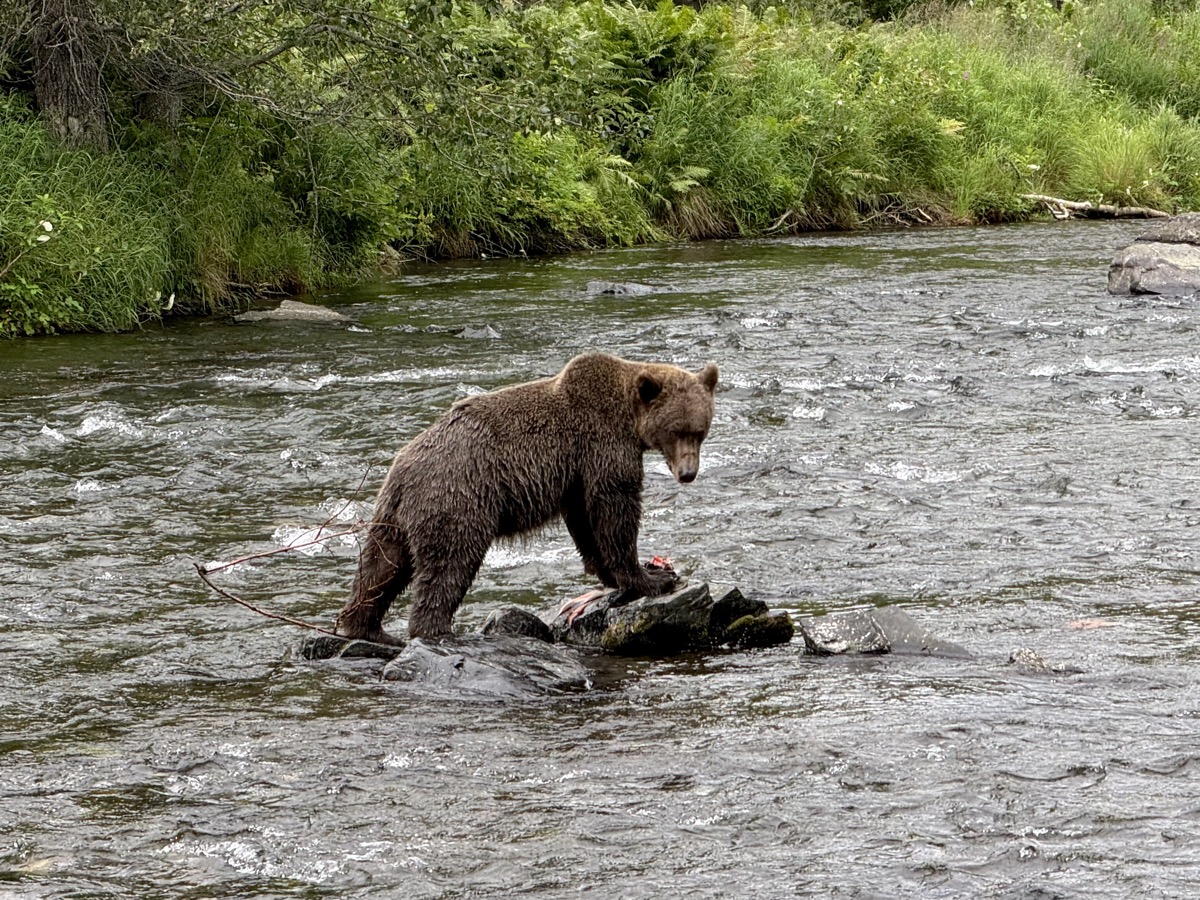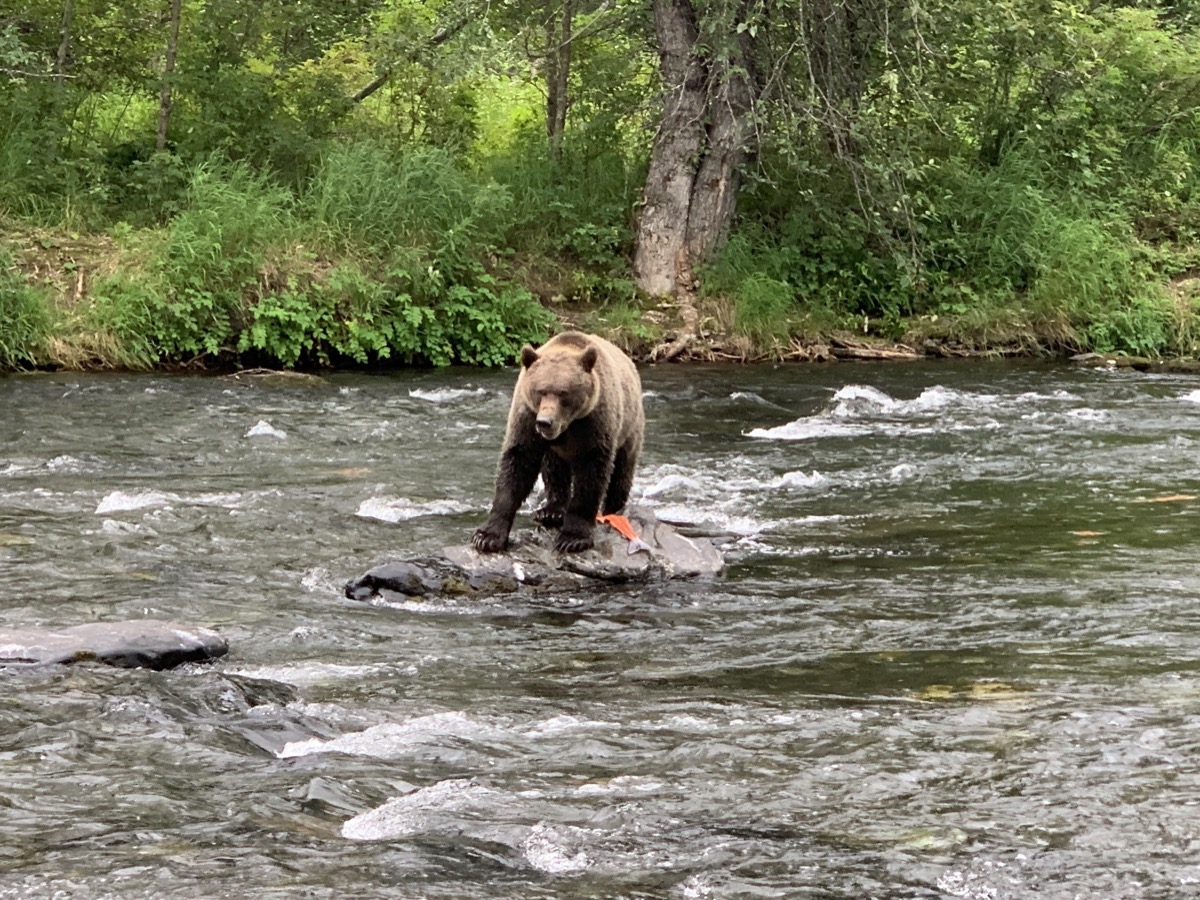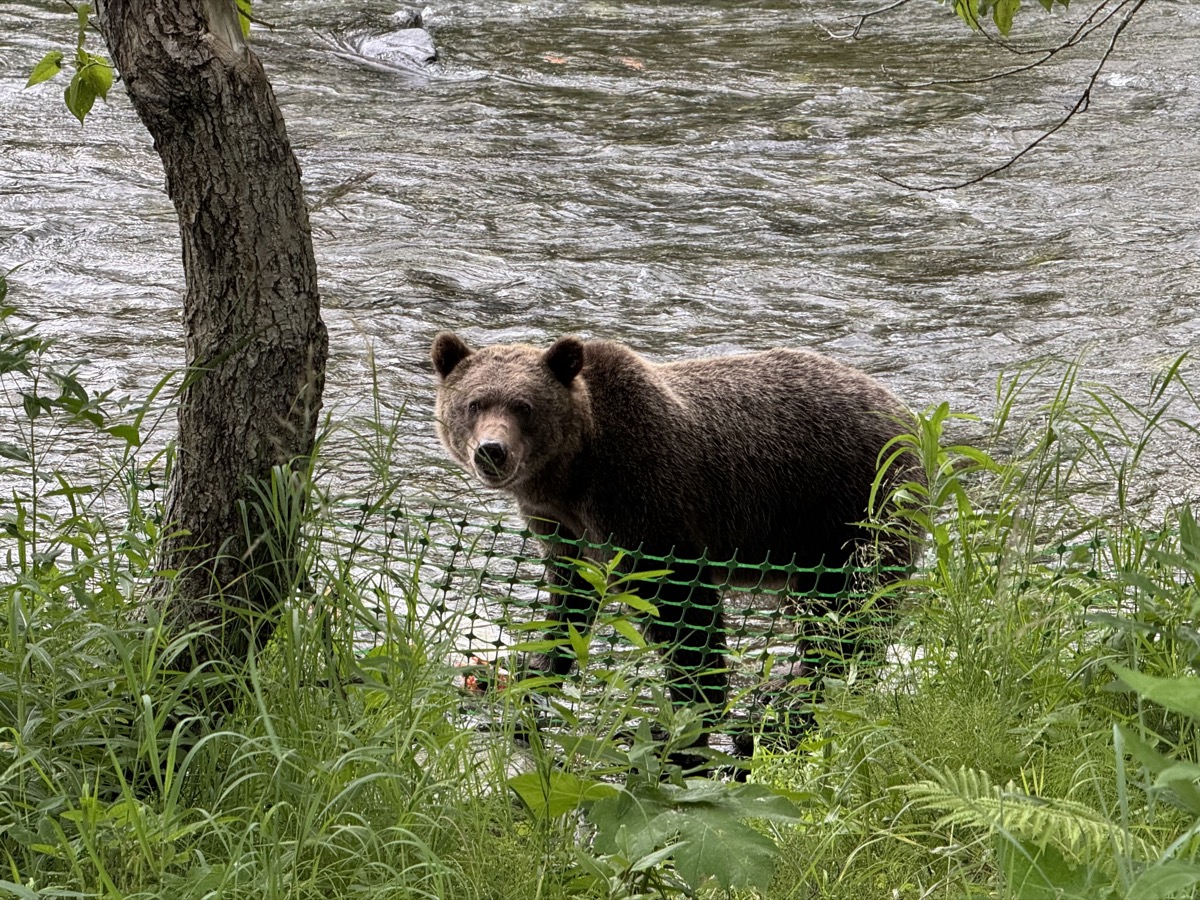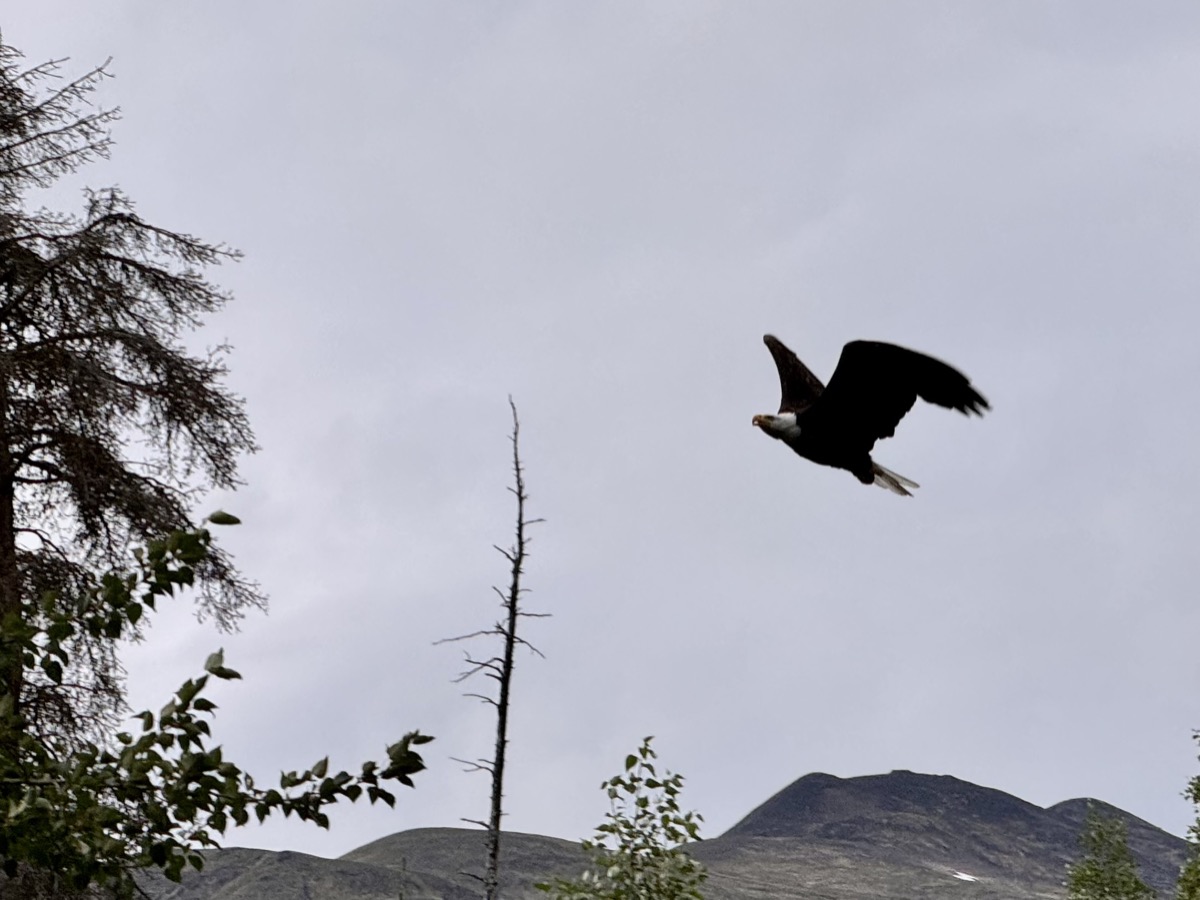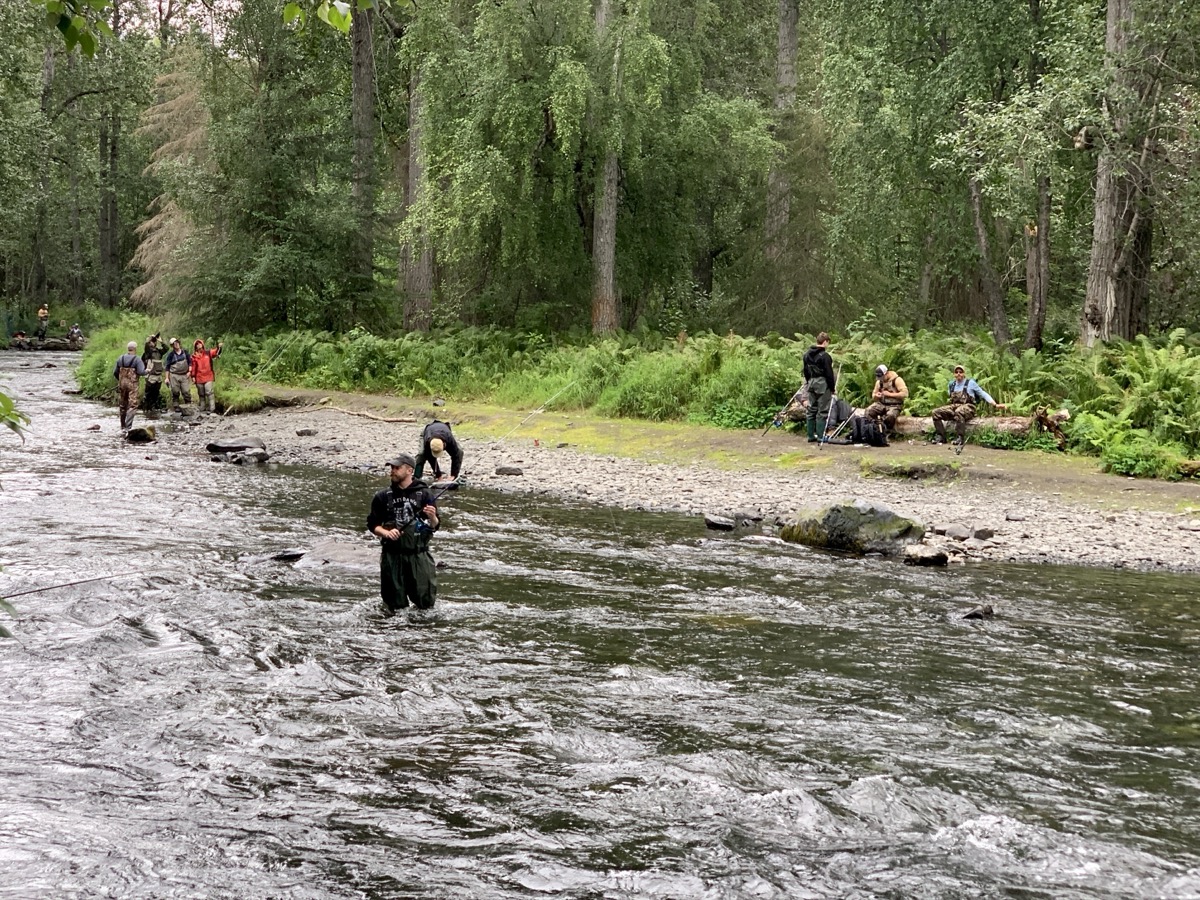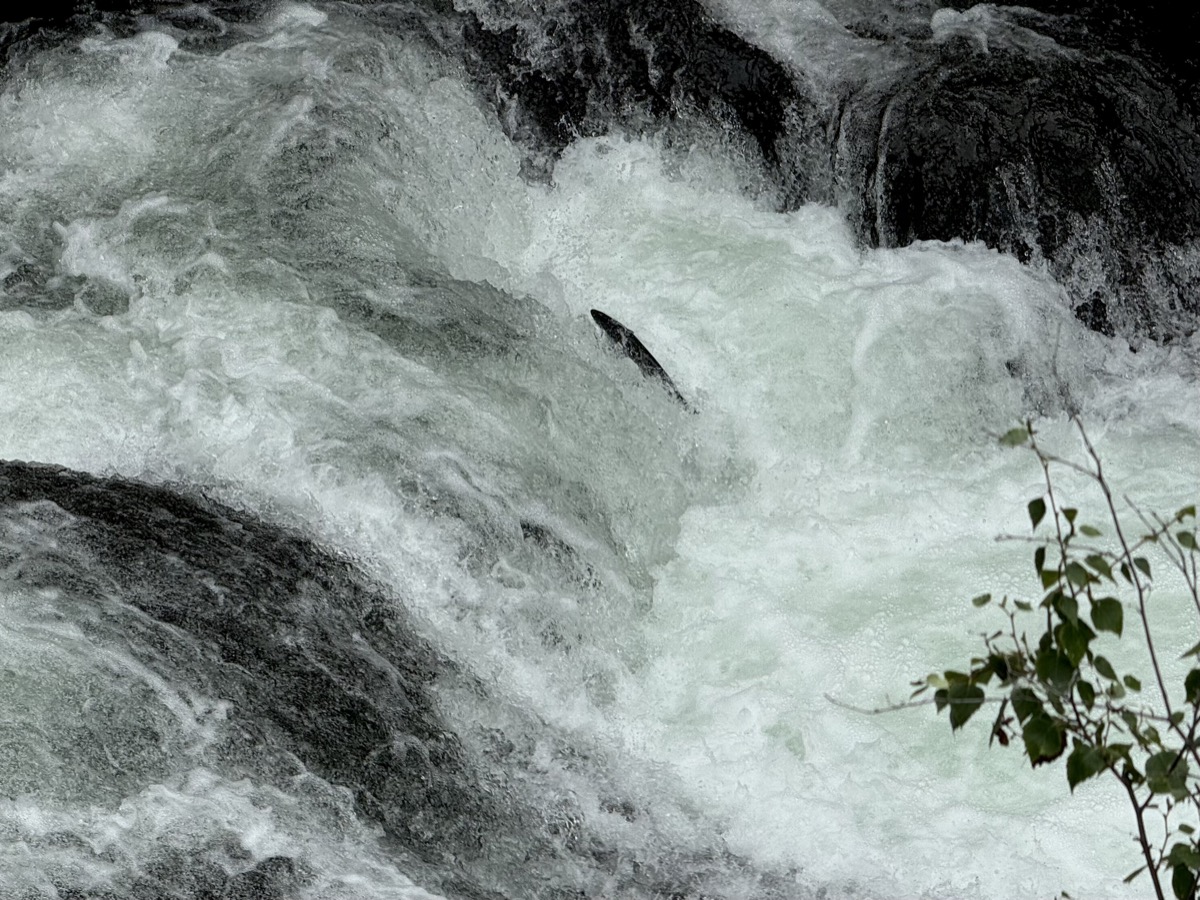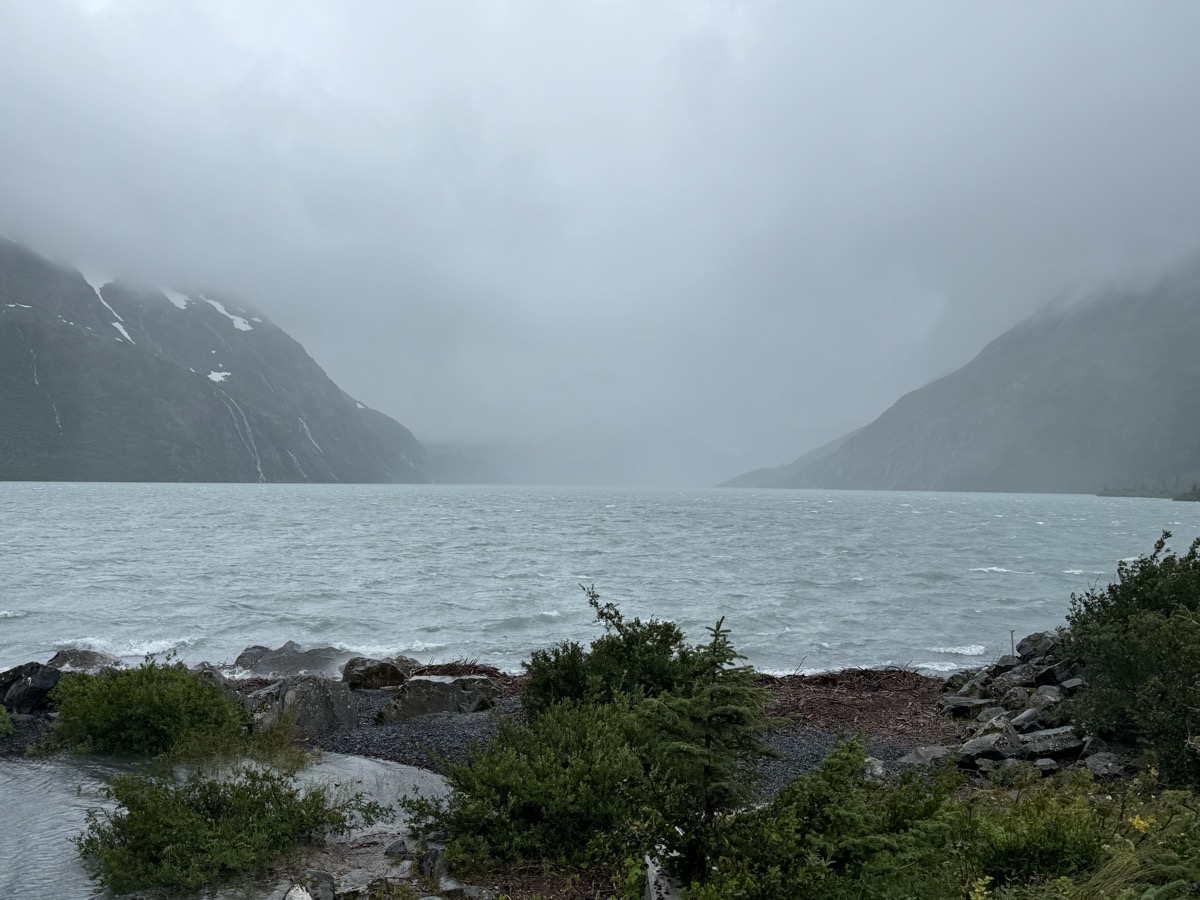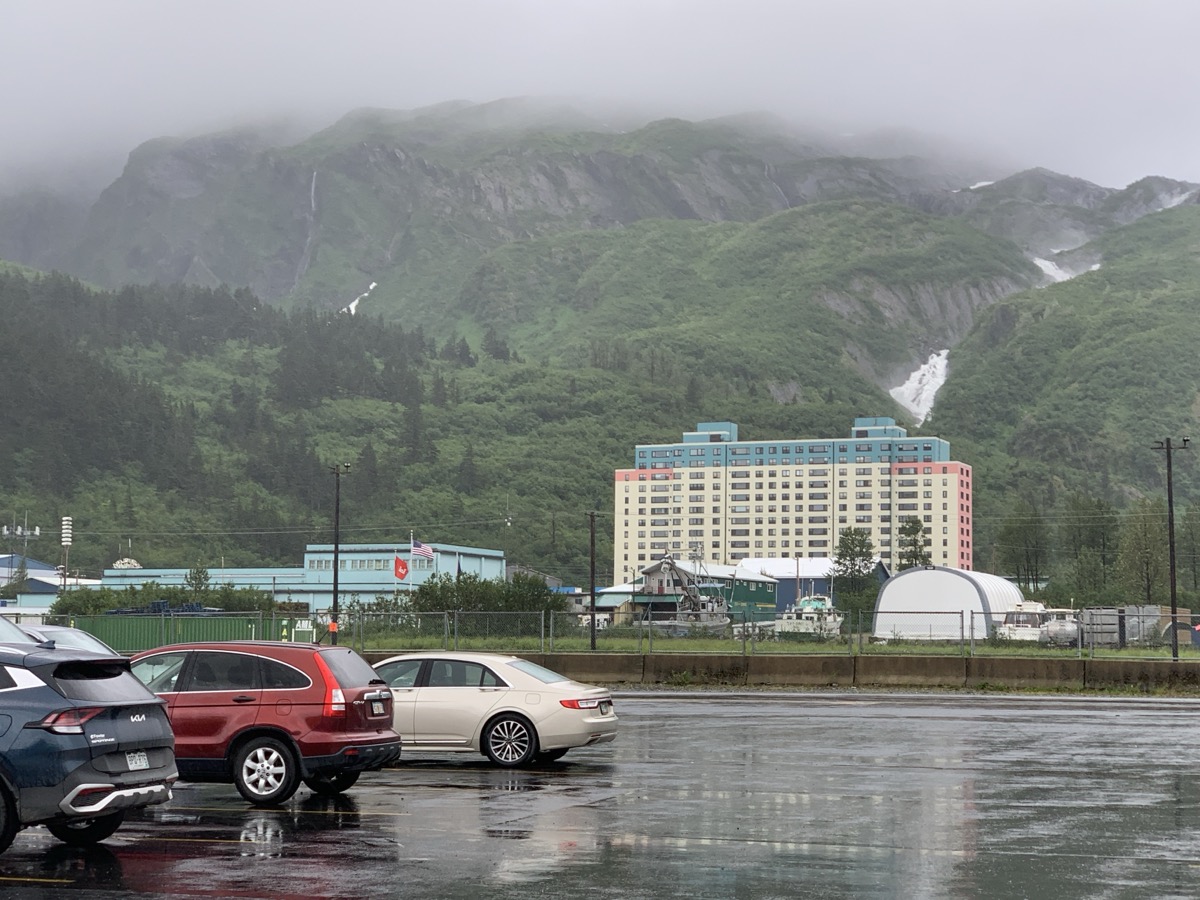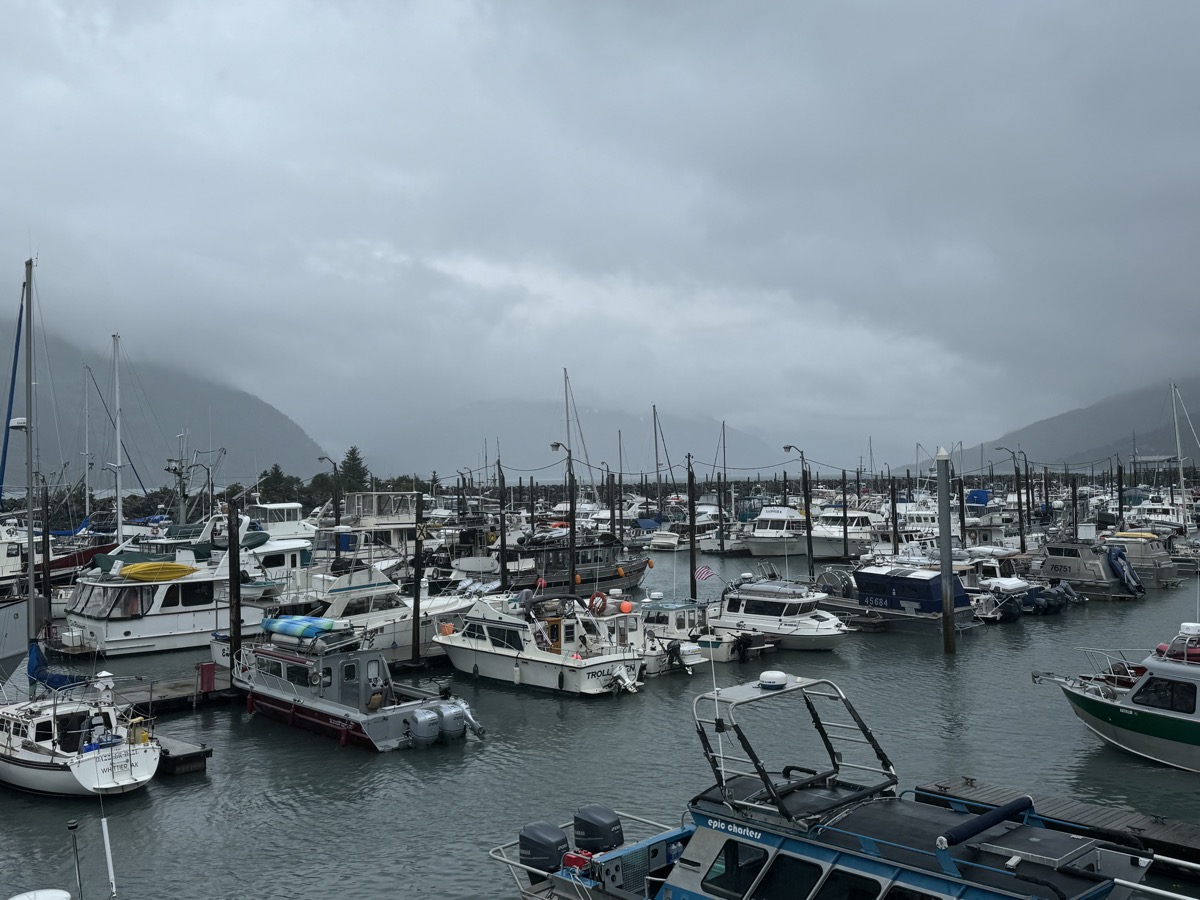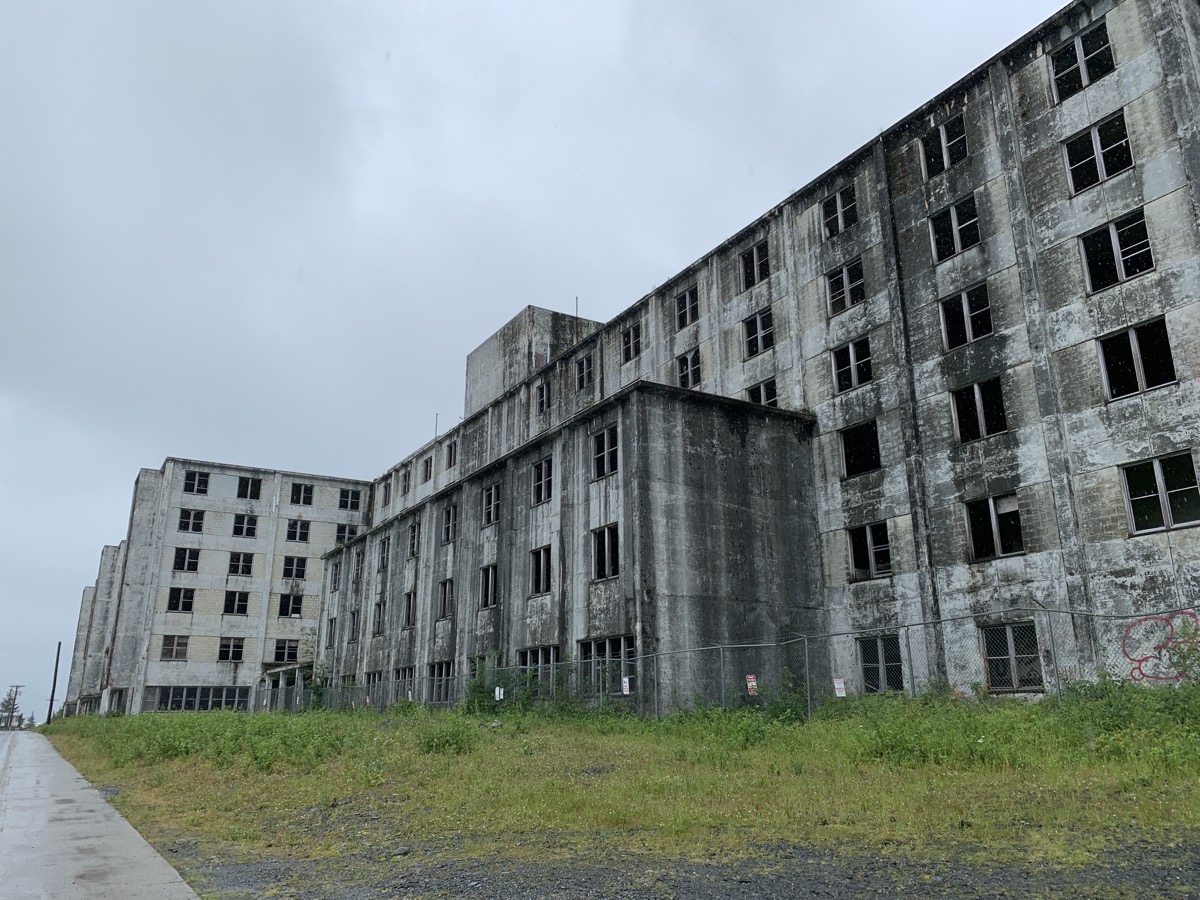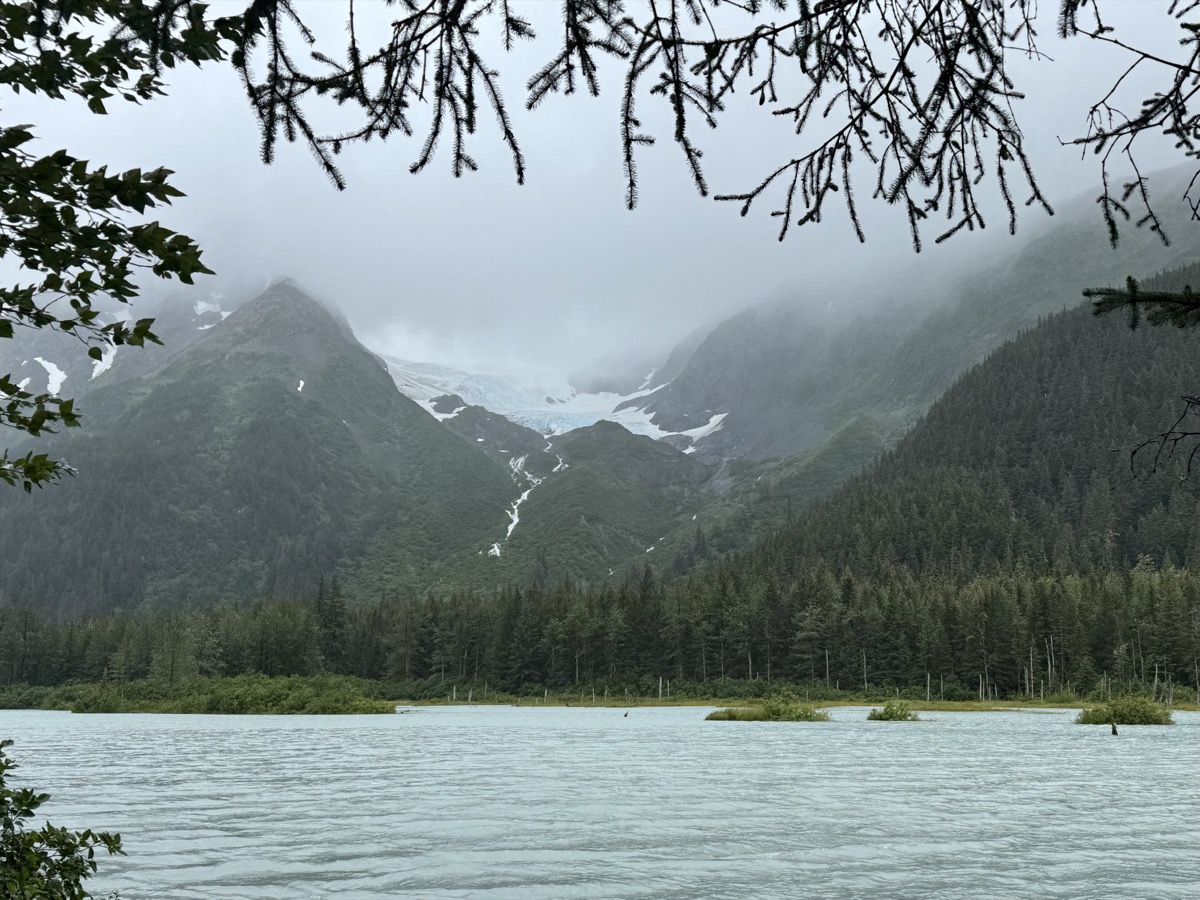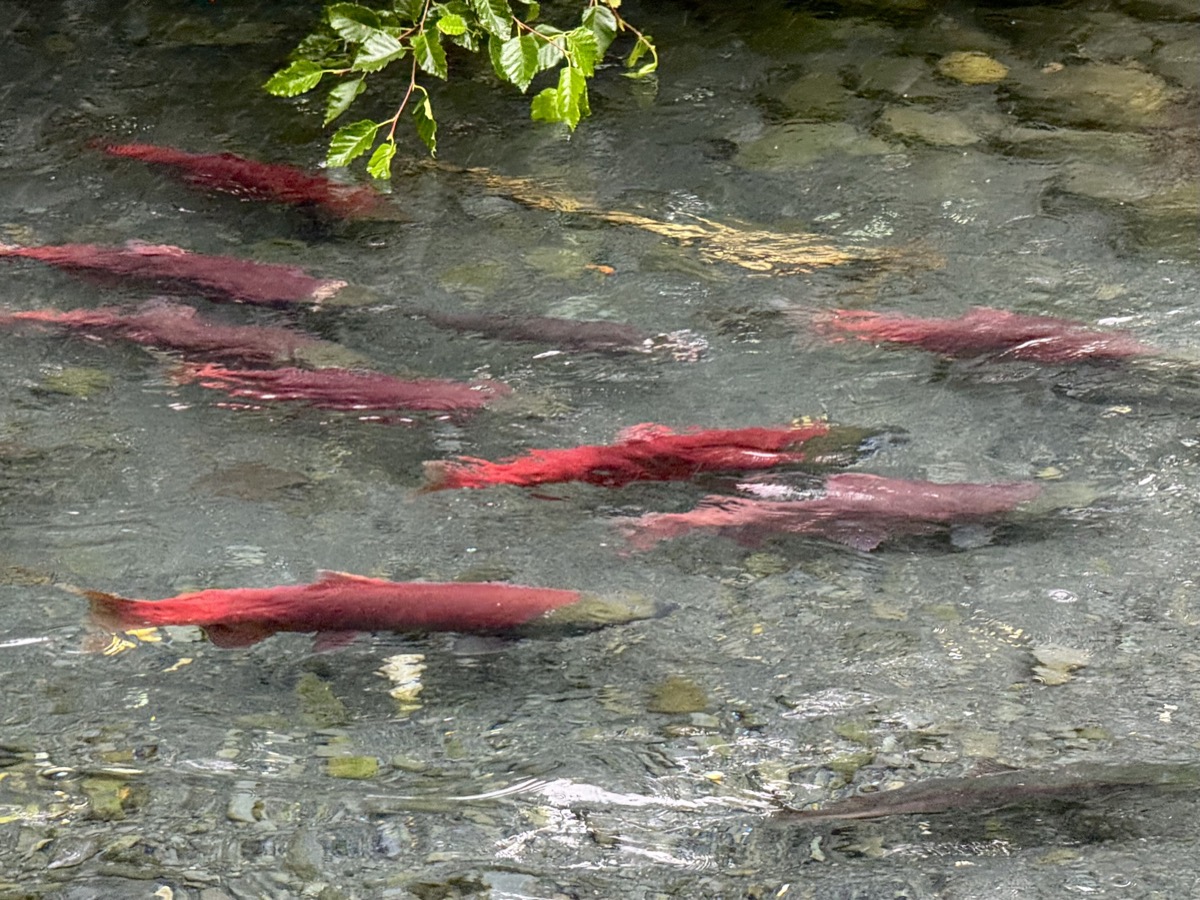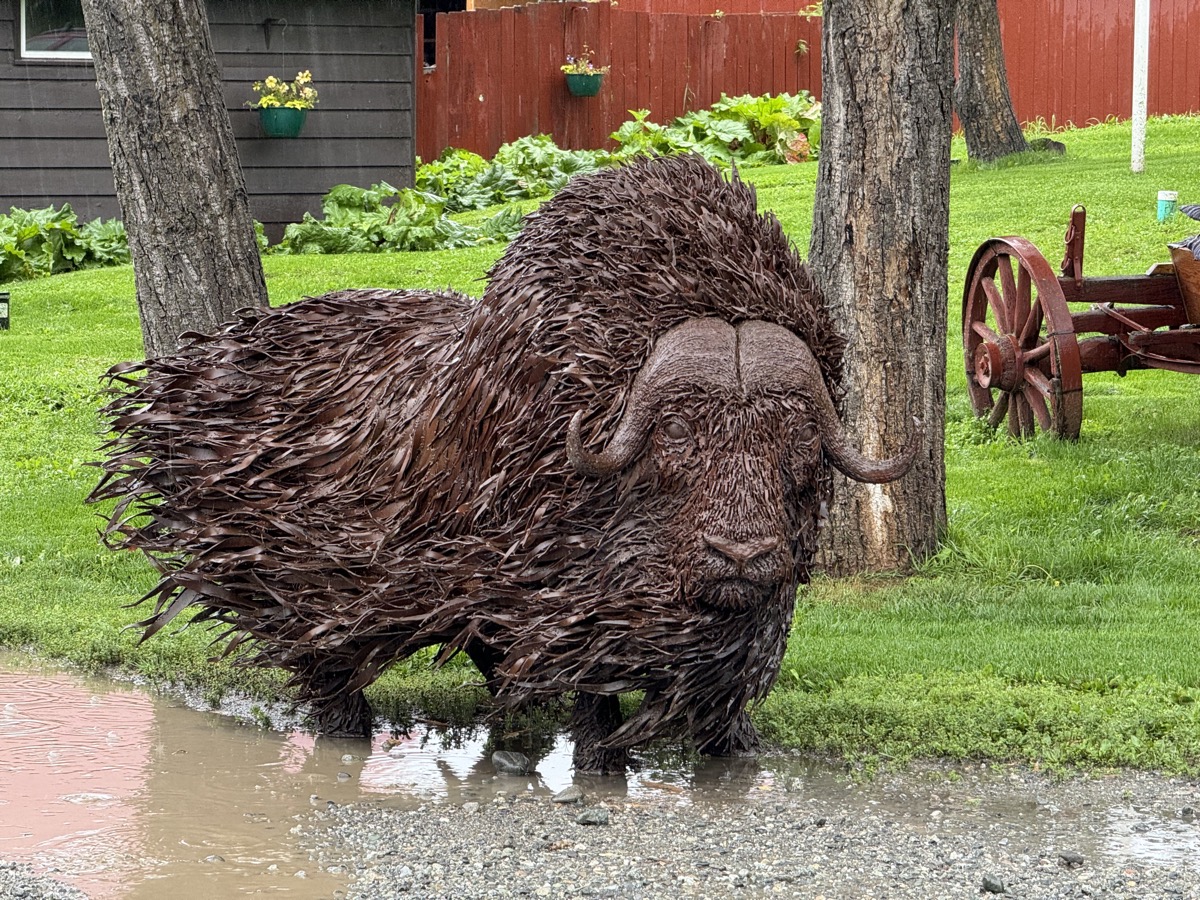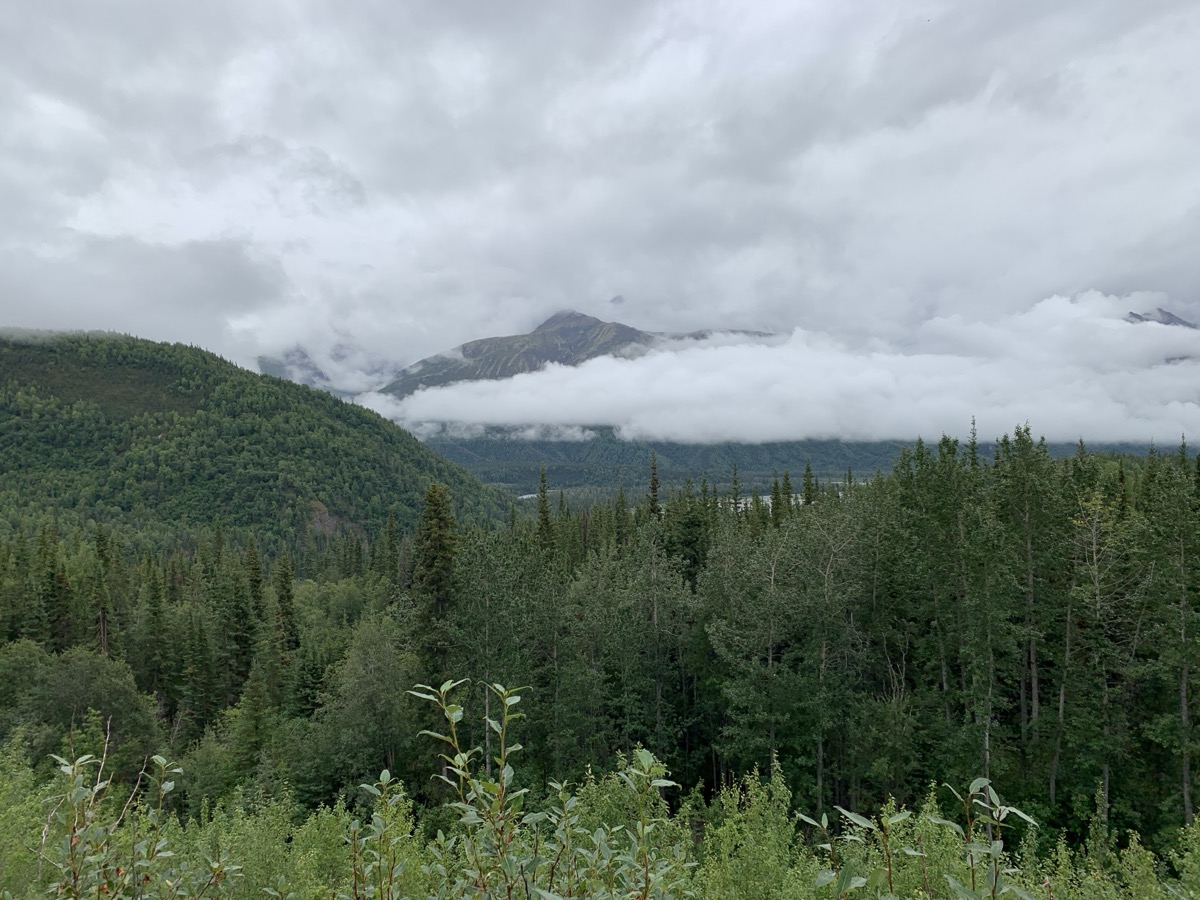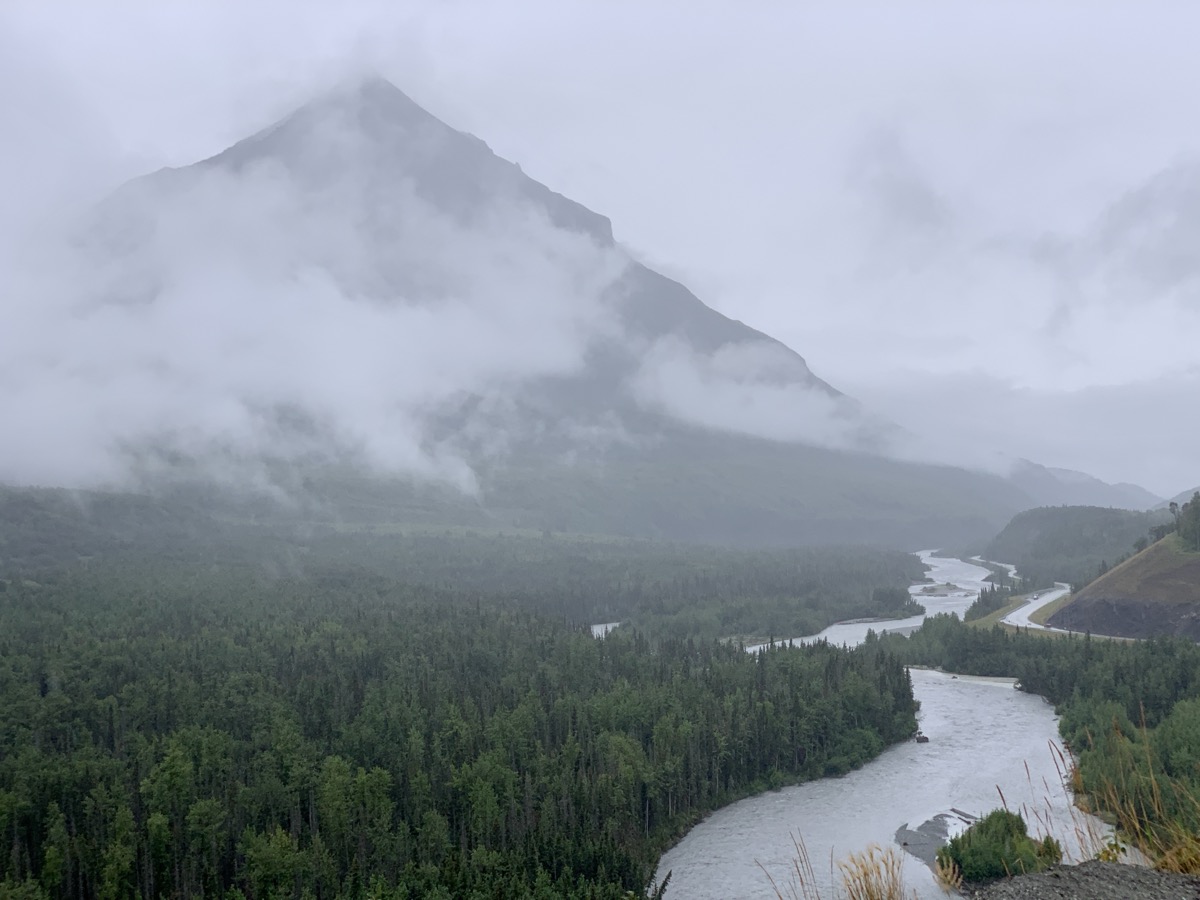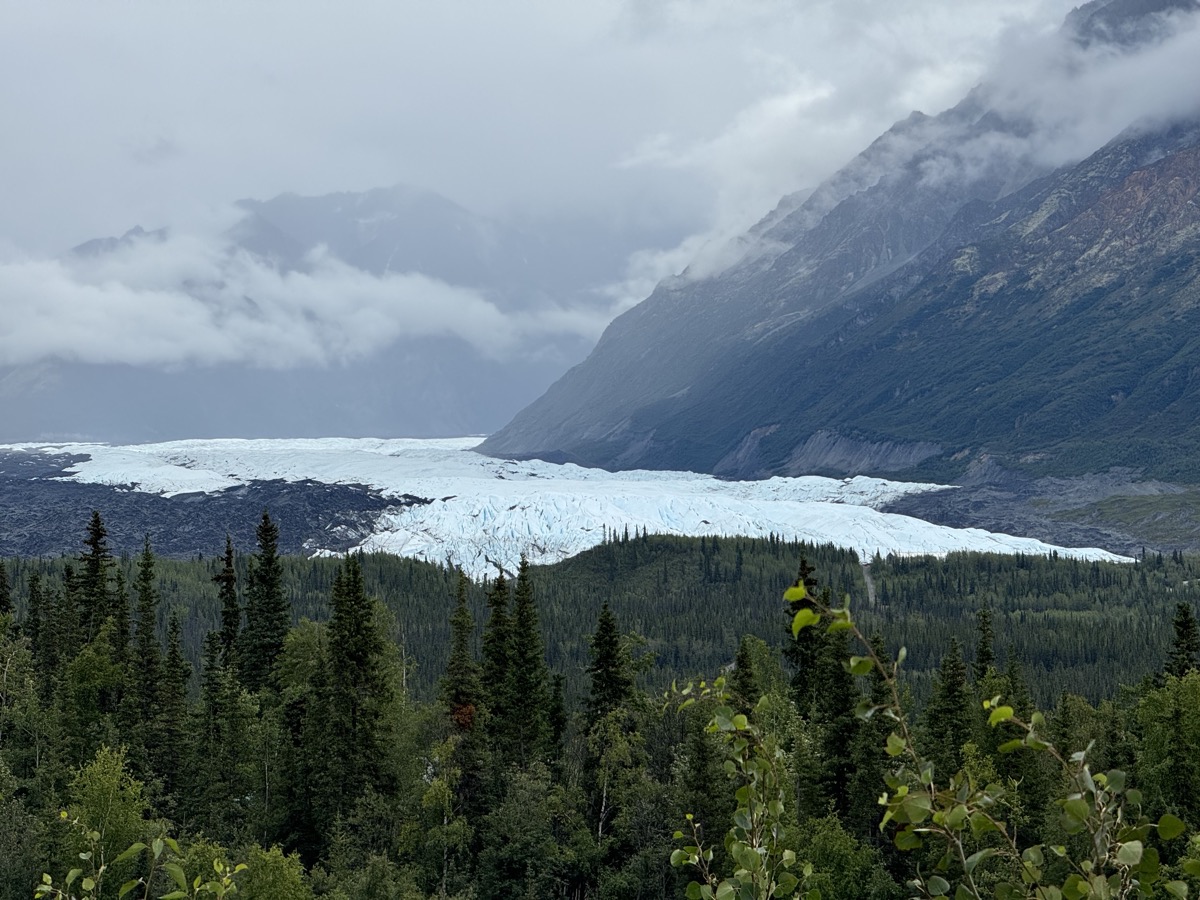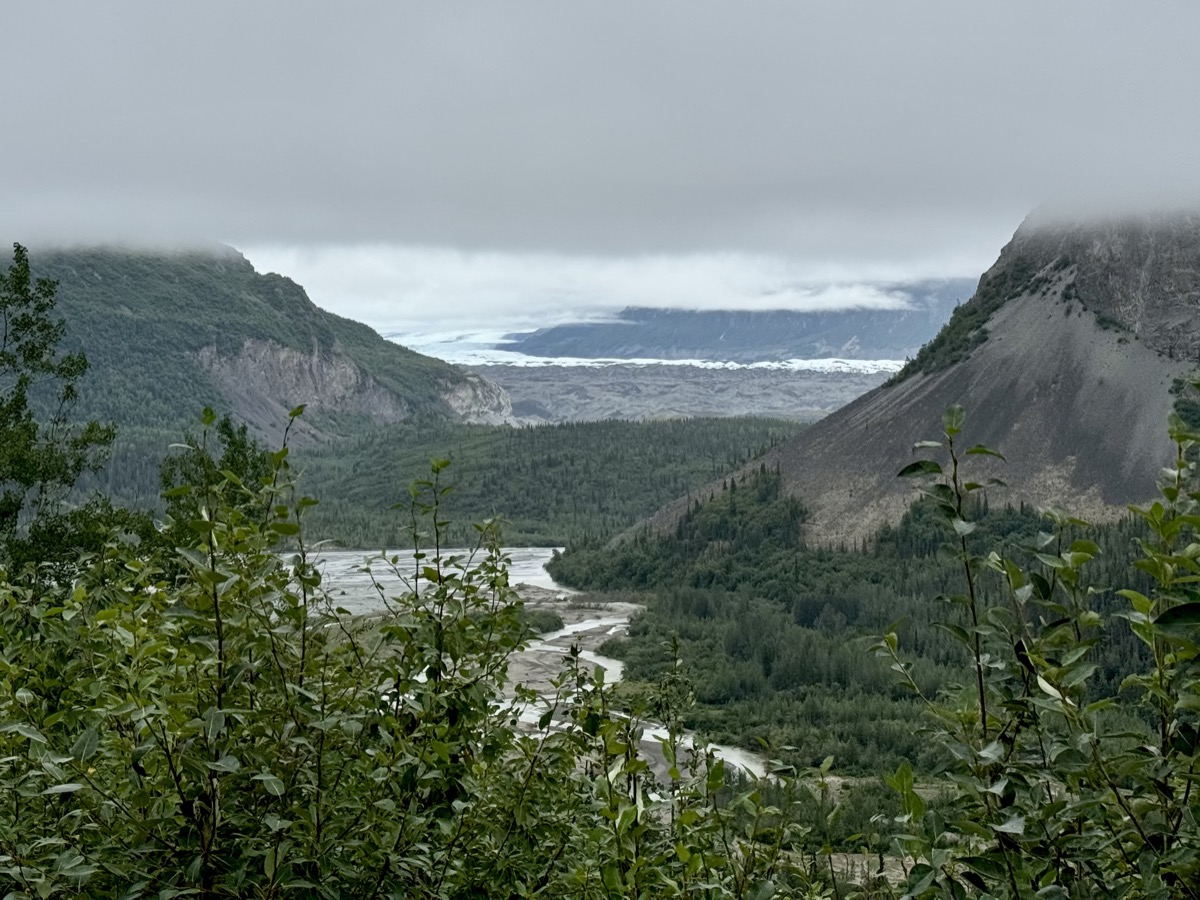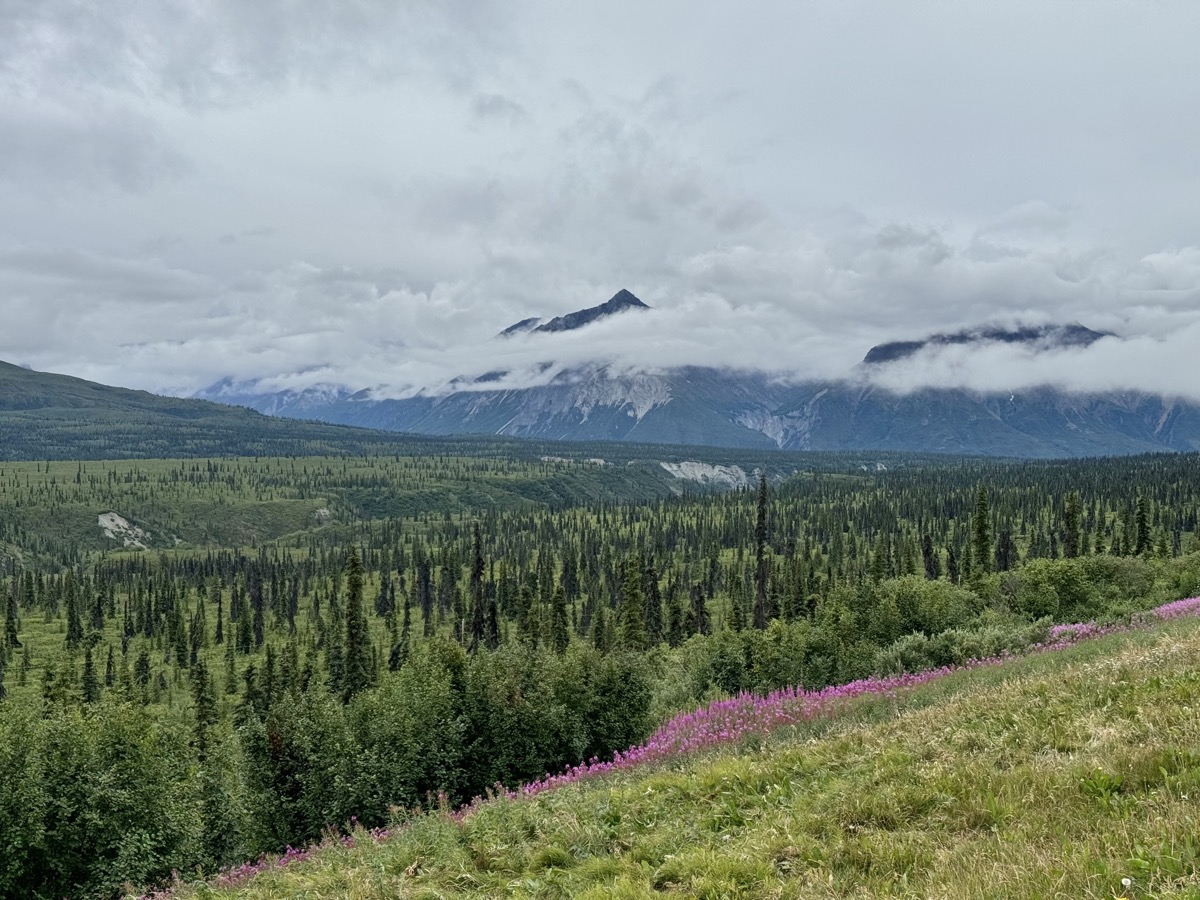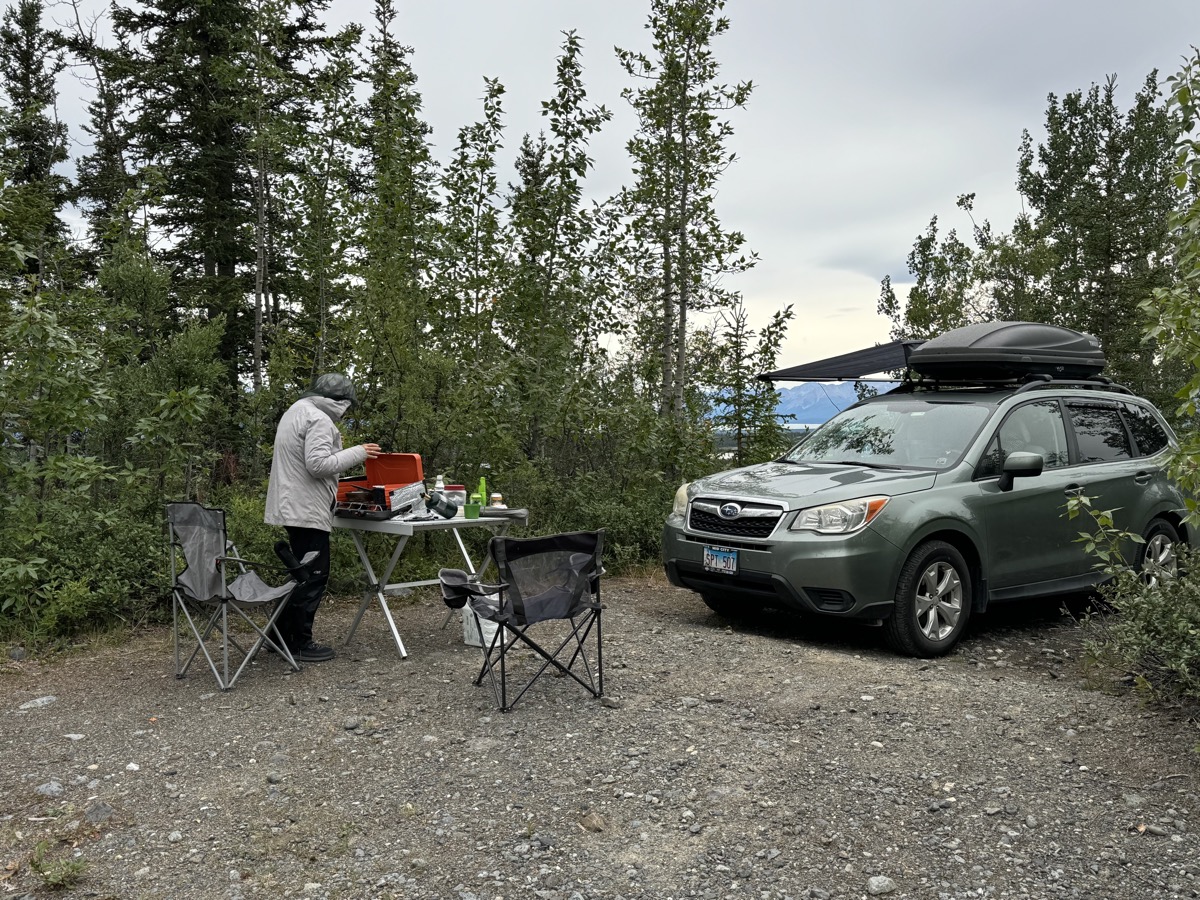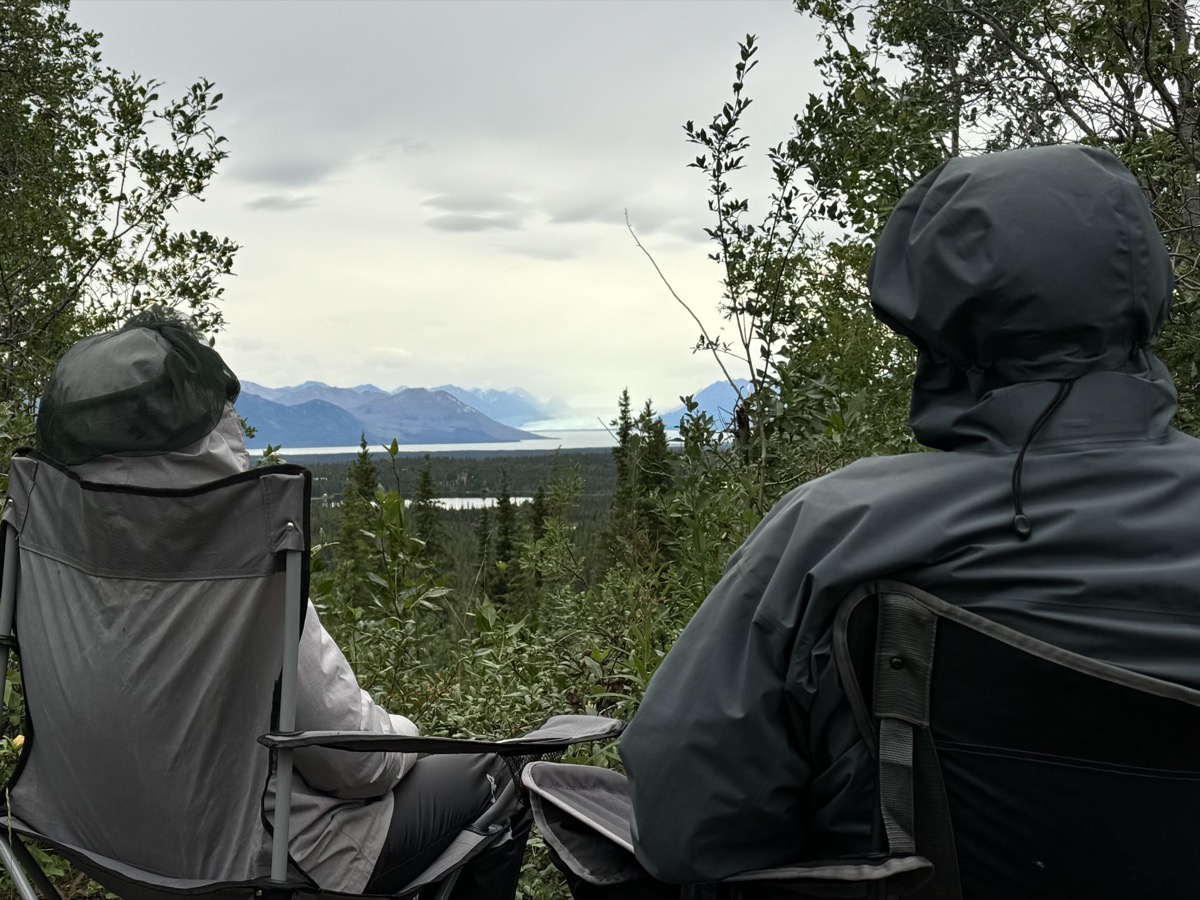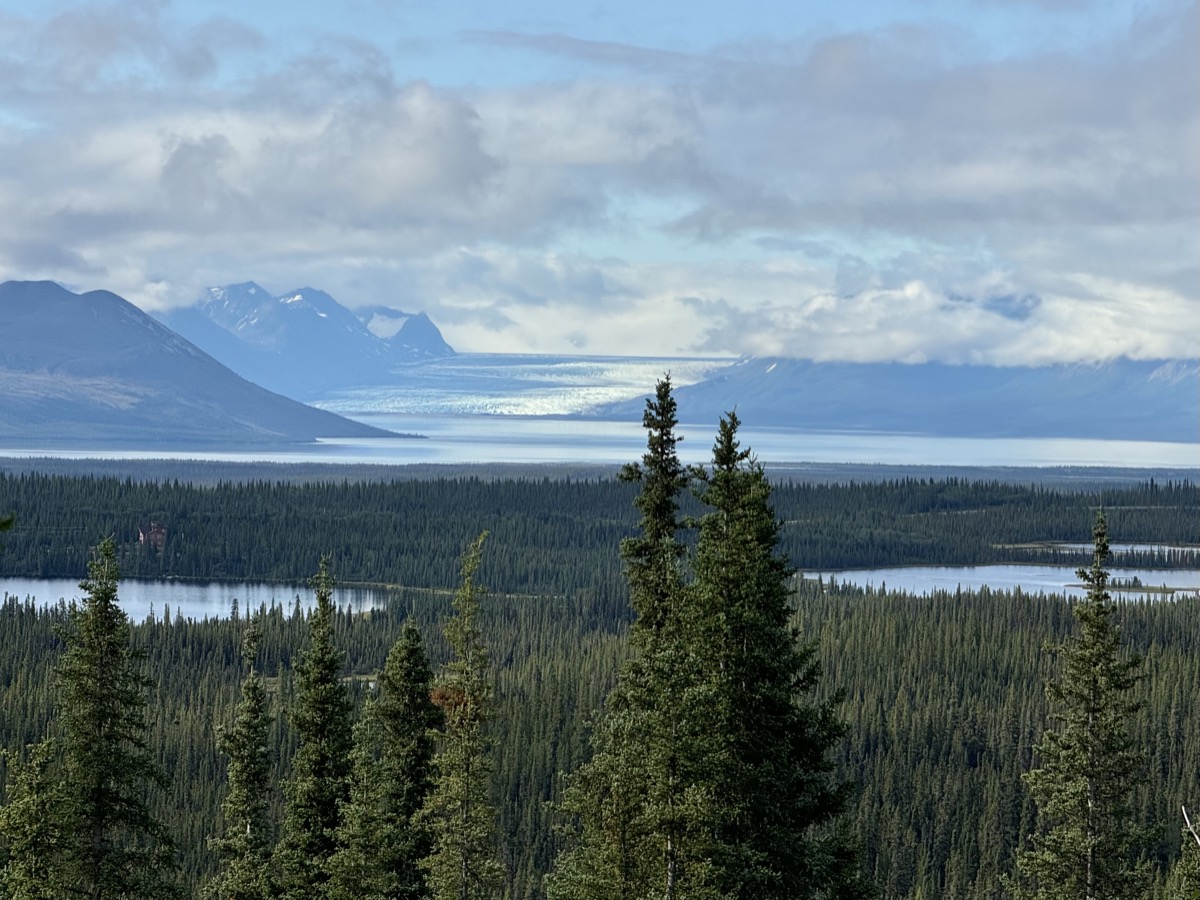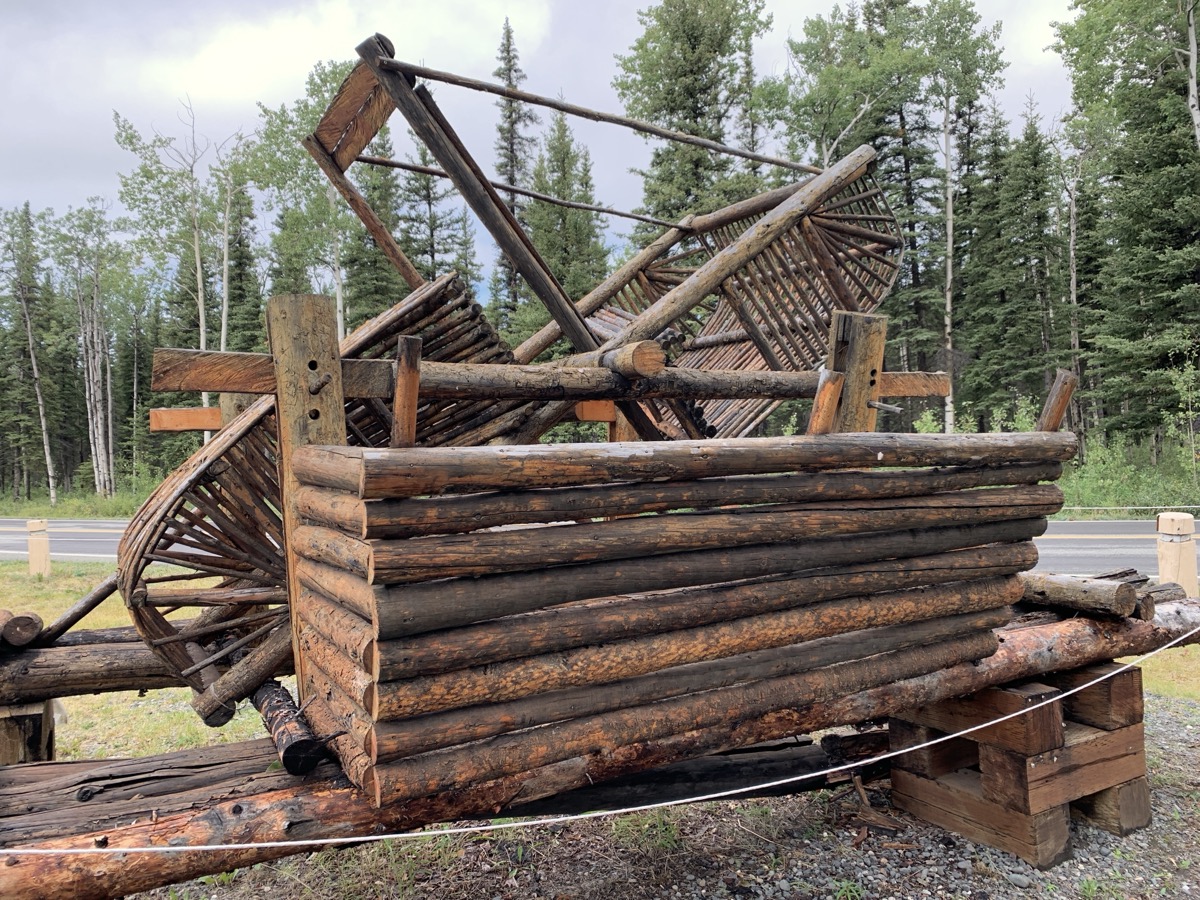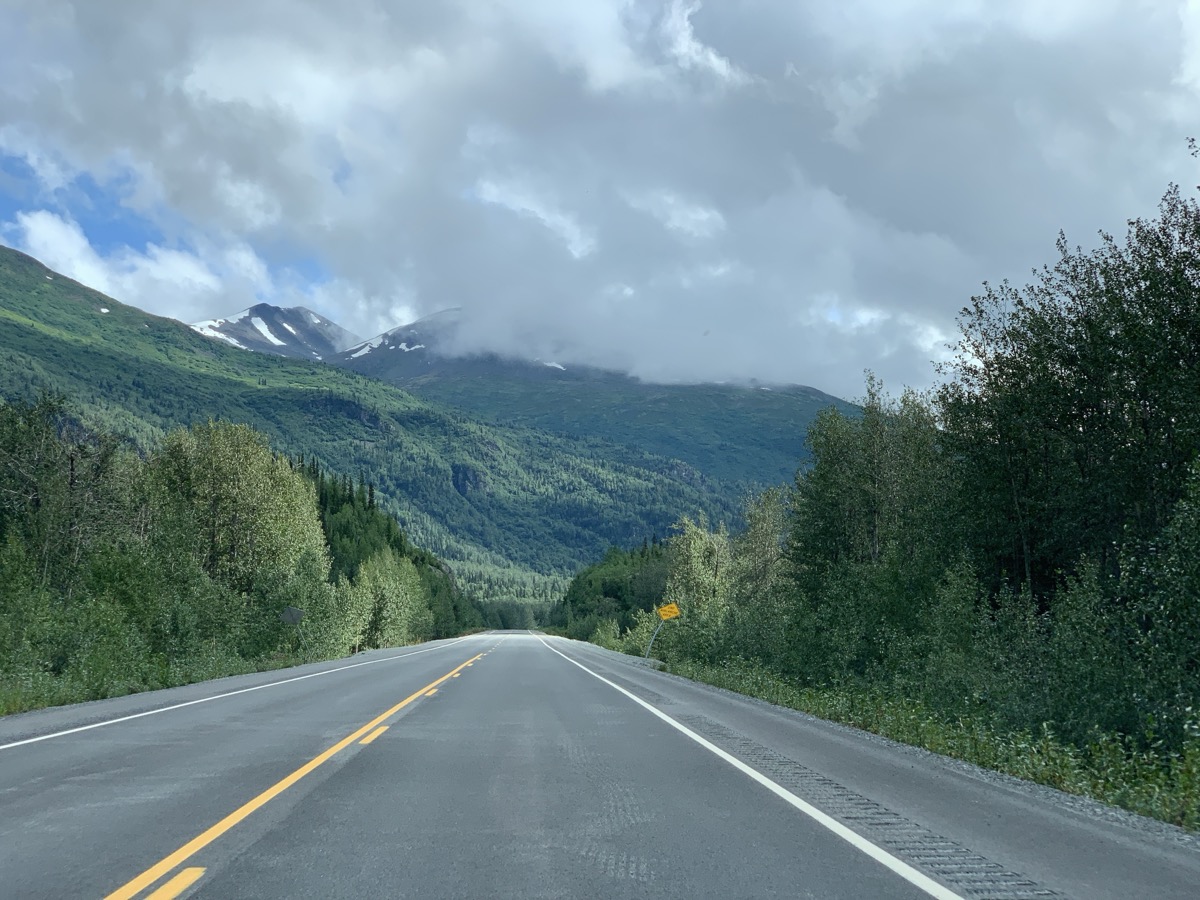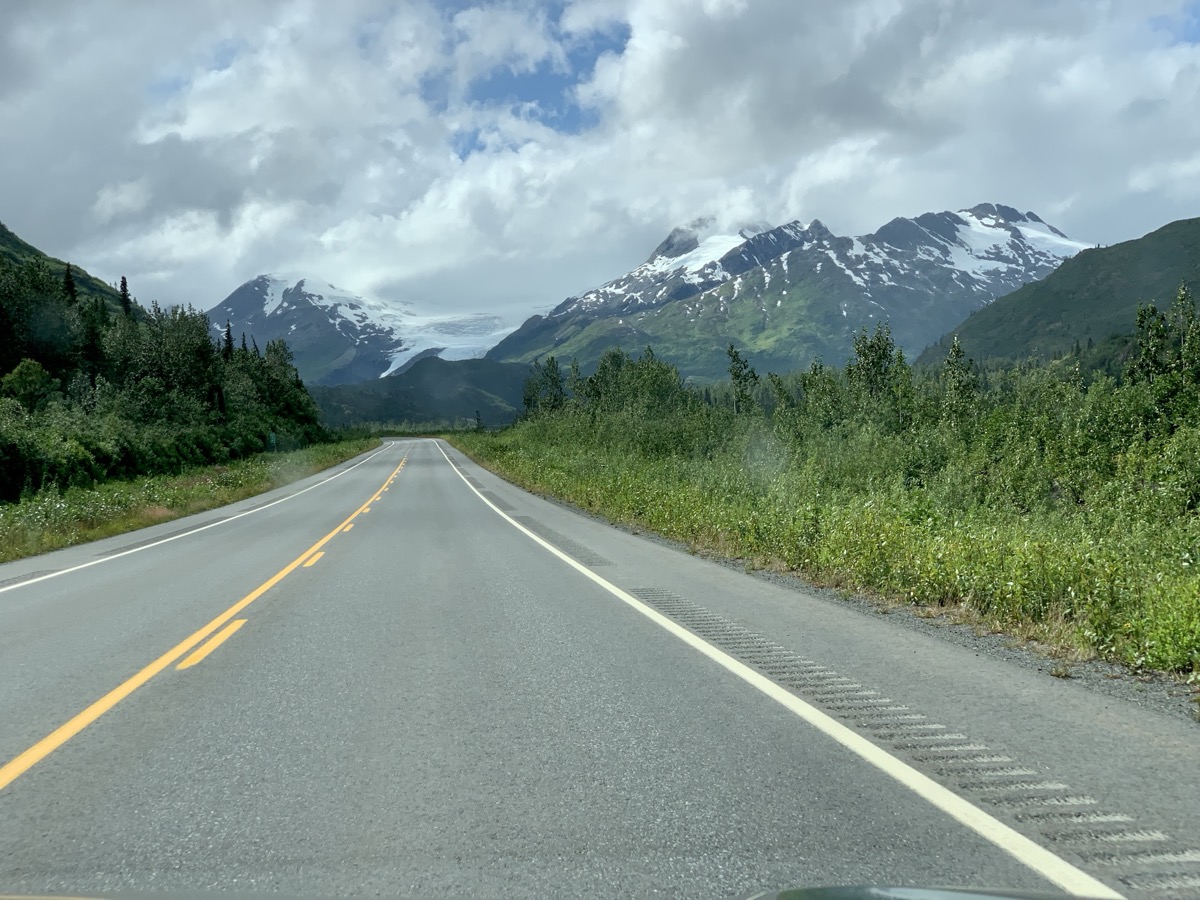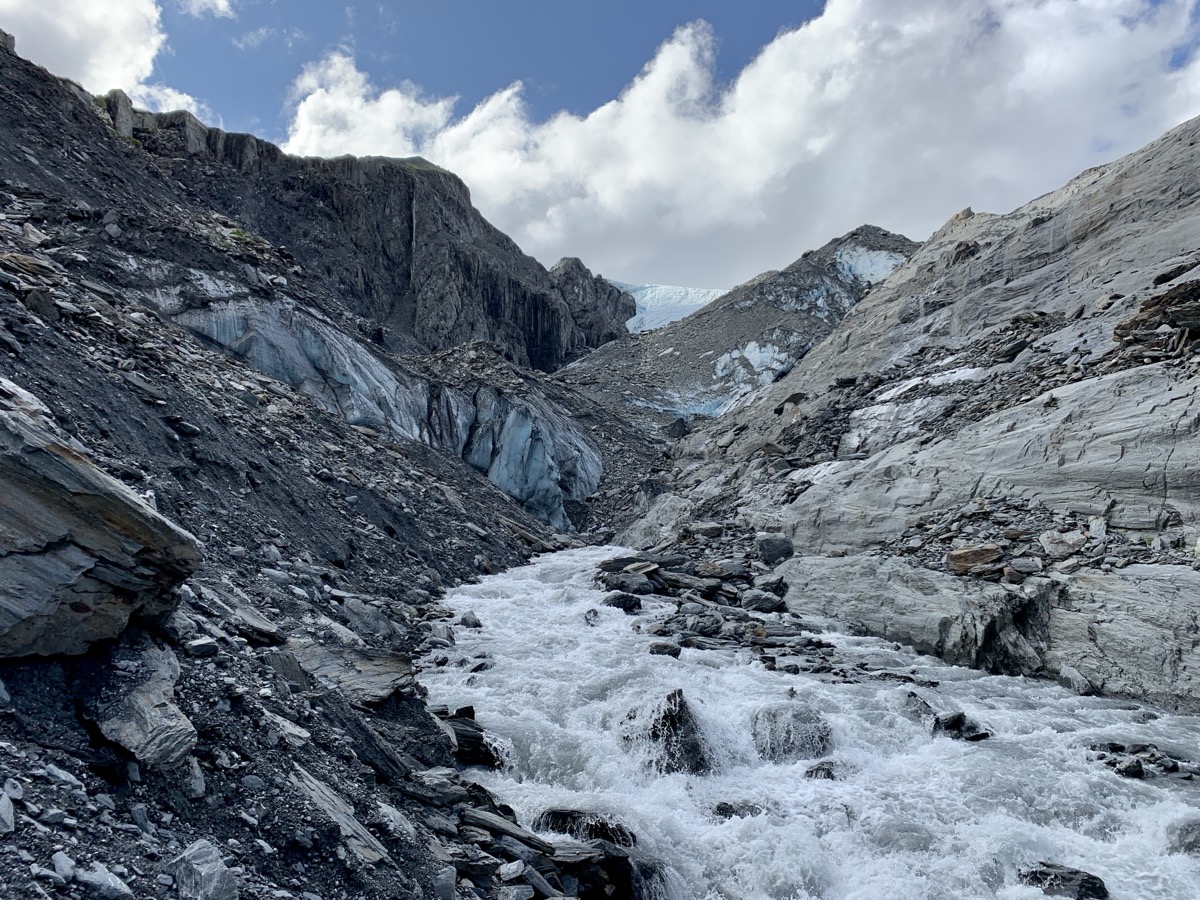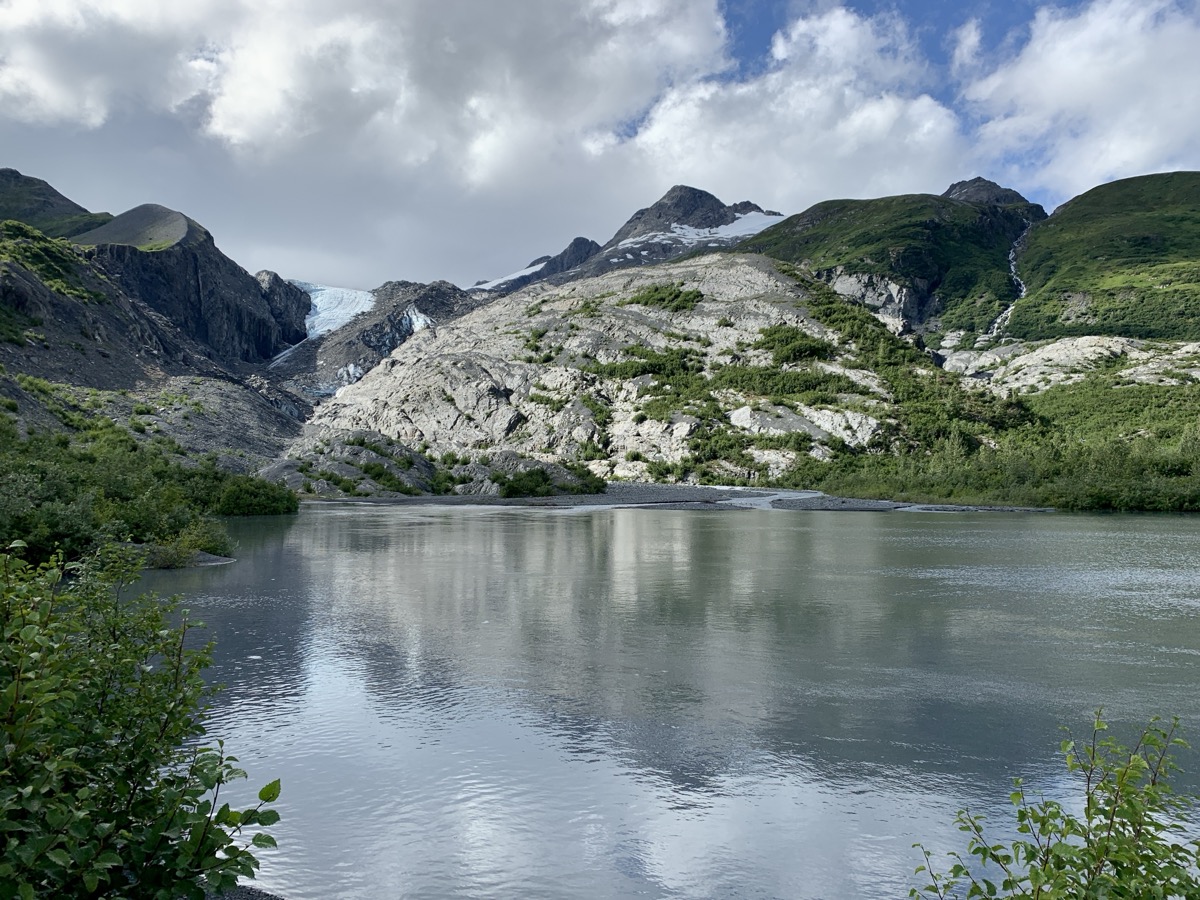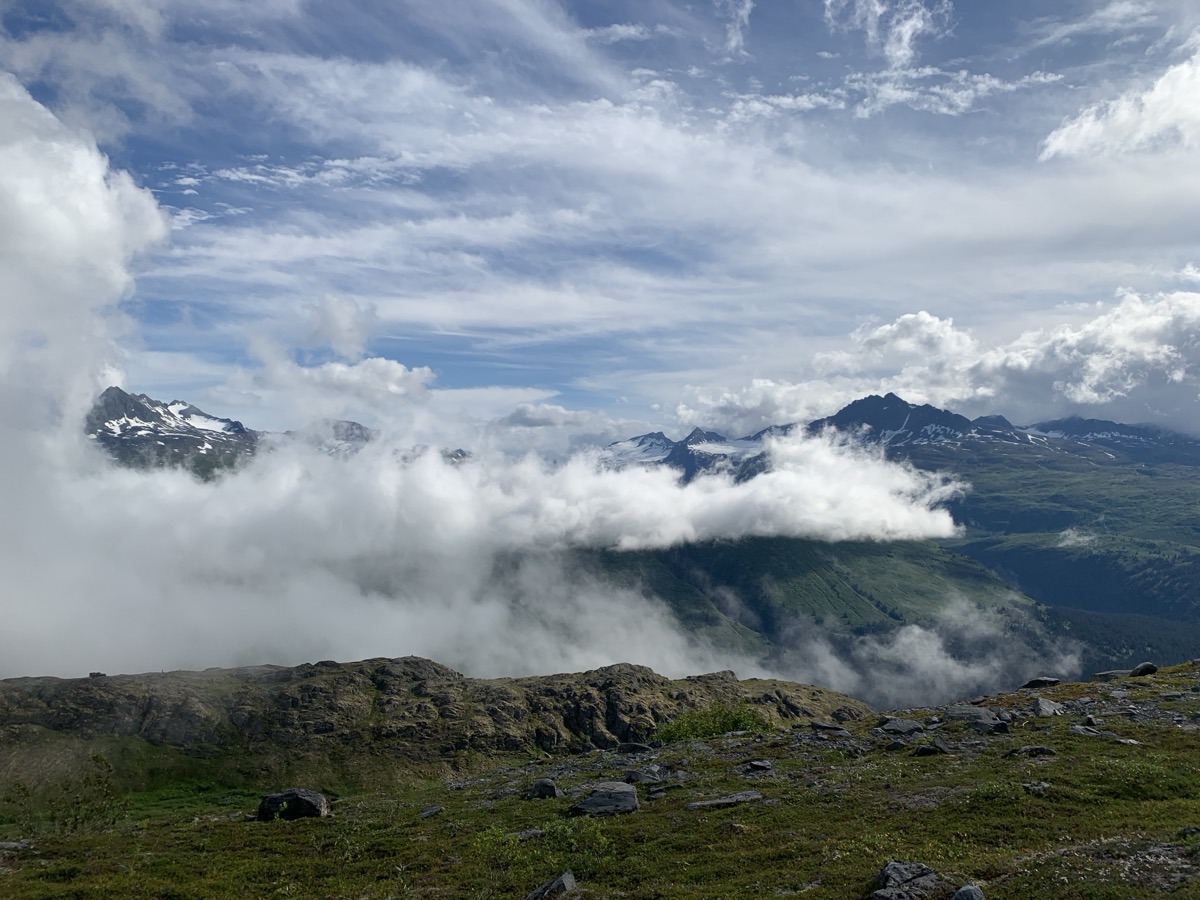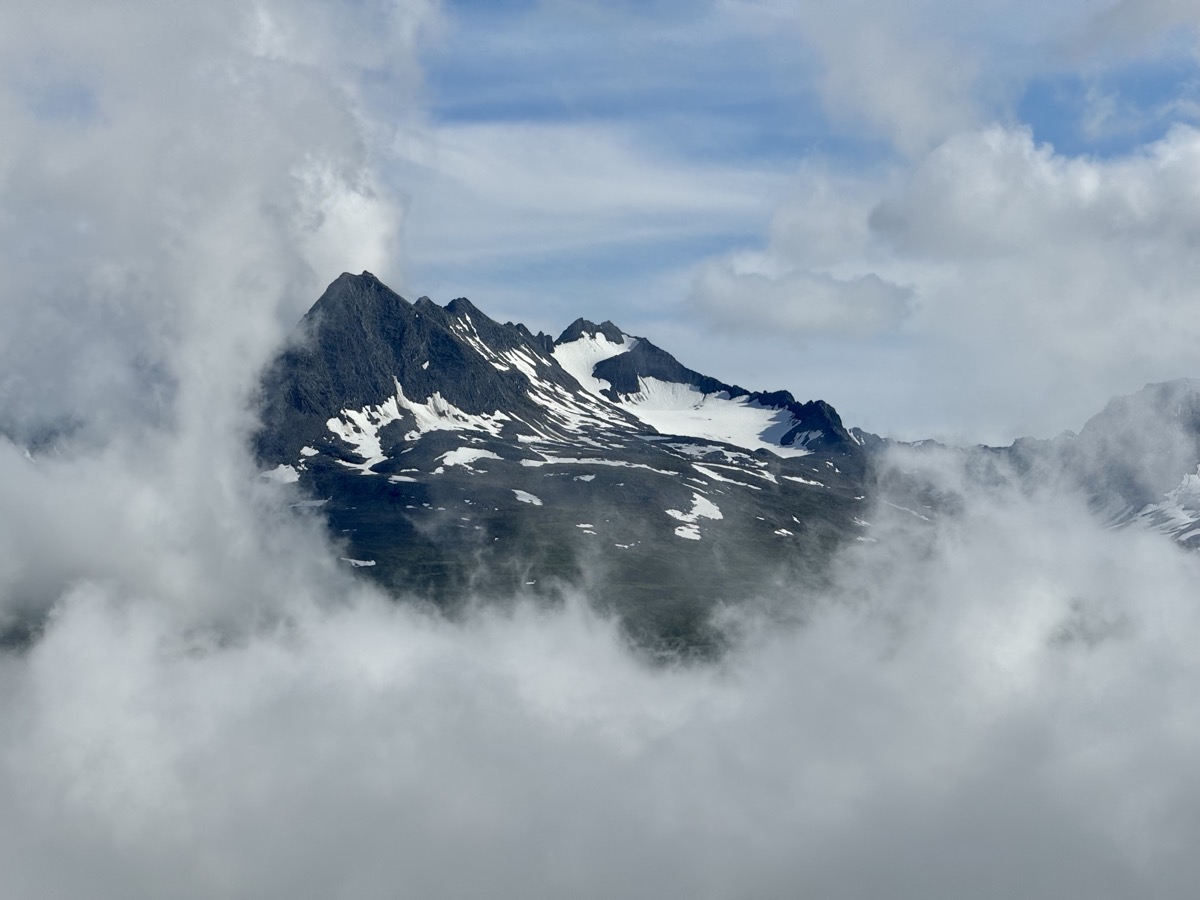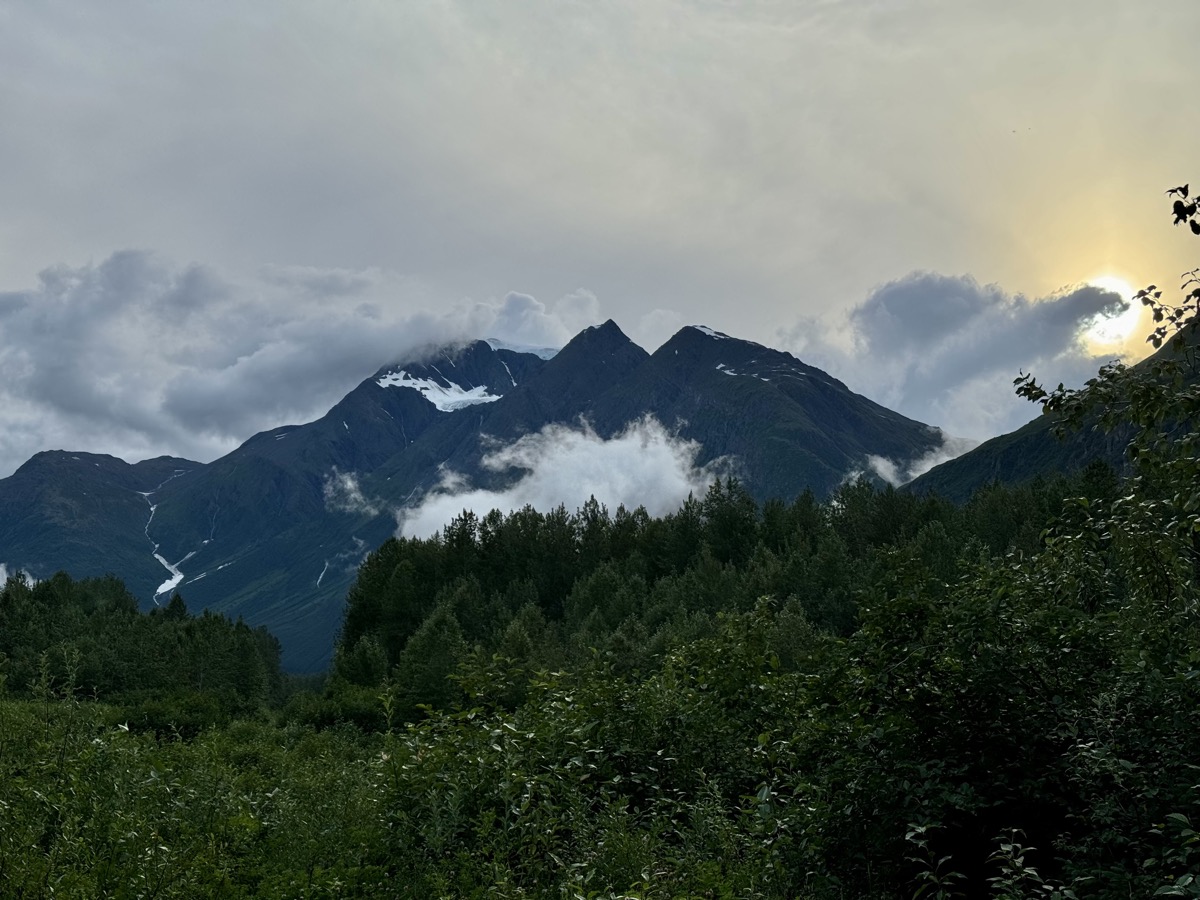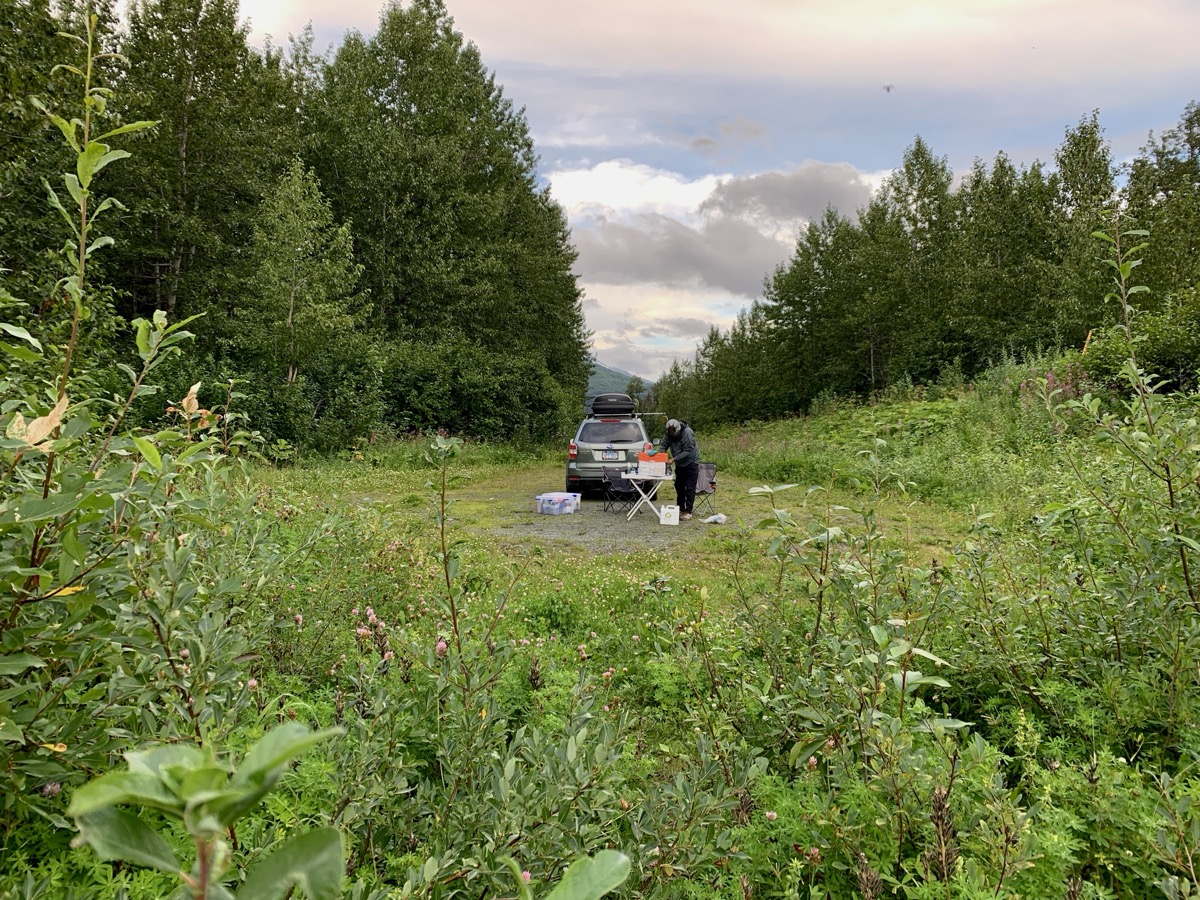August 14-17
Day 62. Finished packing our backpacks after breakfast and drove to Kennicott pedestrian bridge. We then left our car on nearby parking lot. Crossed the bridge, took shuttle to McCarthy Convenience Store and another one to Kennecott Visitor Center (as we did before). After conferring with rangers and lunch at Meatza Wagon we started easy walk up Root Glacier Trail. Considered a few camp sites and settled at a somewhat secluded/hidden between trees spot off Erie Mine Trail (on short connector between the two trails in Jumbo Creek camping area). We were close to trails, food lockers and pit toilet, and on top of lateral moraine with views down on the glaciers. We wasted no time and walked down to the ice’s edge to check access point before planned longer ice walking following day. The trail goes down steeply into the “ditch” which 100 years ago was filled with ice. We watched for a moment few people still on glacier. No problem.
The mostly “white” (exposed faster flowing ice) Root Glacier closer to us merges with and disappears underneath larger “dirty” (ice covered with layer of small rocks and dirt) Kennicott Glacier coming from behind small mountain ridge. Kennicott Glacier is 500-1000 m thick (estimate ?). Both glaciers are part of the same system coming down from ice field at the base of Mt Blackburn (4966 masl) and nearby peaks. Cracking sound (ice) can be heard frequently, sometimes quite loud.
Day 63. Micro-spikes on and walking sticks in hands, we explored the glacier for several hours, both the “white” and “dirty” parts. We adjusted to walking on ice quite quickly, meandered around bigger dips and cracks in ice, pools of standing water and small streams. We crossed the first “white” arm, climbed-up on “dirty” part in the middle and walked a bit on the other arm. Joanna walked further, but didn’t cross the ice all the way. Walking on the ice in warm sun is relaxing and does not feel overwhelming, but one never forgets how big the glacier is. Small rocks may look like frozen in a clear puddle, but ice underneath can be hundreds meters deep. Glacier is not silent: ice is cracking and small water streams rush somewhere, wind is sweeping down the mountains (rather quiet when we were there).
When we approached our camp, we saw black bear walking down a small hill 50-100 m away. We made some noise, but it stoically walked away towards other campsites. Shortly we heard horns sounding there. No danger to us, even though it for sure knew about food in lockers. Plenty of sweet berries to eat. Food lockers (worked also as tables) were good place to cook meals and meet other hikers. Open view on glacier. Quite far from tents. Joanna cooked, Piotr watched and listened to surrounding bushes.
Day 64. Short, lazy walk on the lateral moraine to see Root Glacier from higher above. Looking down one realizes how much ice is gone. The trail runs on old Erie Mine Rd (used to bring ore down), but we were too relaxed to hike up high to the mine itself. Many signs on the trail of bears feasting on berries. It was foggy weather with occasional drizzle. We walked to the big wash-out (Piotr refused to search for possible by-pass) and returned to camp. Joanna collected wild mushrooms for dinner. With no enticing camping options in McCarthy, we decided to stay another night and walk down next morning.
Day 65. On the way out we took to the air to get a good look of Wrangell Mountains and glaciers. Plenty to see on just 70 min loop around Mt Blackburn area. After walking down from Root Glacier we had barely had enough time for lunch at Meatza Wagon and shuttle ride to McCarthy airport. We flew with Wrangell Mountain Air arranged by St. Elias Alpine Guides. Pilot/guide, us and two other tourists in a 6-seater. We were lucky again to make the arrangement at last moment. Perfect weather. From airplane we could see where glaciers start on high peaks and ice fields, and then icefalls, glacier valleys, lakes and rivers. Hard to believe we walked on one of those glacier tongues.
The original plan was to now go back to Canada and visit Kluane NP, but we decided to spend a few more days exploring Wrangell Mts, this time from Nabesna Road. Two days to get there. We had enough time to drive back on McCarthy Rd to Gilahina Trestle. Camping spots at the bottom were occupied and/or not too interesting, but we noticed a little earlier small path going into the woods – railway tracks leading to the trestle used to run there. Great, quiet camping spot and history in sight.
